Inaugural NipperFest Packed with Local Talent was the Hottest Ticket in Town
Free music started busting out all over Schenectady the day before Springsteen tickets went on sale at the Knick/Pepsi/Times Union/MVP, causing a noisy-nasty sticker-shock shit-storm.
On Saturday came the longest and loveliest of these freebies, also the hottest. Daylong NipperFest put 15 acts on two stages in Central Park’s Music Haven from 11 a.m. to 10 p.m. (And, watch this space for reports on Sammy Miller and the Congregation Sunday at Music Haven.) As a bonus, two baseball games on the field visible from the hill behind Music Haven offered something else to watch. That was free, too.
Does the Boss realize most working-class folks associate “boss” with abuse, so he trashed his working-class hero rep accordingly? And do weak shows by Todd Rundgren and Brian Wilson last week also signal a trend, classic-rock-wise? But I digress.
Thursday, Jazz on Jay (actually, near it) presented hip post-bop jazz by the crackerjack Dylan Canterbury Quintet in Proctors Robb Alley. Friday night, 90s indie-rockers Better Than Ezra headlined Schenectady County SummerNight. Beer trucks delivering brews for this State Street fest would have drowned out Thursday’s jazz if it hadn’t been moved inside…
No offense, but I missed Derek Wolfe’s “Star-Spangled Banner” launching NipperFest Saturday. When the Navy stationed me on the Black Sea coast of Turkey, my buds and I fled into the lobby at the on-base cinema to avoid standing at attention when the National Anthem played before the midnight movie – the “mid-flicks.” But I digress again.
You could tell which NipperFest acts were well-established, drawing loyal, often older, fans; and which younger artists or bands drew their contemporaries.
No age-demo could categorize the woman pushing two Chihuahuas in a baby stroller, the guy skate-boarding under an umbrella, the odd-couple – one loose-limbed with tattooed scalp – who soloed then danced together as Sirsy rocked the main stage, the oblivious non-fan folks who blundered into the park wondering WT-Loud-F? and headed fast for the food trucks, the beer. Super-fans who sang every lyric along with the mostly solo acoustic troubadours on the second state constitute a fan(-atic) category all their own.
Here’s how it sounded and felt. Noting how it smelled is easy: various and delicious in a barbecue sort of way. As at SPAC’s Freihofer’s Jazz Festival in June, acts roughly alternated between the main Music Haven stage (hereafter the Main) for full bands, and the picnic pavilion (hereafter the Pavilion) for acoustic acts. One Main act, Sirsy, is a duo, however; and one Pavilion act, The Tradition, is a trio.
Side B was rocking on the main stage as I sweated my way into the place at 11. 94 degrees, no cooling wind, and my 96-ounce water bottle emptied by the minute. They pumped engaging classic-rock-sounding riffs with fun running-around/fast-riffs punk-rock energy. Sun-splashed seats on the flat below sat empty, fans perching in the maples’ shade on top of the hill.
Young Side B fans up there applauded songs when the titles were announced, even before the band started playing them. “The Mountain Song” earned this welcome even before pink-pantsed guitarist AJ Horton ran – really, ran! – down through the crowd, spraying riffs all over the place. Good skills all around: Dylan Travison. drums; Eric Mitchell, AJ Horton, guitar; Eric Mitchell, bass and strong/high-voiced singer Ian Justino. Showing just where they came from, they gave Led Zeppelin’s “Whole Lotta Love” a vivid, powerful ride.
The roofed pavilion stage offered shade, but no stage, yet artists seemed happy with the corner-of-the-room performance space since it sounded good and the space felt intimate.
Every artist exulted in playing on stage again, so the emotional lift felt instant, unanimous.
Up first in the Pavilion, the Tradition: writer-singer Ralph Renna strummed acoustic guitar, flanked by pickers: Peter Anello, guitar, and guitarist-mandolin player Arya Chowdhury. Renna name-checked Elvis and the blues as influences, but their strum-and-pick guitar grooves said “Workingman’s Dead/American Beauty.” Their best originals – Covid survival hymns “Oh, Say Can You” and “Without Wings” – had a beautiful workingman’s solidity. But grafting the Dead’s “Going Down the Road Feeling Bad” onto “Mind Your Own Business” worked less well.
Glass Pony next evoked nostalgic, psychedelic echoes on the Main, electric and elastic. They earned their website’s description: “high-energy psychedelic groove circus.” After the Tradition evoked acoustic Grateful Dead in the Pavilion and Side B charged the place with punk glee, Glass Pony made music in circular motion, inviting us in by surrounding us. Guitarists Eddie Hotaling and (lead) Greg Pittz spun songs from quiet noodling and chants as drummer Chanda Dewey and bassist Jeff Picarazzi gave an energetic undertow. They went deep in “Bottom of the Ocean” and cosmic in “Too Close to the Sun.”
In the Pavilion, Josh Casano used strummed guitar loops with tapping and picking to sound like more than one guy, and sang, mostly, and sweetly, of family. Both daughters, subjects of separate songs, ran up close as dad sang their praises.
The Bad Mothers blasted post-grunge, grinding rock on the Main, sonic polar opposite to Casano’s gentler odes, though his up-tunes packed impressive energy. Recently signed to Nashville bad-ass Shooter Jennings’ record label, the Bad Mothers went blunt-force right away, bassist Kevin Bohen head-banging, long hair flying and the band revving a ferocious churn. For a compact crew – guitarists Matt Dalton and Pat Flores, drummer Brian Chiappinelli – they made a vast, voracious sound. Even when they assured “Everything Is Alright,” they projected a confident, thrilling menace. As they urged from a stuttering waltz into “Five to Seven,” Casano – having just finished in the Pavilion – ran in jumping joy past the stage, arm-waving, hardly touching the ground. He was right.
In maybe the most dramatic contrast all day, Angelina Valente sat behind a keyboard in the Pavilion to croon quiet tunes including an ode to a woodpecker as muse and a gentle urge toward striving.
Back on the Main, more uproar, from Erin Harkes, accurately introduced as brassy and fronting the day’s biggest band with three horns, keyboard, guitar, bass, drums, and Harkes, her bad and brassy self. Etheridge-intense in up-tempo rockers including the chunky waltz “How Special I Am” to open, she sang Raitt-wistful in the almost-solo “New Year’s Day.” She brought Girl Blue drummer Josh Morris onstage to guest-strum guitar, and Sirsy singer, etc. Melanie Krahmer – more on her right soon – to co-sing “Fall Out.” No matter what was happening behind or alongside her, no way could you take your eyes, or ears, off Harkes.
Great contrast once again: Troubadour Reese Fulmer sang and played quietly in the Pavilion with a philosophical depth that carried big feelings in sincere and reflective, thoughtful clarity. Noting, for example, that “in death there is life” he also praised the peace of woodland walks. A fan waiting in the Main for Girl Blue to start pointed toward the Pavilion as Fulmer crooned there and remarked, “Sounds like Willie Nelson over there.”
And, again, strong energy on the Main as Girl Blue (born Arielle O’Keefe, hereafter GB) led a muscular, tasty four-piece: brothers Jimi Woodul, guitar, Ben Woodul, bass, and Josh Morris, drums. They started some songs almost as quietly as Fulmer in the Pavilion. At times, GB mused, voice gentle, like Suzanne Vega or Joni Mitchell, almost talk-singing. At full power, she raised the energy in a big way, as in her opener “Because It Moves Me” with its soaring leaps – a dramatic jolt she also gave “Fire Under Water” and “Heavy Heart.”
Caity Gallagher sang some of the day’s prettiest melodies in the Pavilion, emphasizing the beauty of her sound with wordless vocalizing tacked onto mid-tempo acoustic ballads. Most profound, since it preceded Covid and celebrated life returning after winter, “Spring” has only become more timely in its message of hope. She bravely introduced “All My Days” by noting she’d never performed it live before – and other performers also used NipperFest to bring fresh songs to the stage.
To the White Stripes and Black Keys, let’s add Both-Red Sirsy, playing next on the Main. Both Melanie Krahmer and Rich Libutti wore red Saturday and are arguably as talented and accomplished as those better-known rock duos. Libutti joked that Krahmer sings and plays drums, bass (with drumstick on a pad), and flute “while I play the same three chords on guitar, over and over.”
Well, yeah, maybe; but they’re great chords, and he stretched out impressively at times. The songs are terrific rockers and Krahmer just blazed on everything. They started high, with “Like a Drum” about joy itself, took us way down with “Soul Sucker” about emotional parasitism, rebounded with the defiant “Stand” and the bluesy “Wish List” before celebrating their space-nerd anthem “Astronauts.” Krahmer’s a capella start to Nina Simone’s “Feeling Good” hit one of the top vocal heights all day, a fine lead in to their Covid survival anthem “Seven Seas,” the flute-powered “Revolution” and cheerfully defiant “Hell No!”
Singer-songwriter Sydney Worthley built her Pavilion set on an interesting and effective dynamic. Her songs generally started quietly, like Reese Fulmer’s, then built in emotional and sonic force – but then often ended at their high points rather than with a comforting or summarizing coda. They seemed to end in mid-air, or mid-feeling; getting us up there with her and then letting the feeling echo so the listener could resolve it. Her opener “Sinking Ship’ set us up for this, giving good heartache without the obvious solace of resolution, and “Rose Colored Glasses” later did the same soar-and-stop with equal power.
Super 400 sounded super indeed on the Main; a bluesy, big-beat family affair, like husband and wife Sirsy – especially when daughter Ellie bounced onstage into Joe Daley’s drum stool between parents Kenny Hohman, guitar; and Lori Friday, bass. Ellie’s guest-spot marked a boundary between strongly built originals and shrewdly selected covers. “Blast the Message” – perfectly named opener – kicked the door wide for their muscular tunes including “You Are My Light,” the new “I Dream of You” and “Only Child.” After Ellie skipped offstage, they mixed covers and originals. Friday sang the Pretenders’ “Middle of the Road,” keyboardist Chris Carey tackled “The Seeker” by The Who and Hohman took over the Beatles’ “Bulldog” after a cool Carey intro. Their own “High Hopes” closed big.
Then Sawyer Fredericks closed the day’s music at the Pavilion, singing solo in a well-paced set that showed off impressive sonic and emotional clarity in powerfully personal songs. His voice cut through the heat haze, a laser of focused feeling.
Many songs dealt with responsibility from opener “I Am to Blame” through “I Should Have Known Better;” but he also accused – “Lies You Tell” – and excused. “Born” both credited his mother for protecting him and sought independence to make his own mistakes. He rhapsodized on love in “So Beautiful” and reached back for covers of “Act Naturally” and “A Man of Constant Sorrow.”
As in the Pavilion, acts took the Main stage in renown order, ending with the most celebrated.
The Figgs played a buoyant closer and asked for more time at the end. Every artist told us how happy they were to play this sprawling free festival, but The Figgs seemed happiest. After three decades-plus, they rocked at punk velocity and glee but with veteran assurance and micro-tight riffing. At first, the pace was relentless, Pete Hayes metronoming at intensity just this side of frantic and deep in the pocket, the other Pete, Donnelly, surging strong on his faded green Fender bass and Mike Gent poking guitar licks into spaces in the rhythmic roar.
Some were funny, especially the fatalism of “I Lied to the Doctor.” But they were serious when Gent thanked the crowd for sticking around to see them after 14 other acts.
The Figgs have stuck around, too, since forming in Saratoga Springs in the 80s. The new “Time Travel” felt especially apt, leading to the 90s gem “Breaking Through These Gates” – just as The Figgs long ago broke through the gates that block local acts from bigger stages, bigger times.
They borrowed the Wings hit “Jet” to exciting effect, but their own songs stood up just as tall, fast and fun – like a roller rink or high school sock hop, and those are good things. They weren’t afraid to go from timeless to topical: “Reel Keeper” rued the Covid plague, and other new songs from “Chemical Shake” also hit hard – “Cataracts” and “Hot Vice,” which drew Hayes from behind the drums to sing as Gent took over the kit and Donnelly played guitar. “Waiting for the Sun to Rise,” an album older, also packed an urgency that made the song’s release exhilarating and the impact of “Go-Getter” could have been measured in dancers’ sweat.
Gent and Donnelly stood on their amps in “Something’s Wrong” and it felt conclusive as Hayes came down front and Gent and Donnelly unstrapped their axes. But the Figgs were as anxious to continue as organizer-host Jim Gilbert was to get an encore. So they revved up again in “Static” with a bit of Talking Heads’ “Same As It Ever Was’ grafted inside.
Near the end of their explosive, expressive closing set, Gent asked, in all sincere seriousness, “Is there a place where we can keep playing?” In the end, he volunteered “We’d play this again.”
Yeah, that works.
Unusual for any start-up, the whole thing worked due to thorough organizing in advance so the whole fandango felt seamless. All the artists played at their strongest, happiest best. A dozen food trucks fed everybody, the beer by sponsors Frog Alley flowed, though I didn’t see anybody over-served, and everybody cooperatively hydrated.
The heat was mainly an issue with the seating at the Main stage: Fans fled the over-heated seated flats before the stage for the shady summit of the hill or under trees alongside. When cloud shadows rolled overhead, some fans briefly braved the rows of green seats, then retreated as the sky cleared – until the sun sank behind trees and the stage house itself.
Techies arguably worked harder than the performers, Stan Denis engineering the Main stage PA and running the crew operating monitors at the Main and both PA and monitors in the Pavilion.
This was all free, thanks to sponsors Frog Alley Brewing, Putnam Place, Capital Region Living, Saratoga Living, Stewart’s Shops, CDPHP, Hudson Valley Community College, Capcom, Market 32, Krista Palumbo with Coldwell Banker, Forte Creative Group, Music Haven, and media sponsors WEXT and WEQX.
However, when announcer J Hunter proclaimed in the Pavilion that Nippertown wasn’t just a website but a community, he nailed it.





















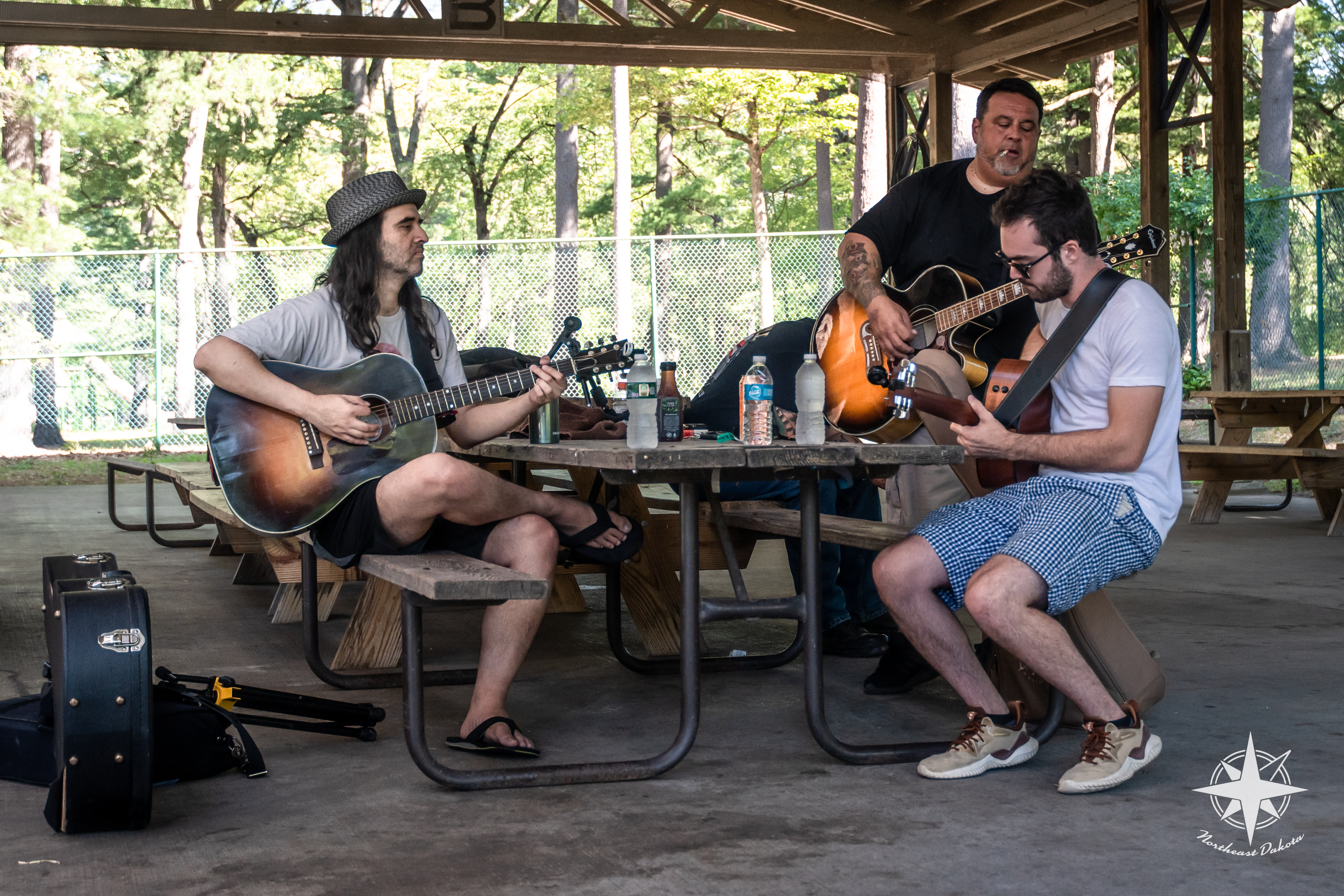
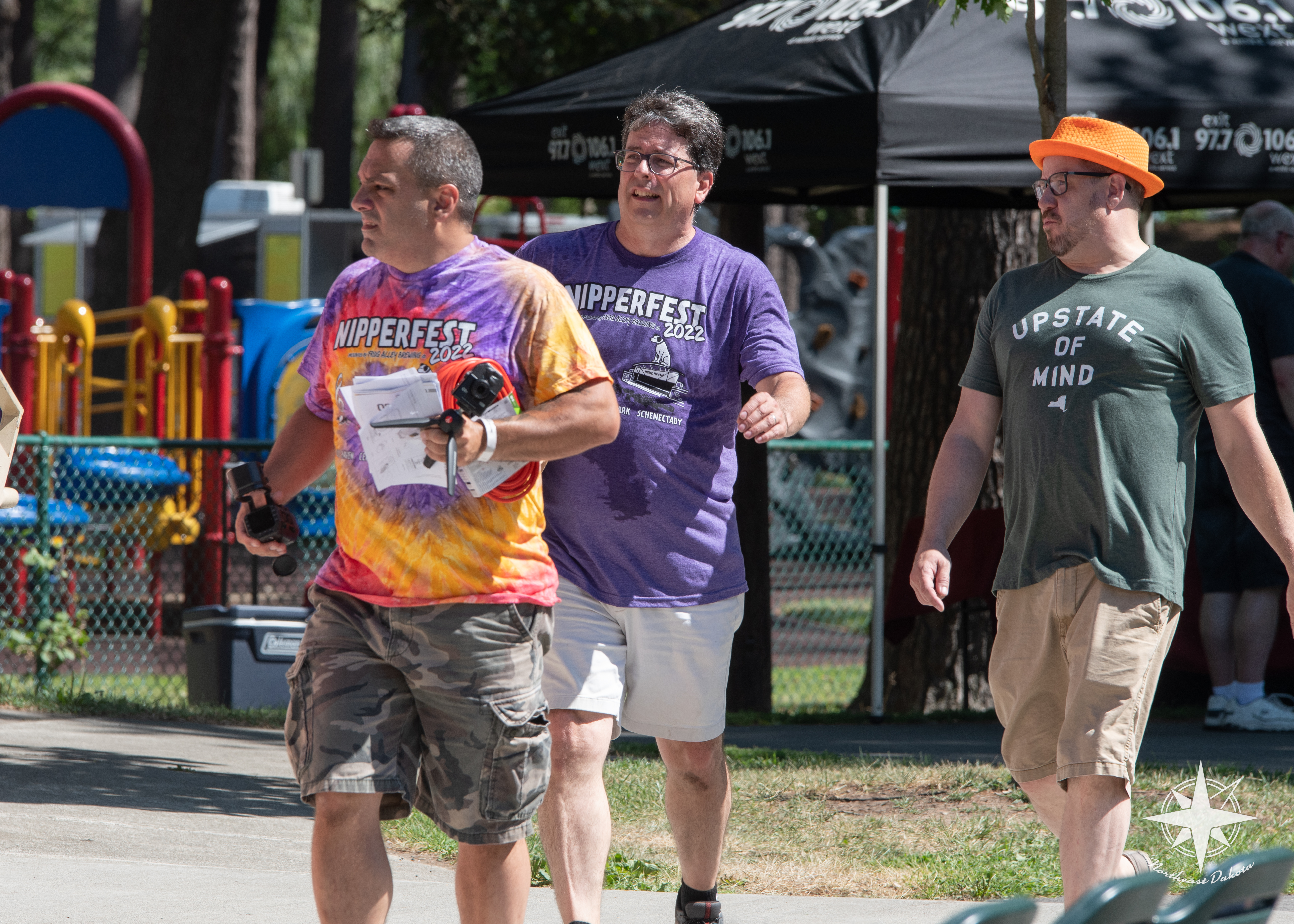
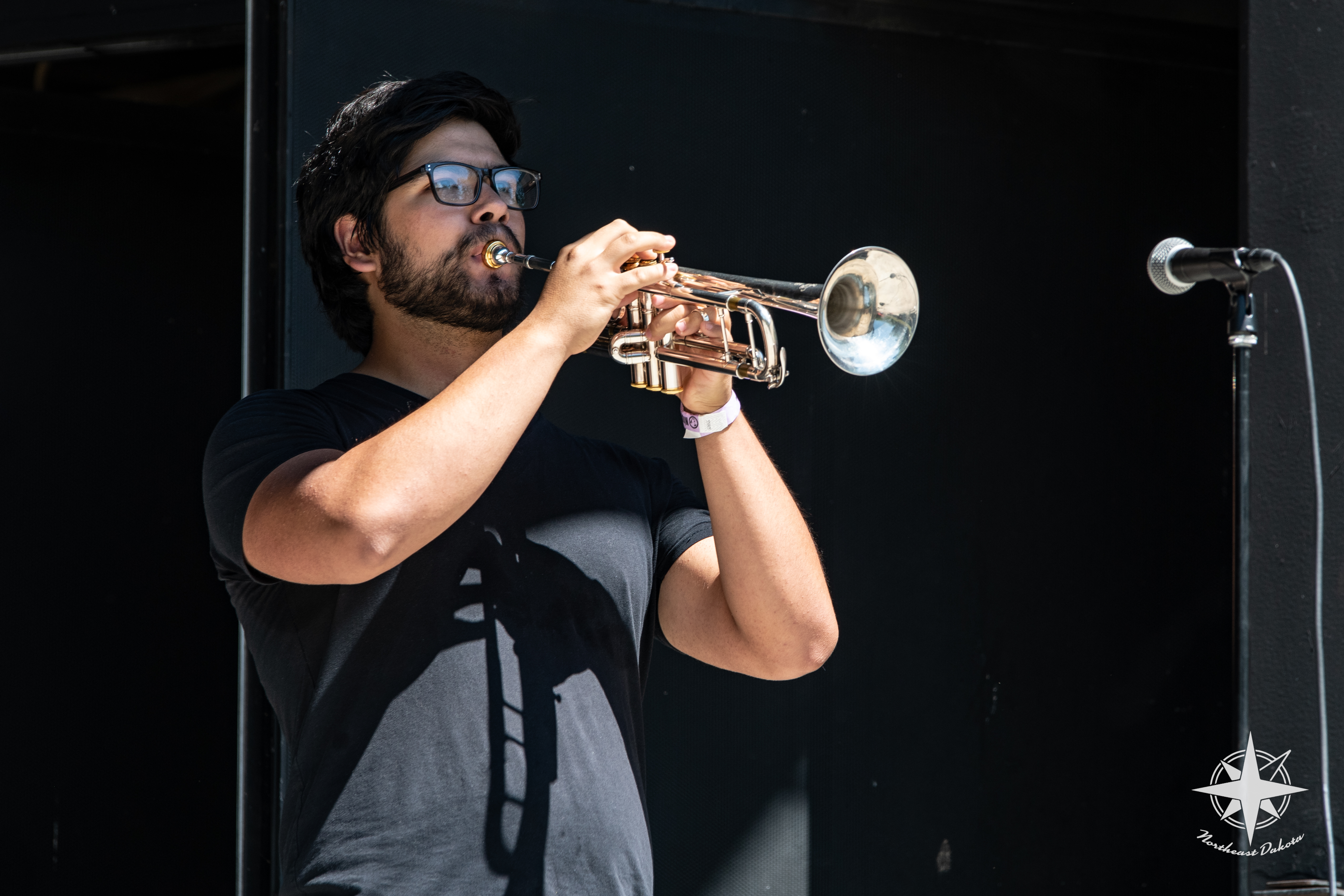

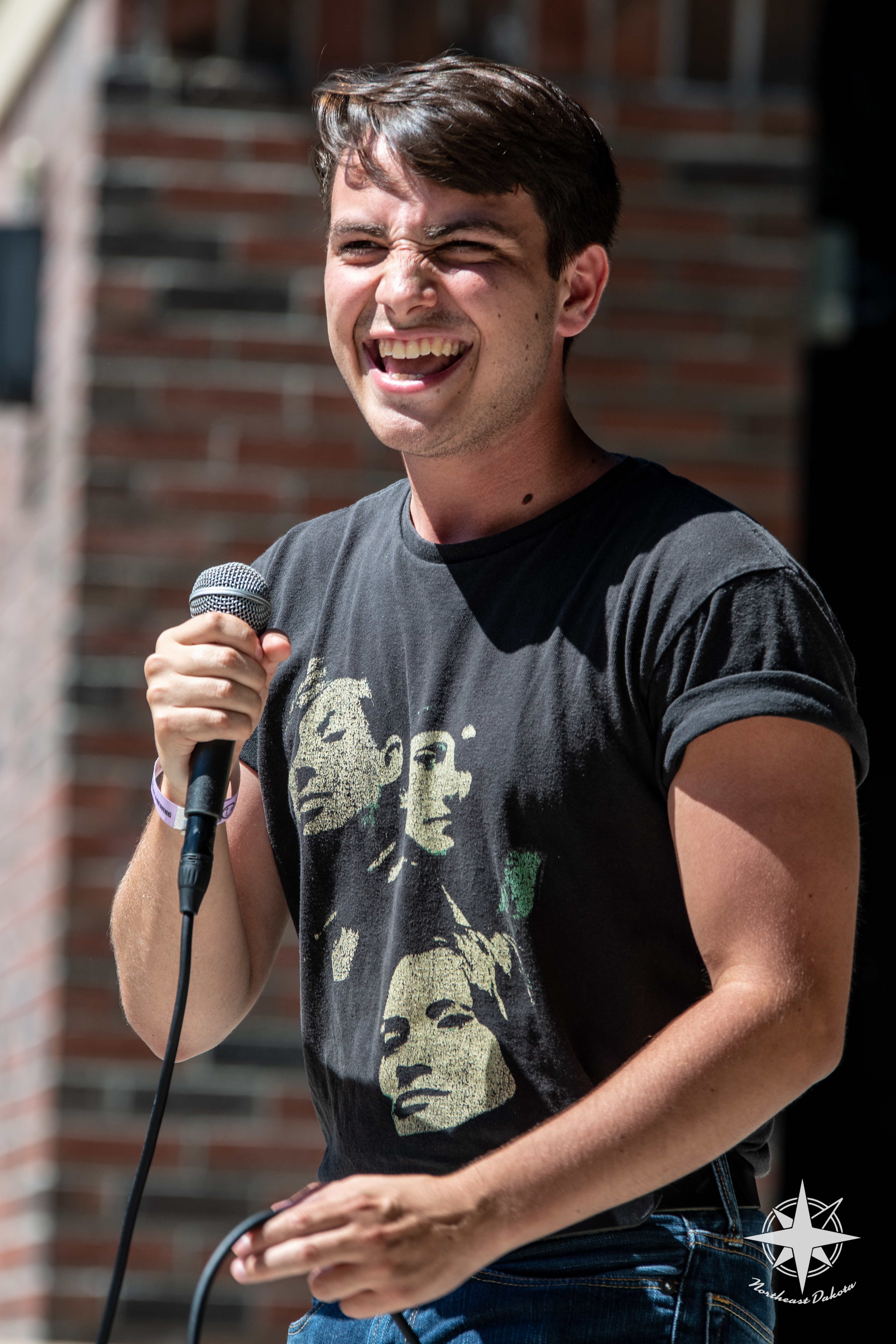
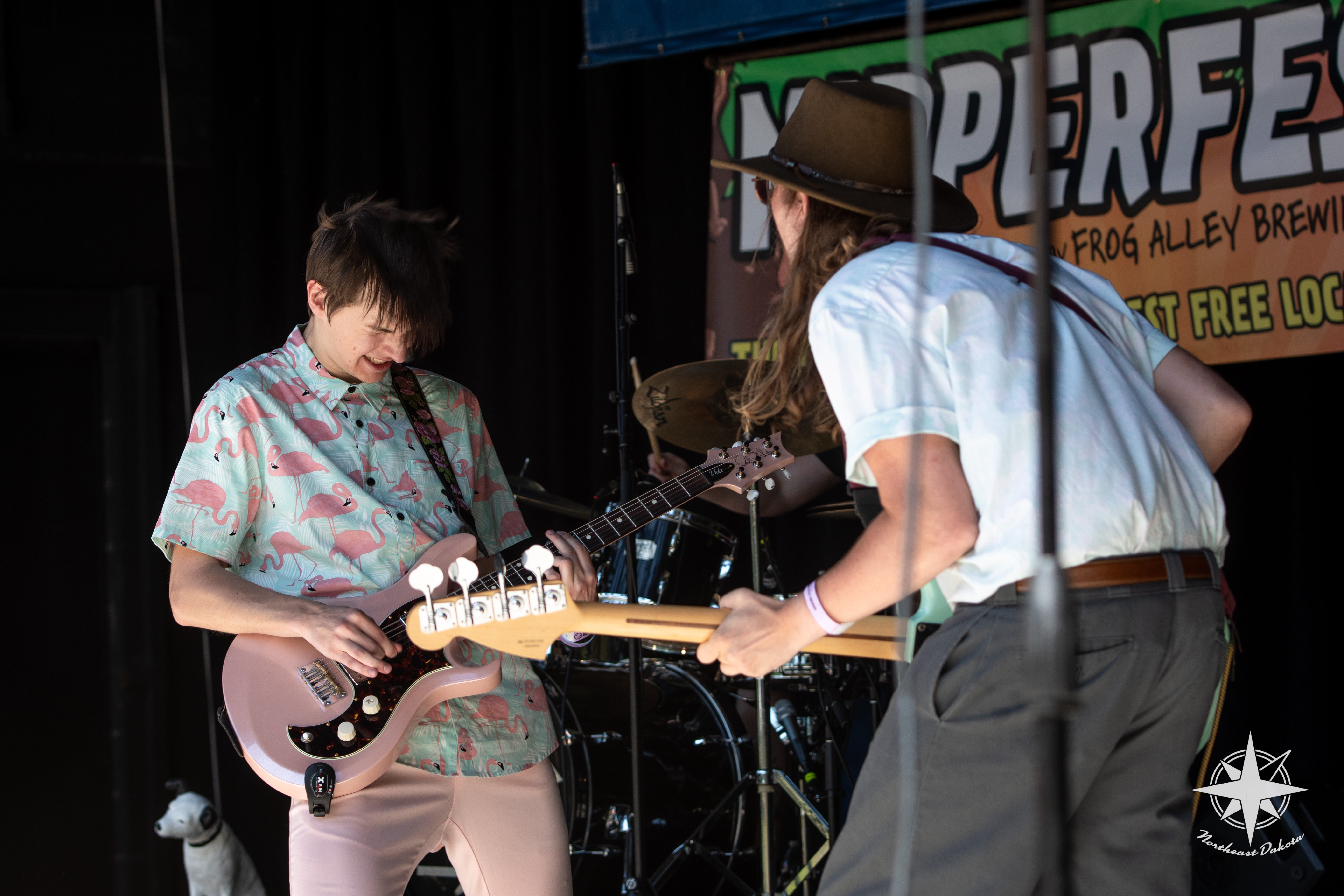
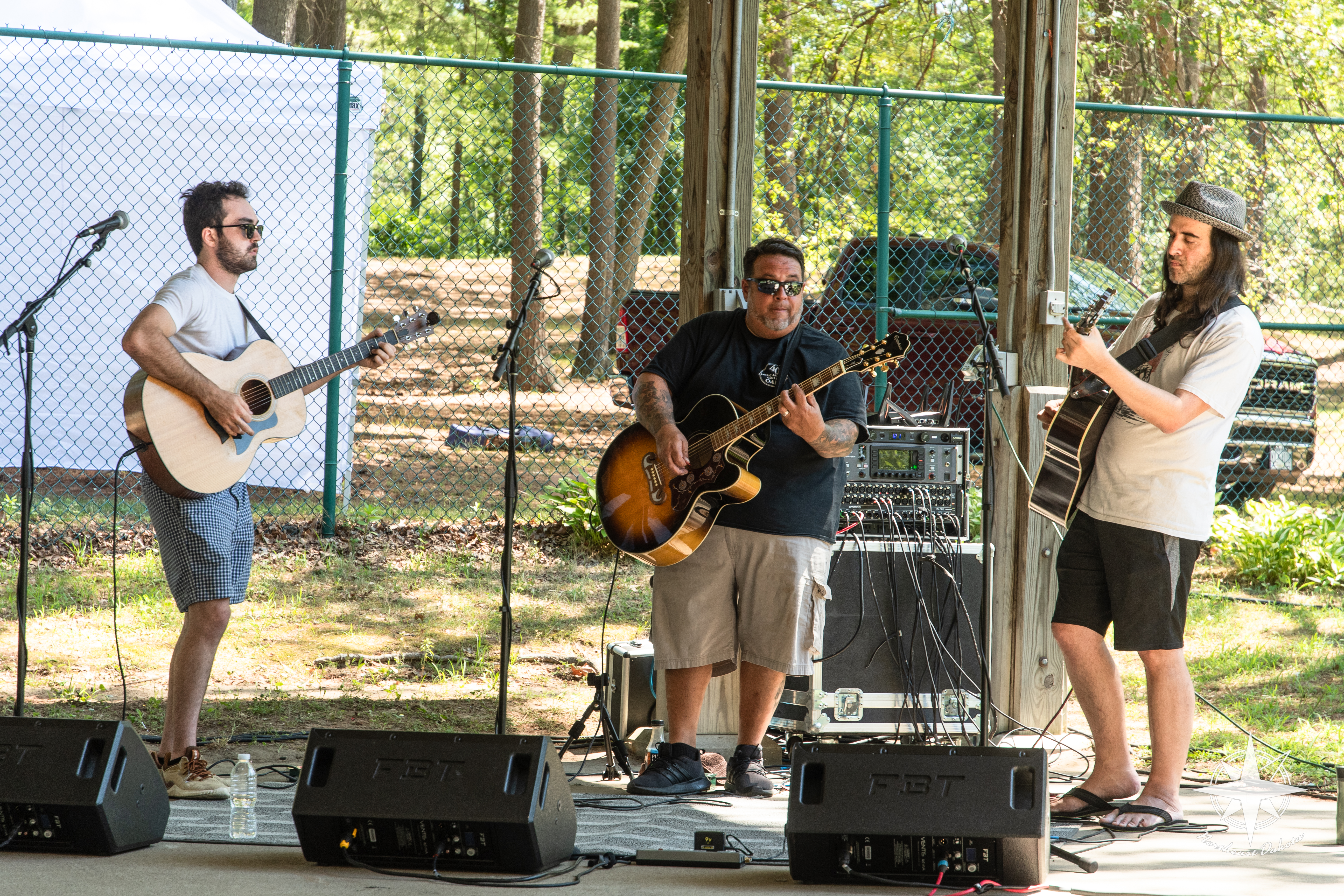
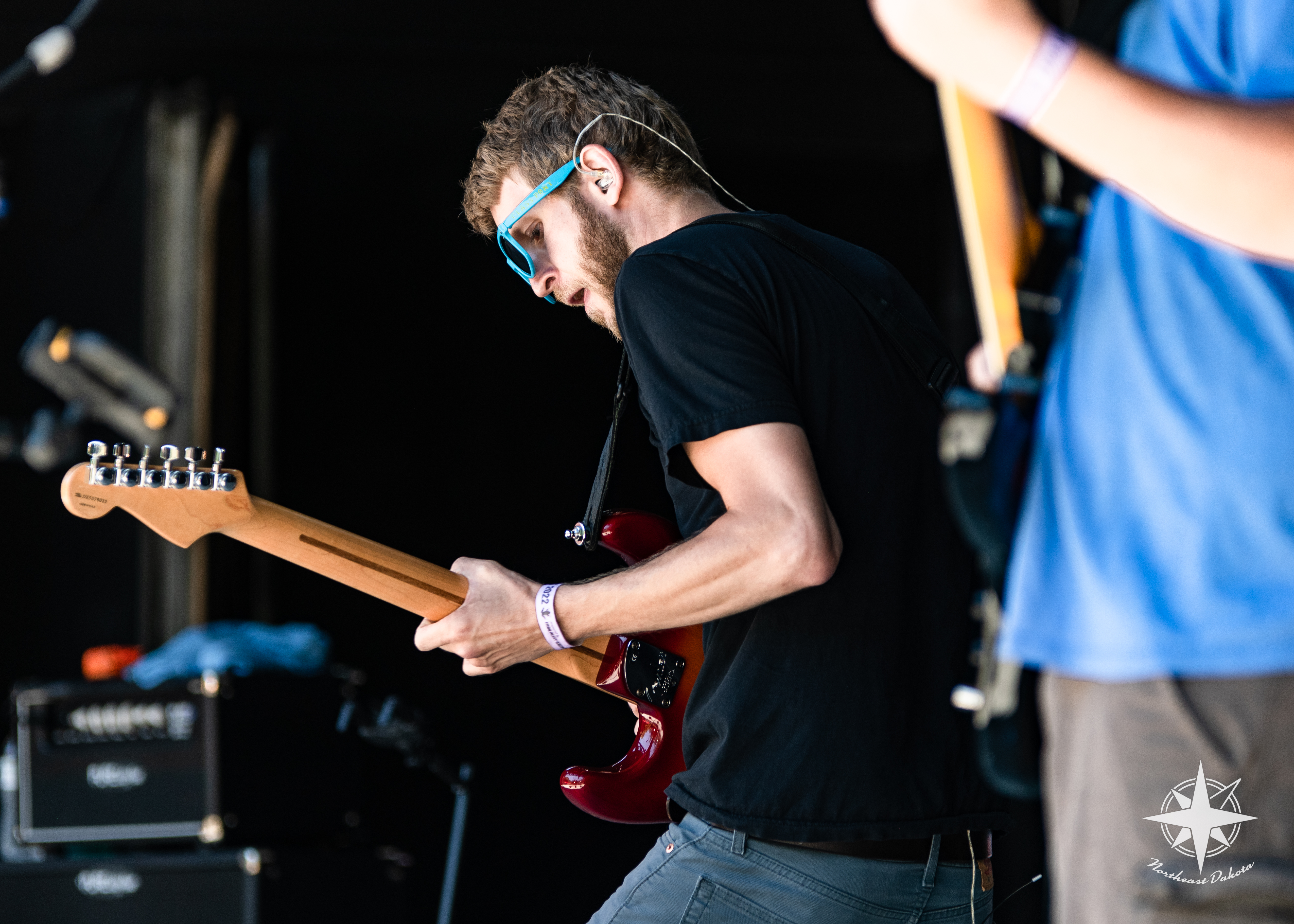
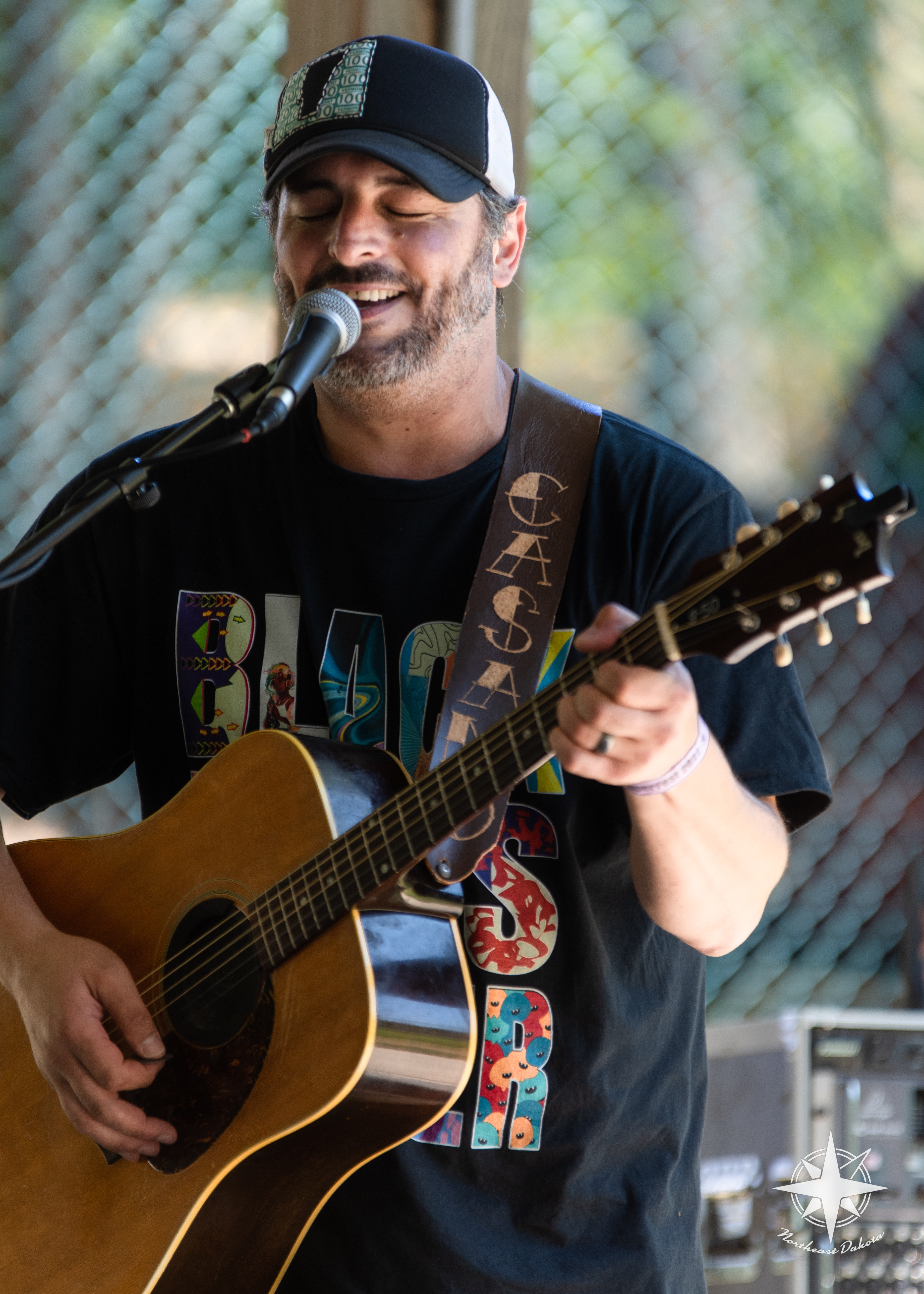
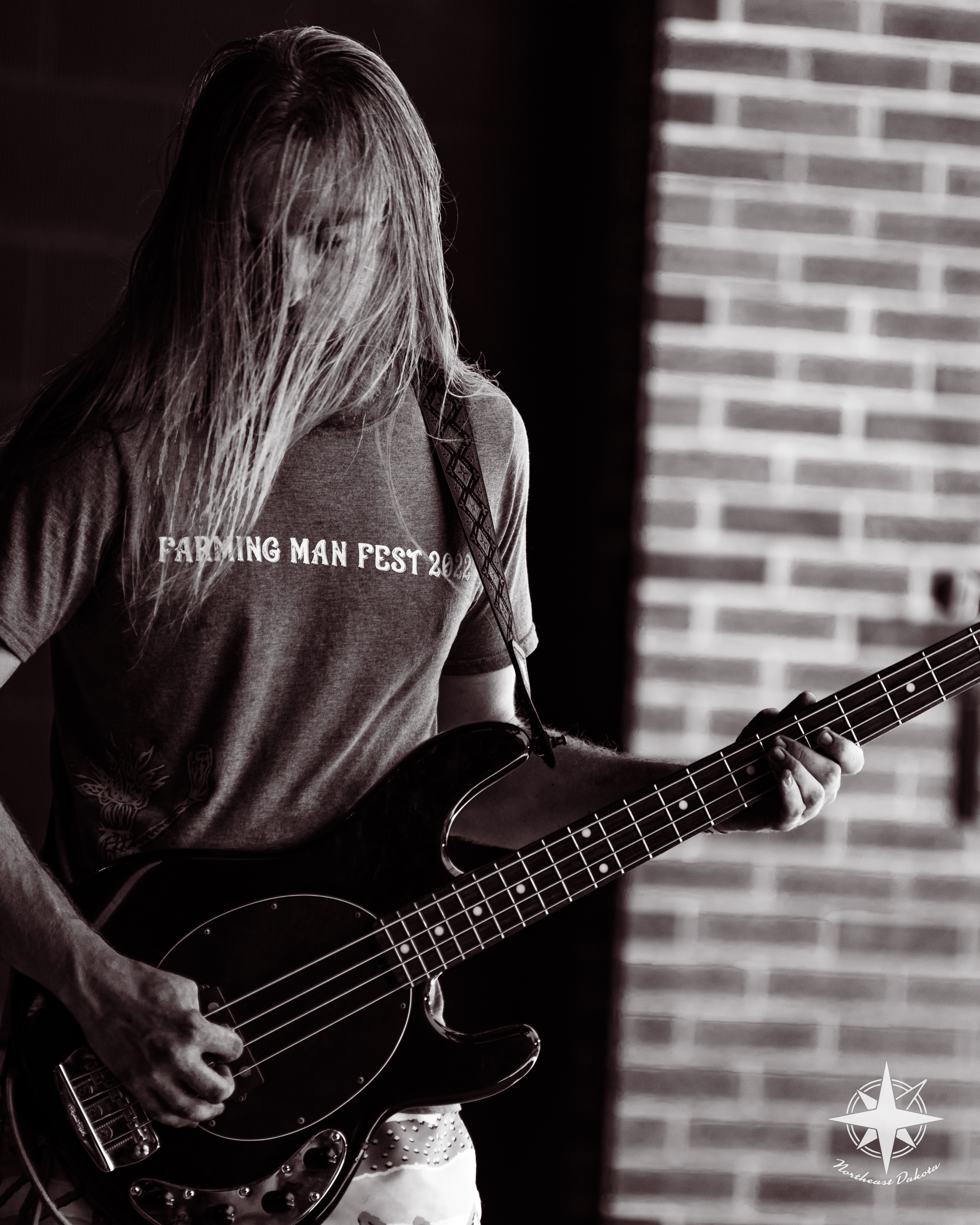
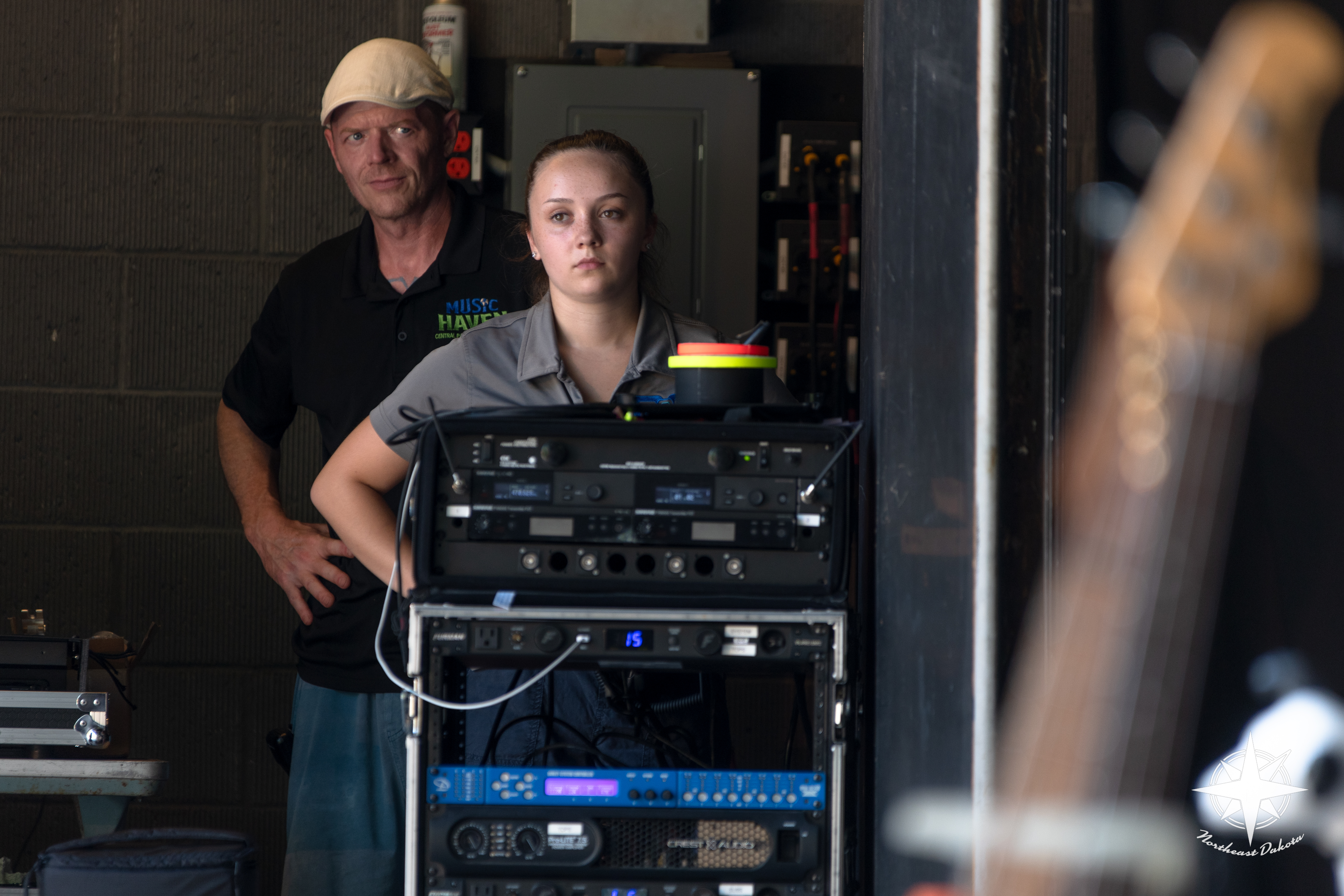
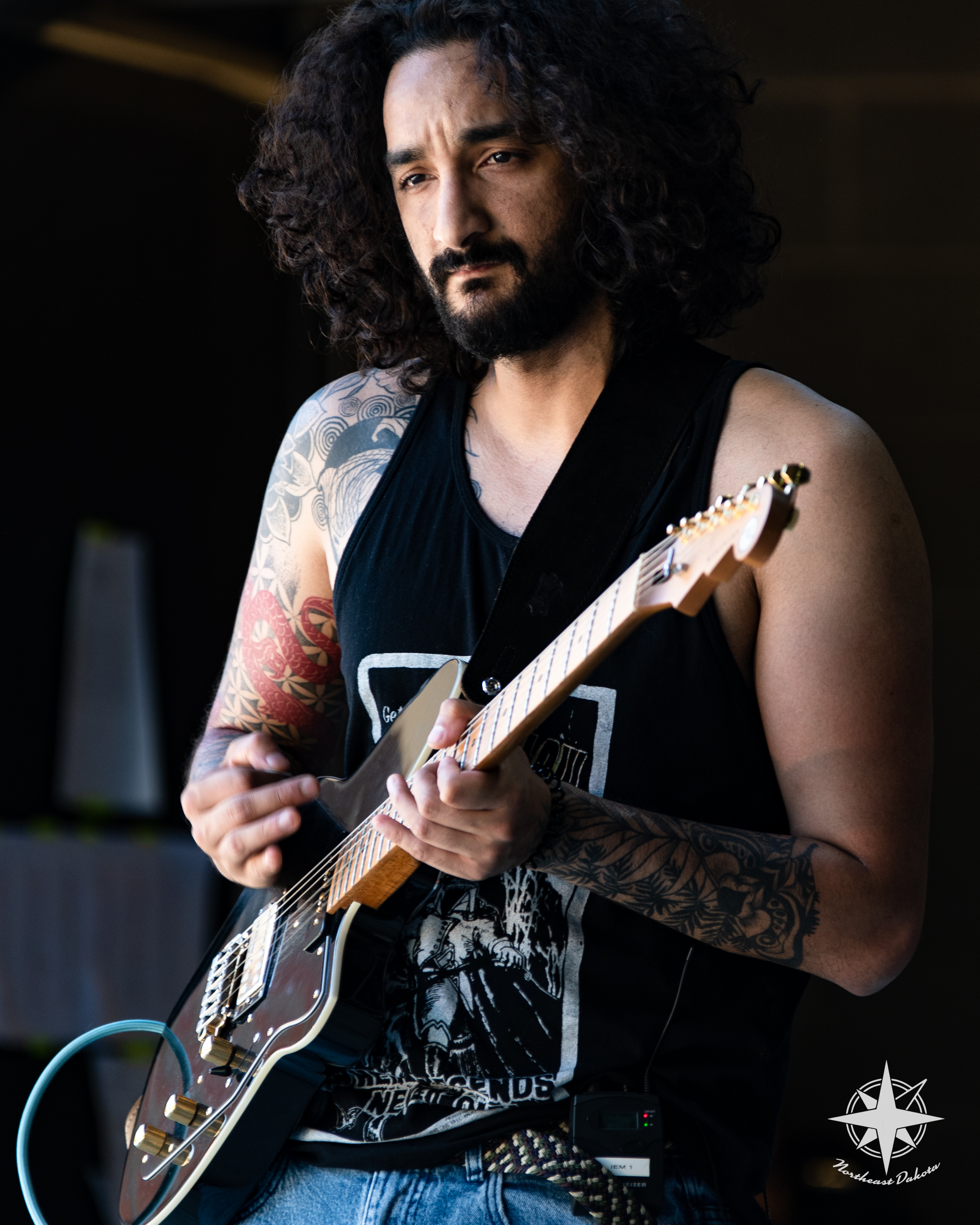
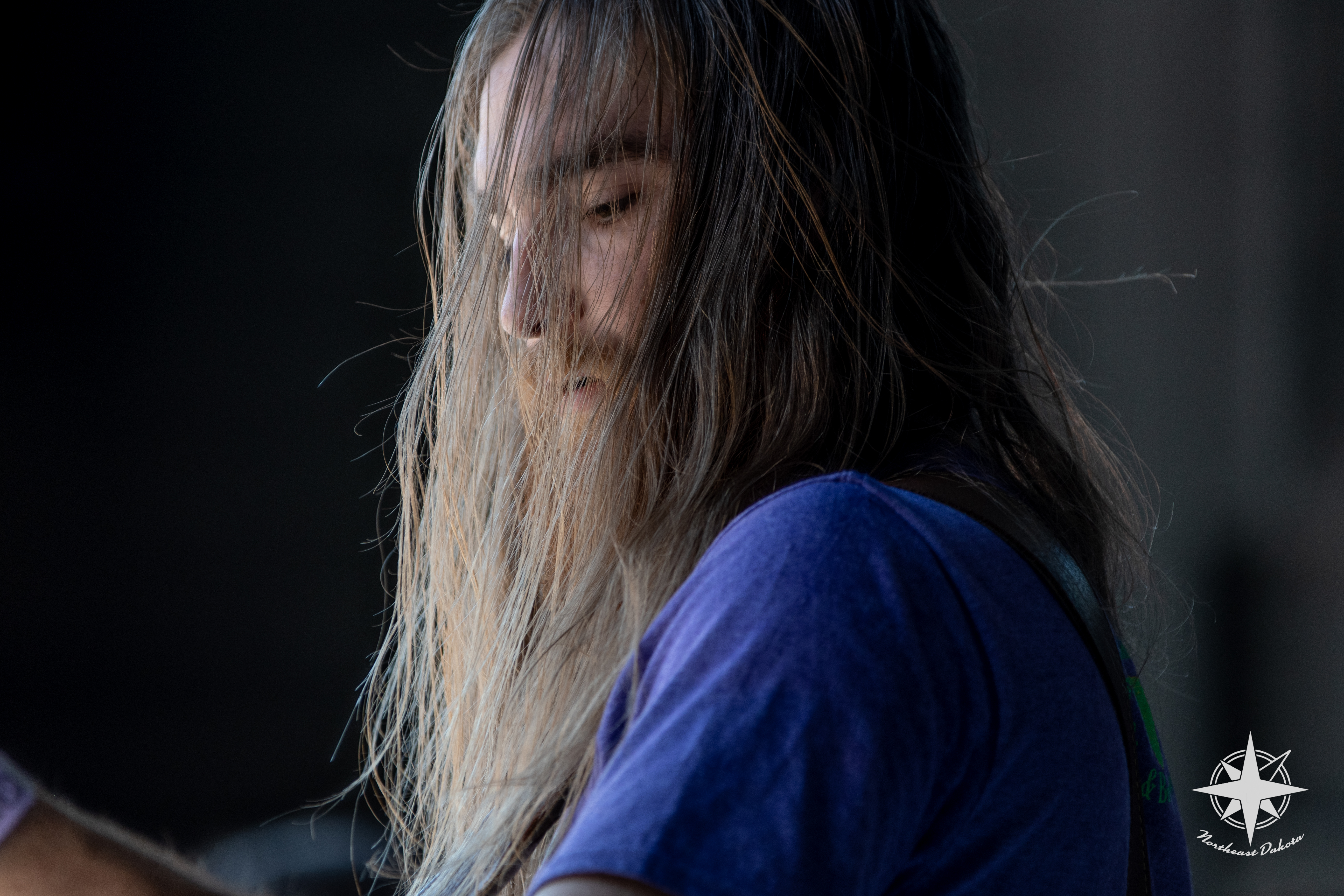
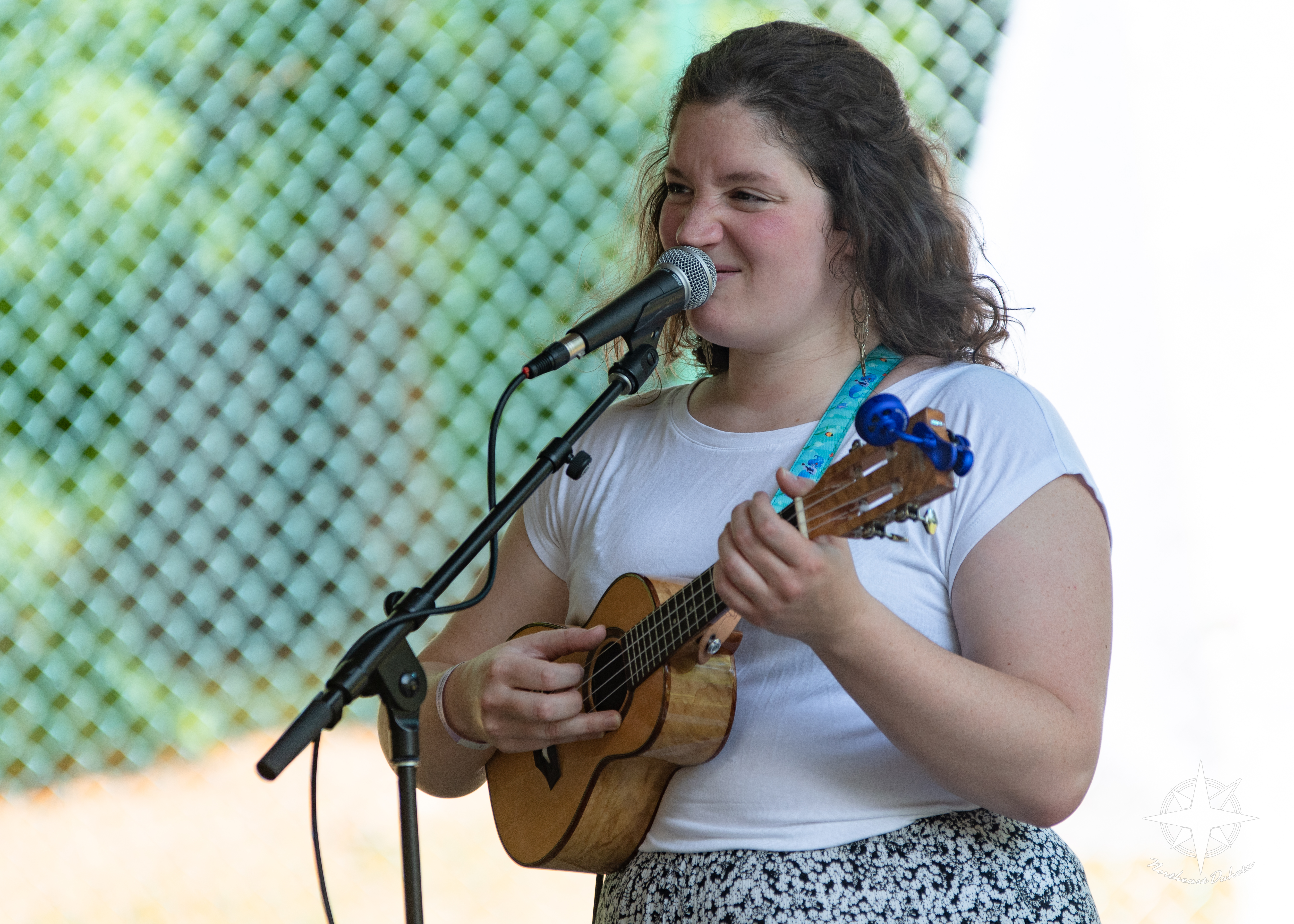
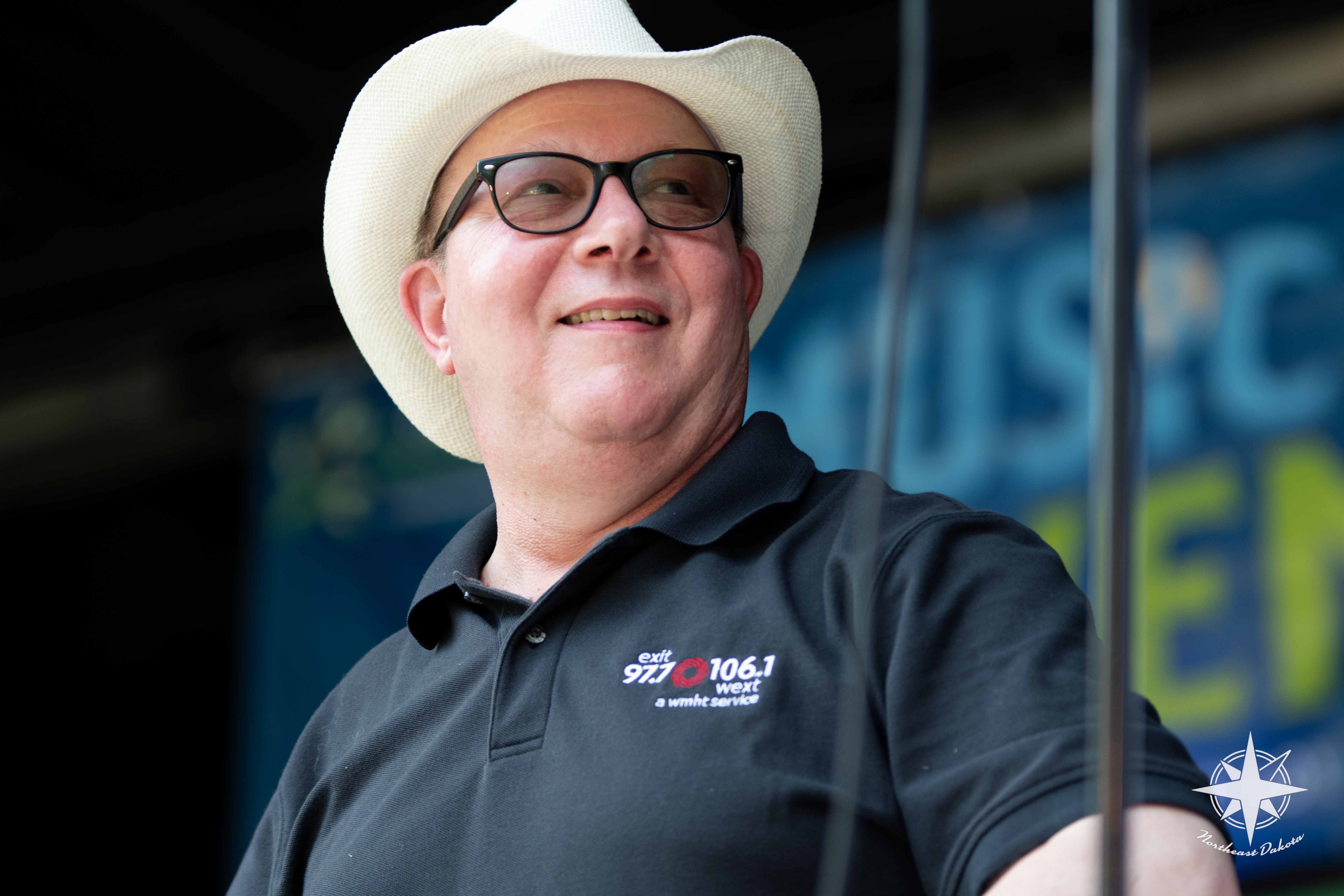
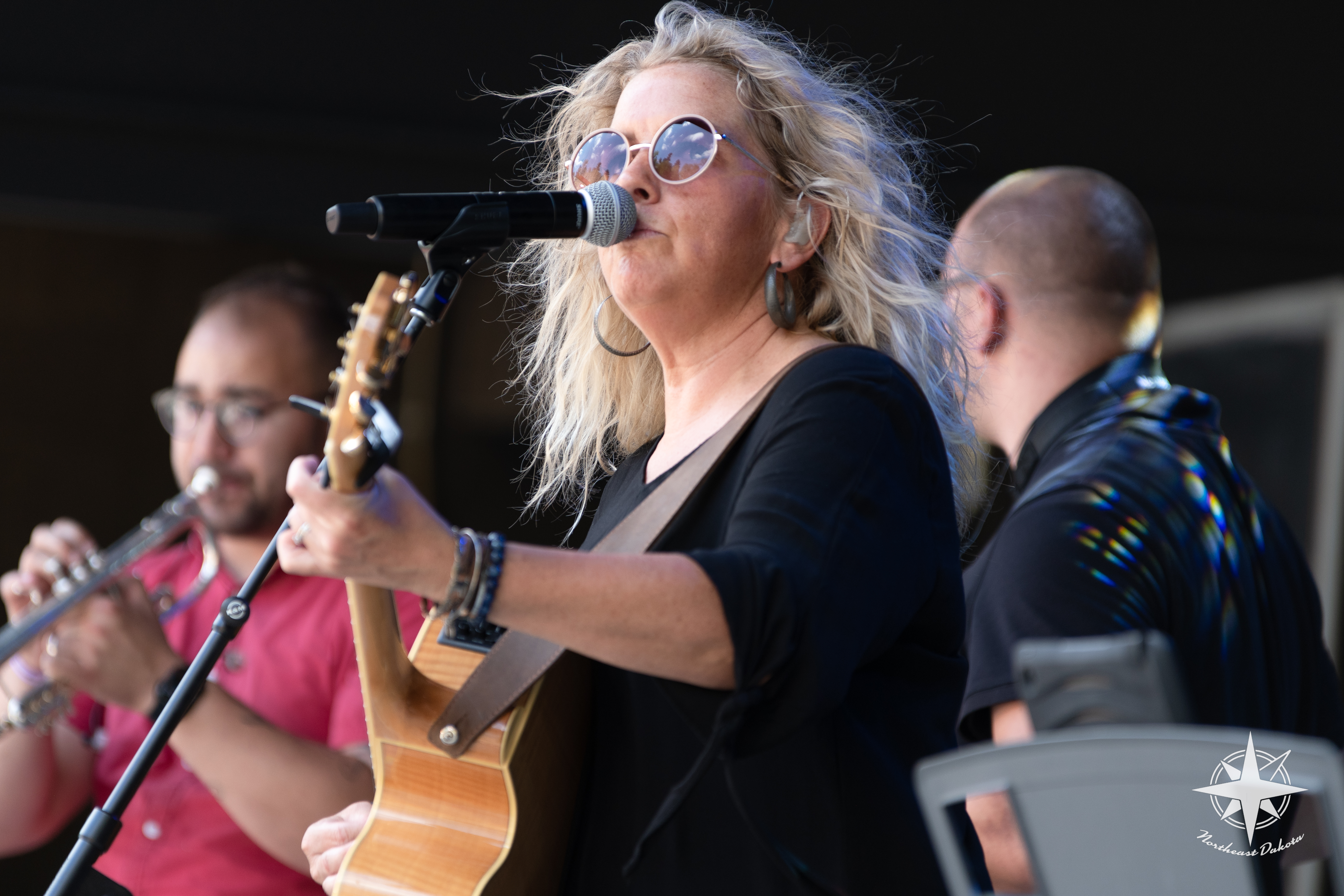
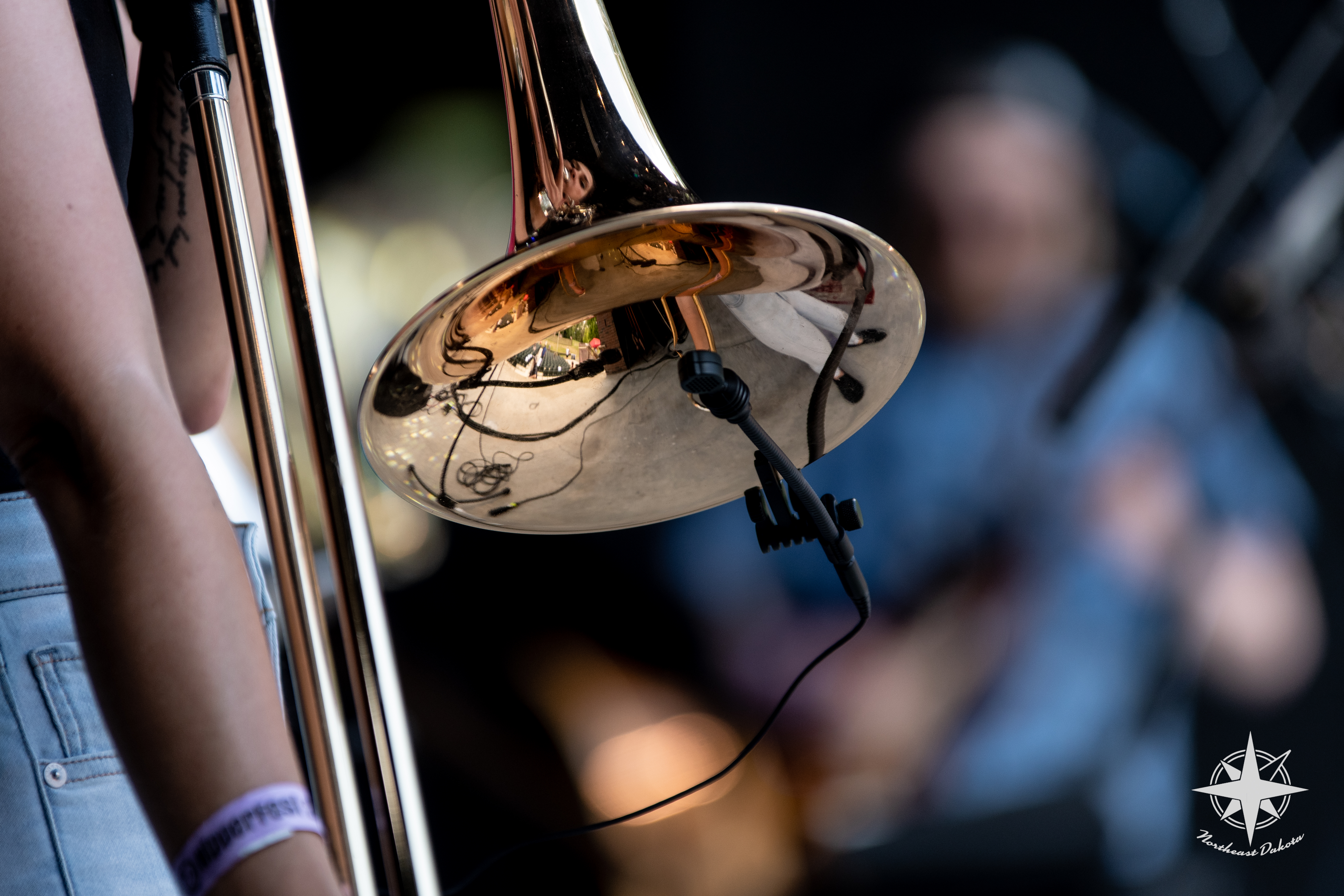
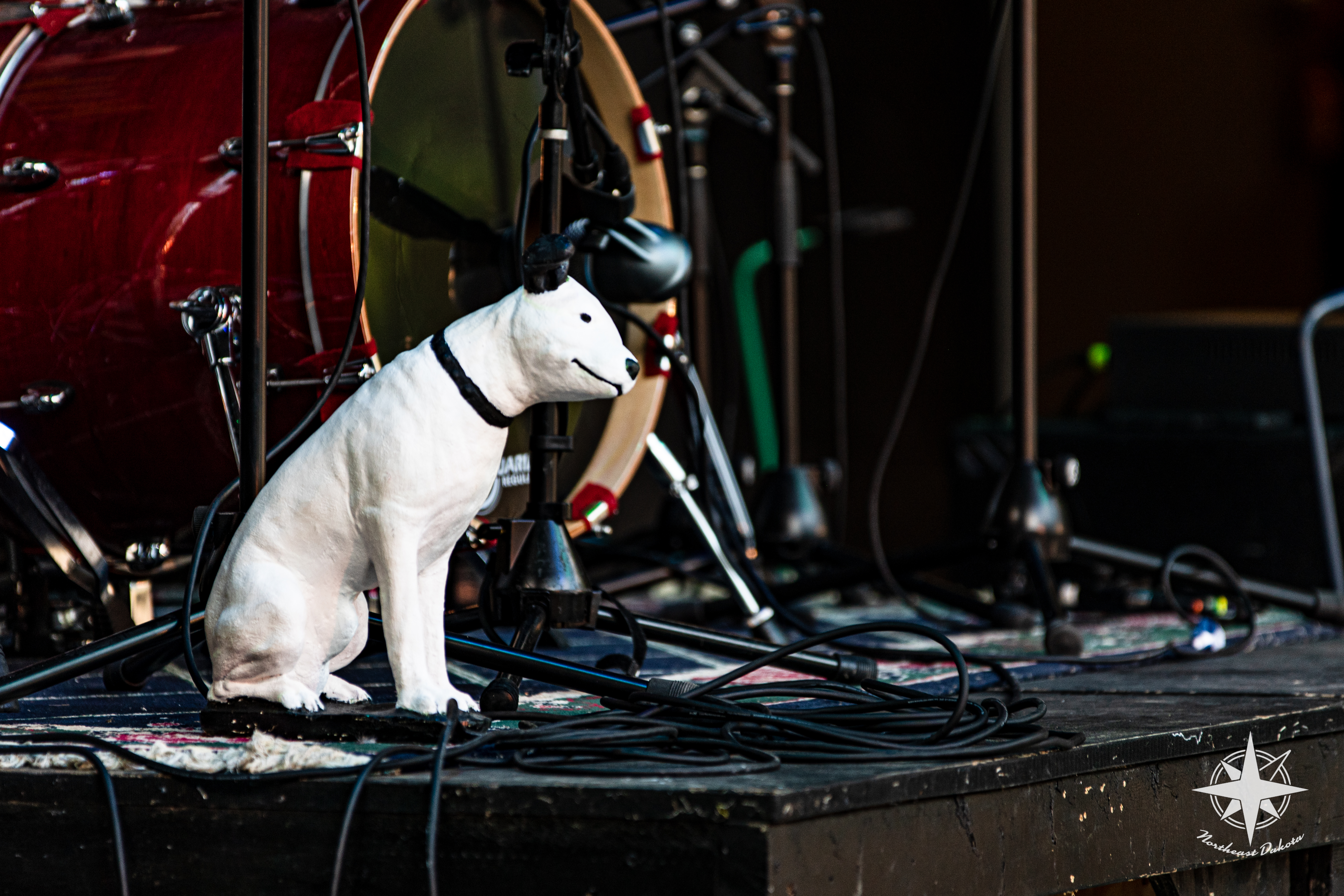
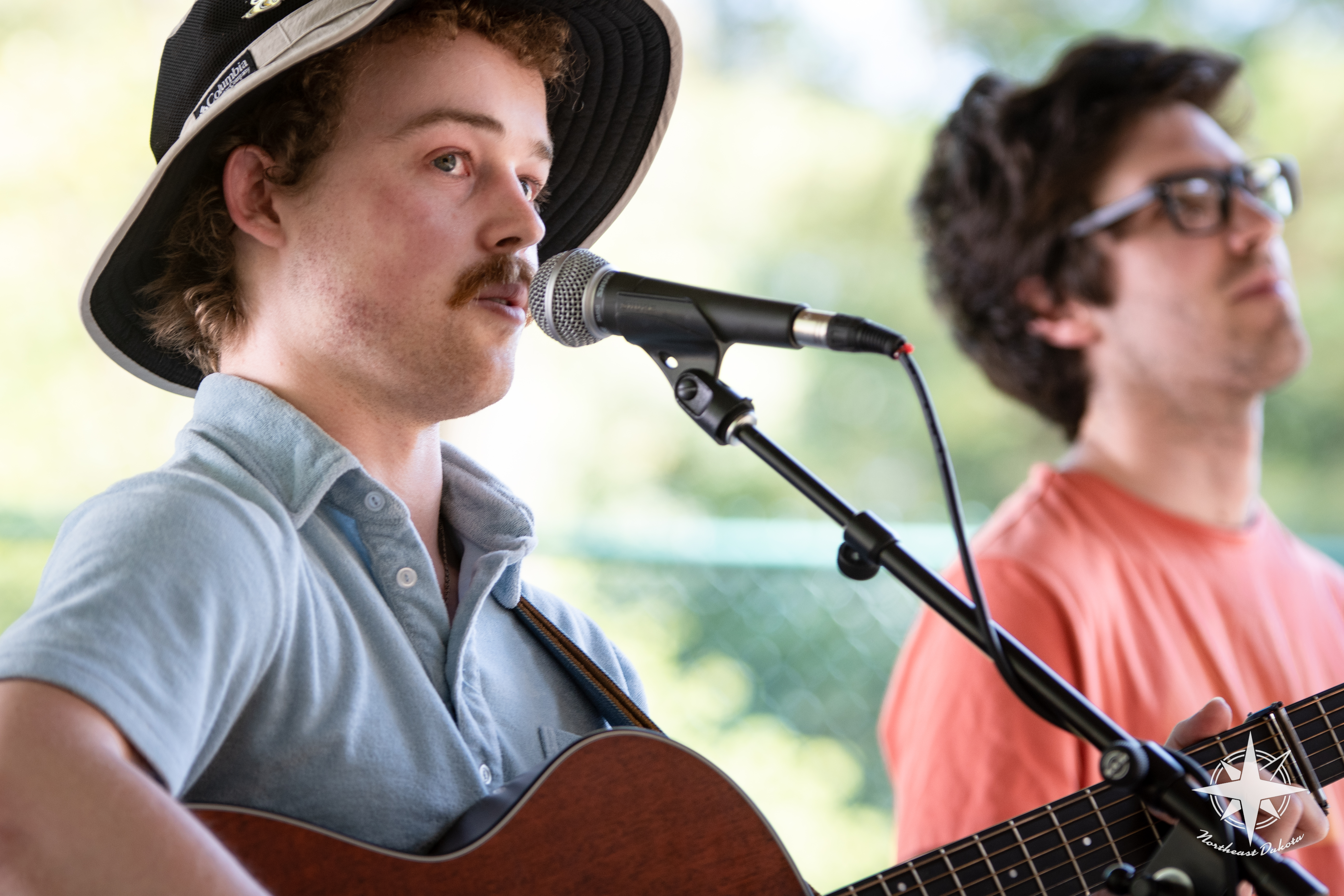
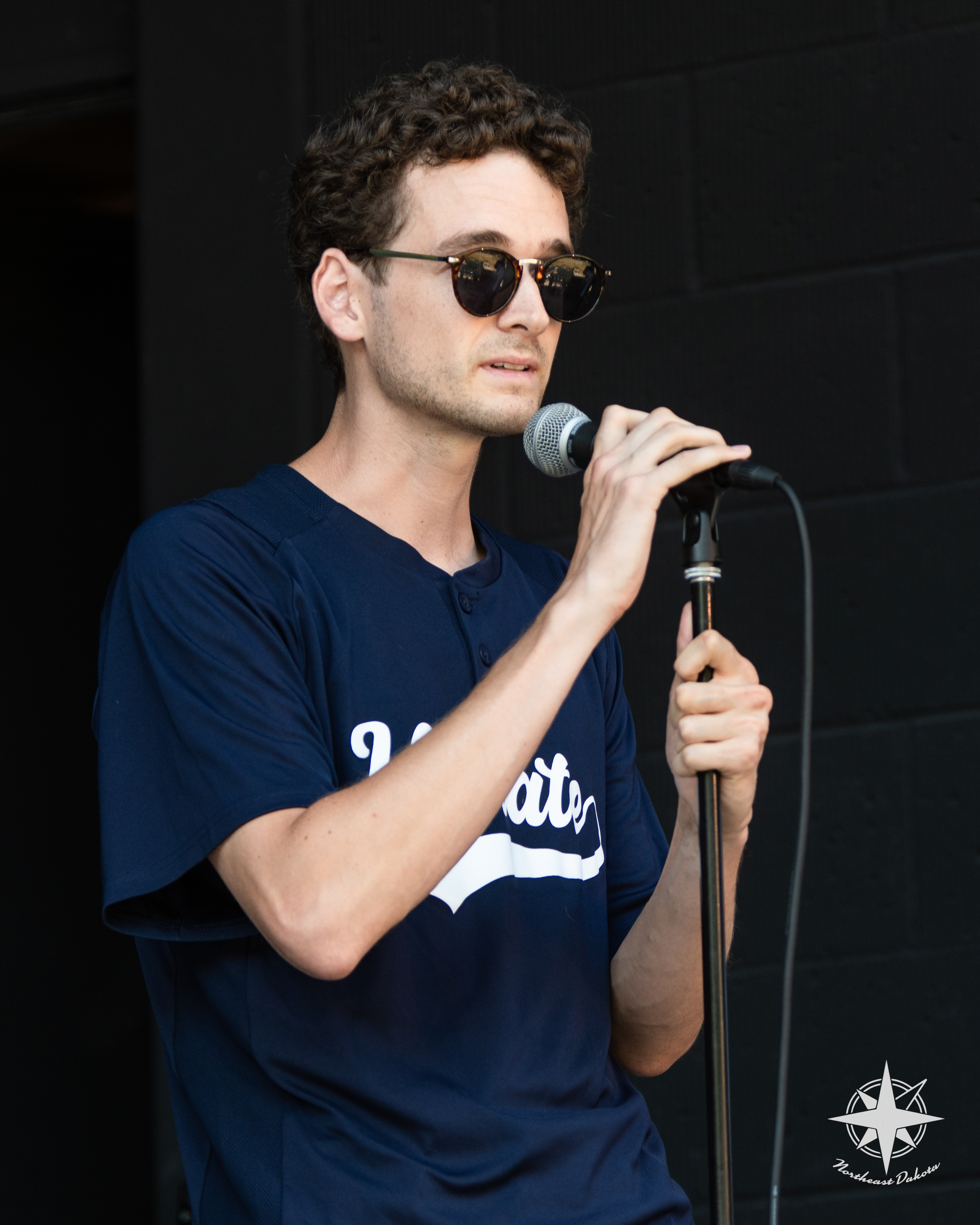
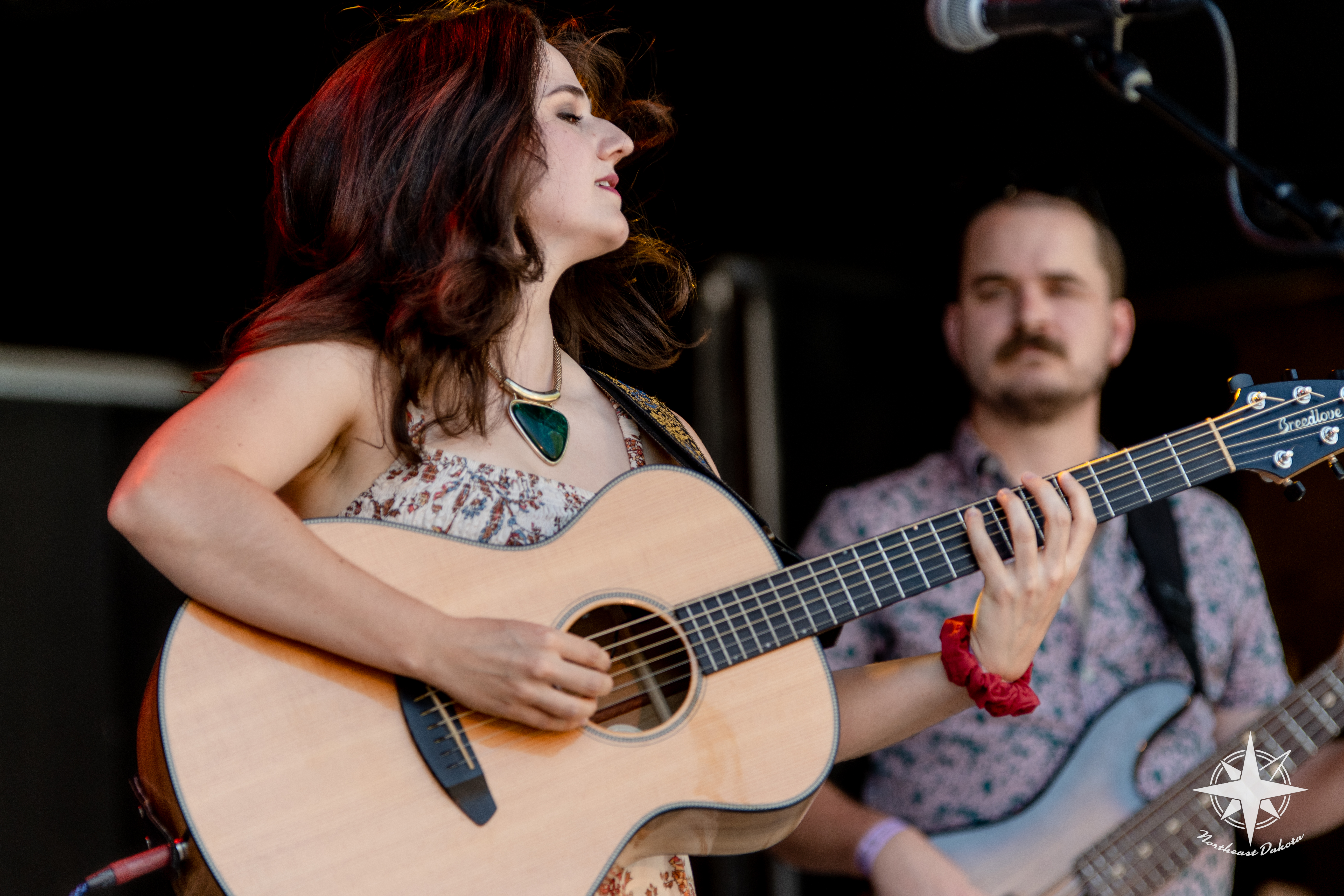
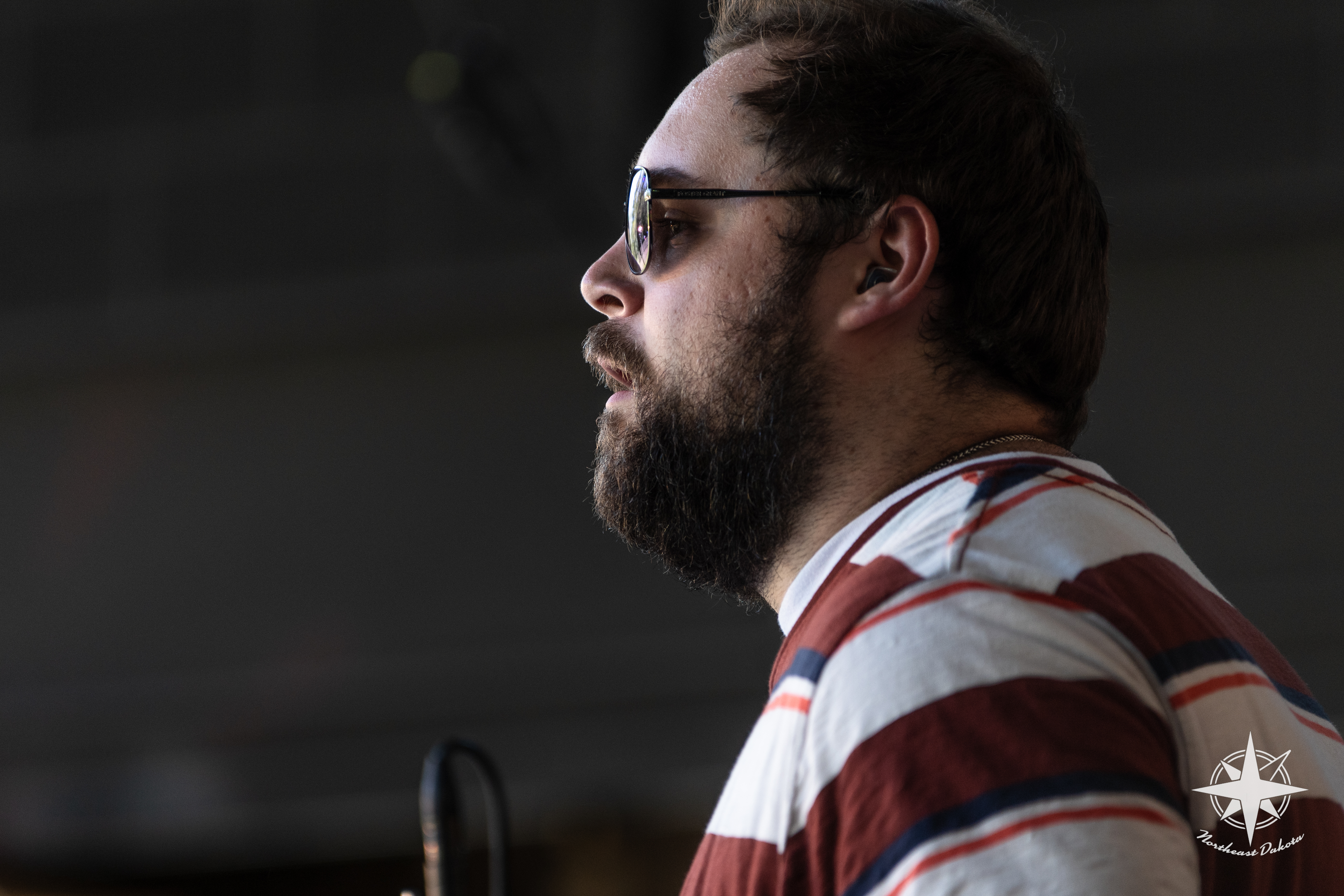
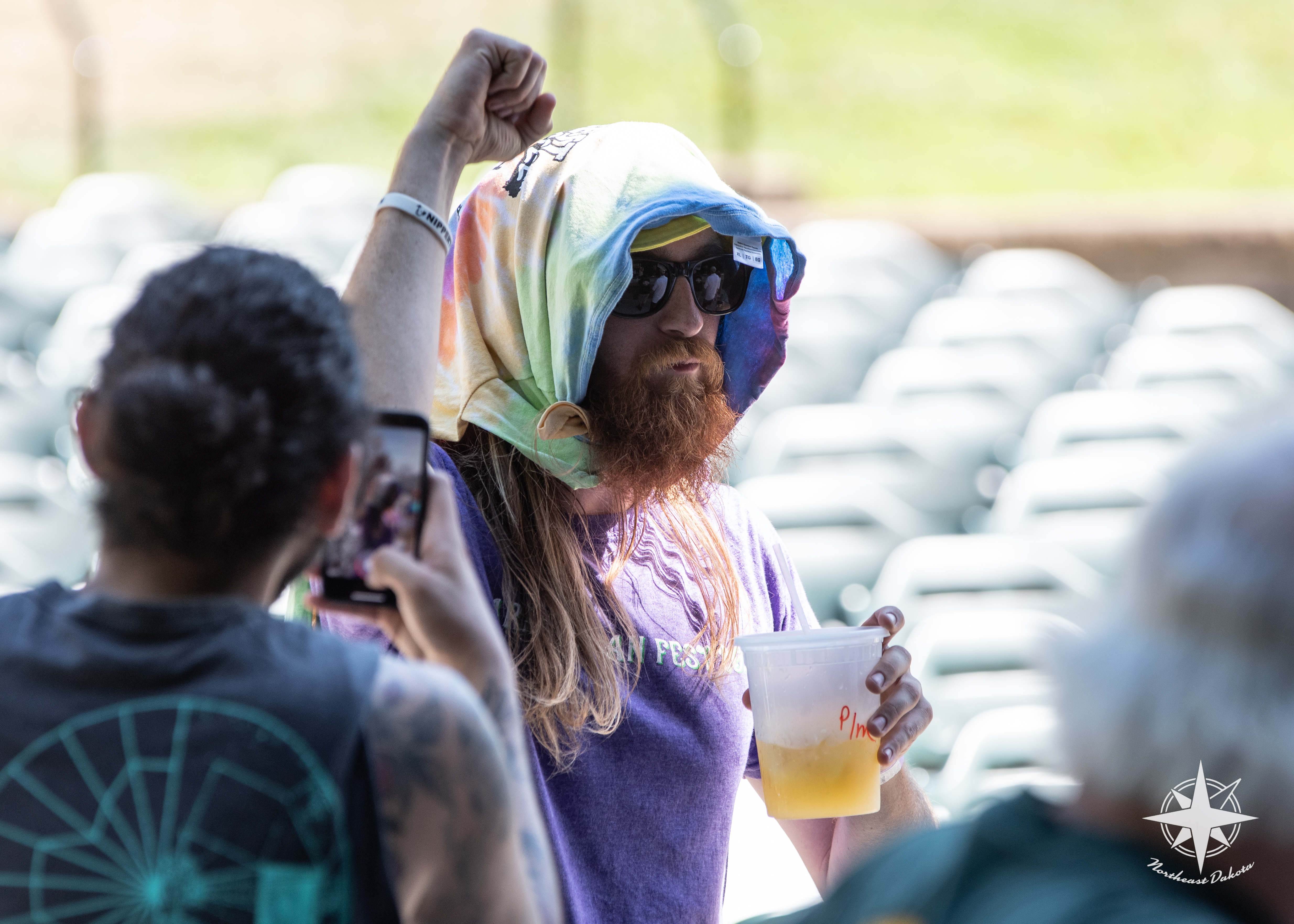
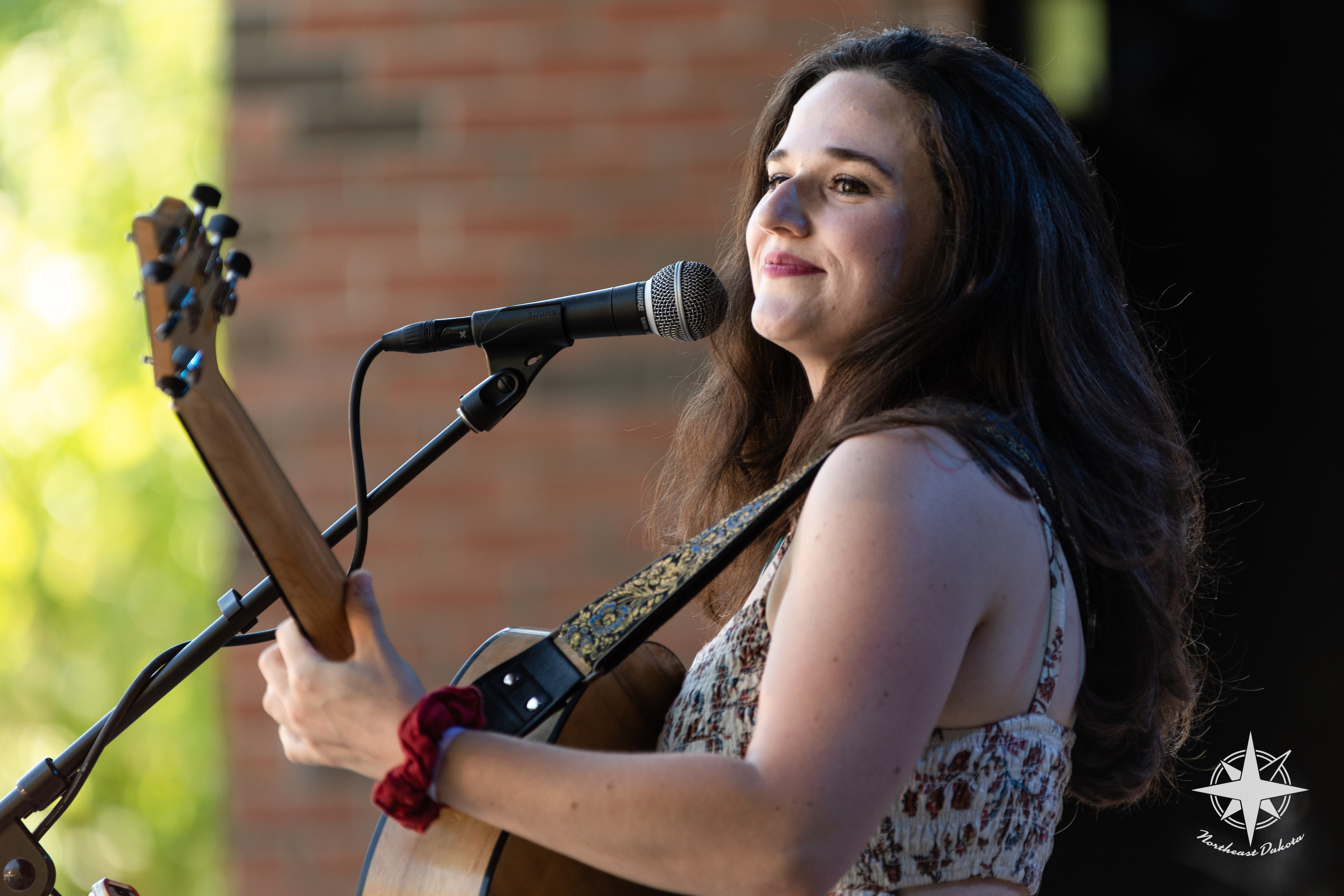
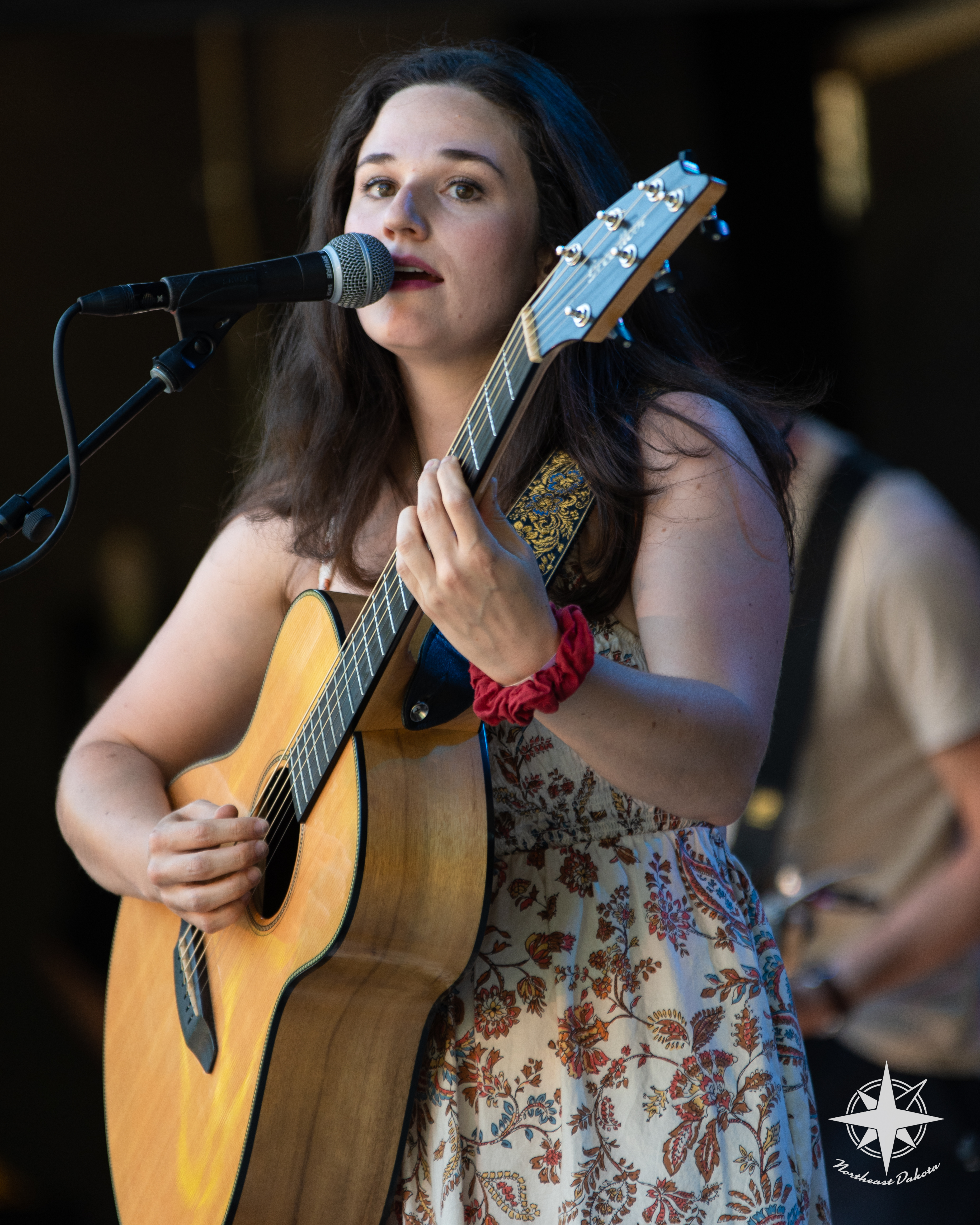
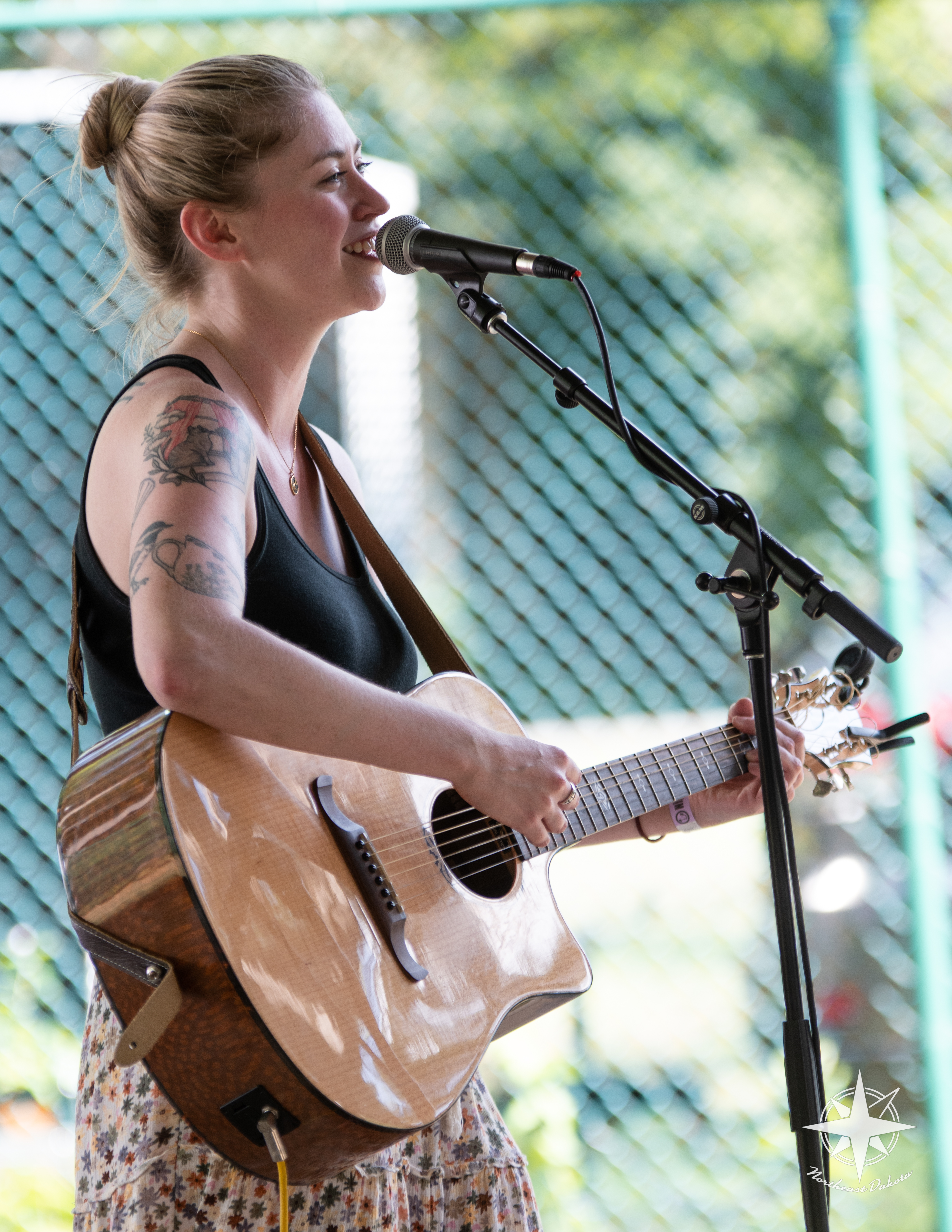
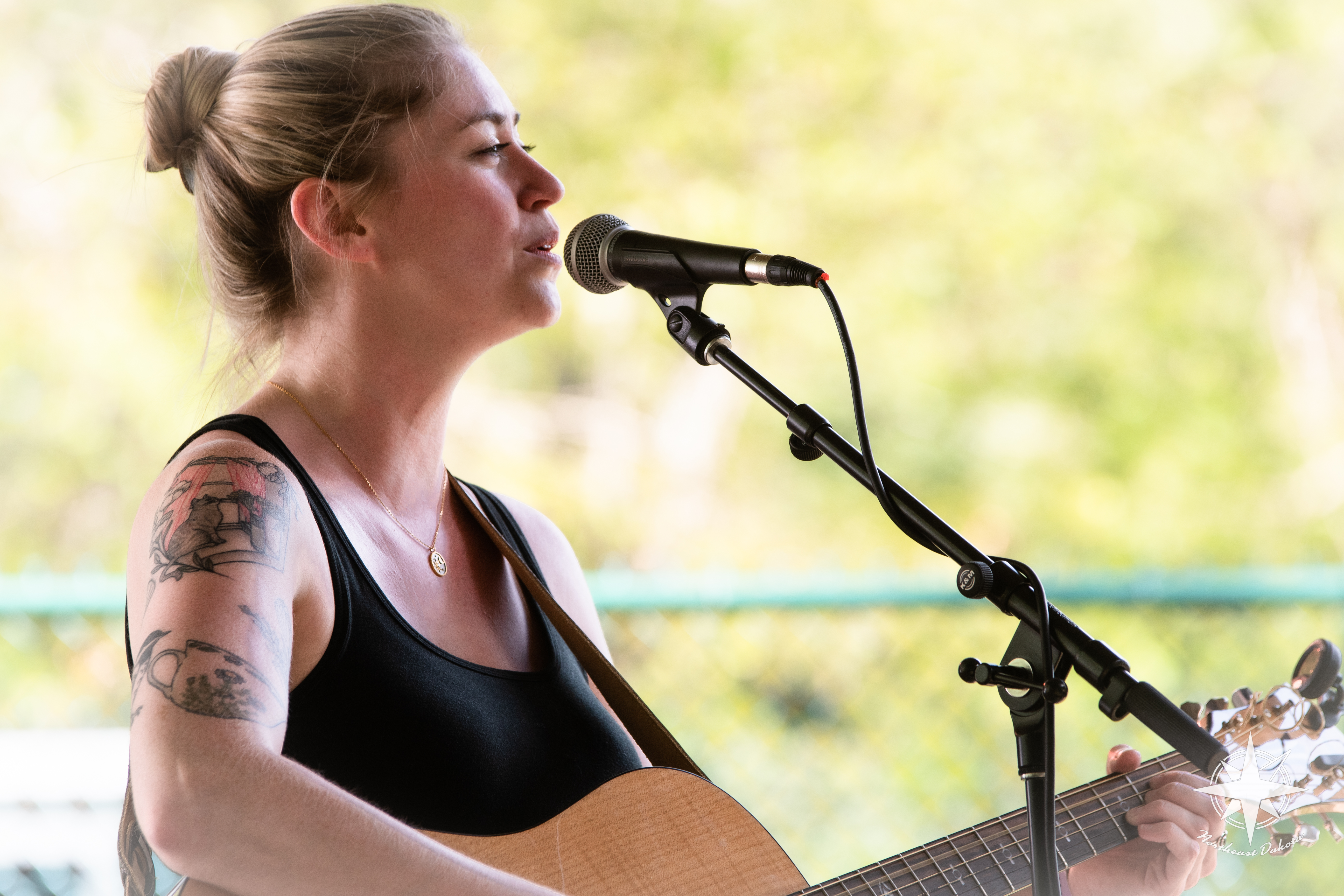
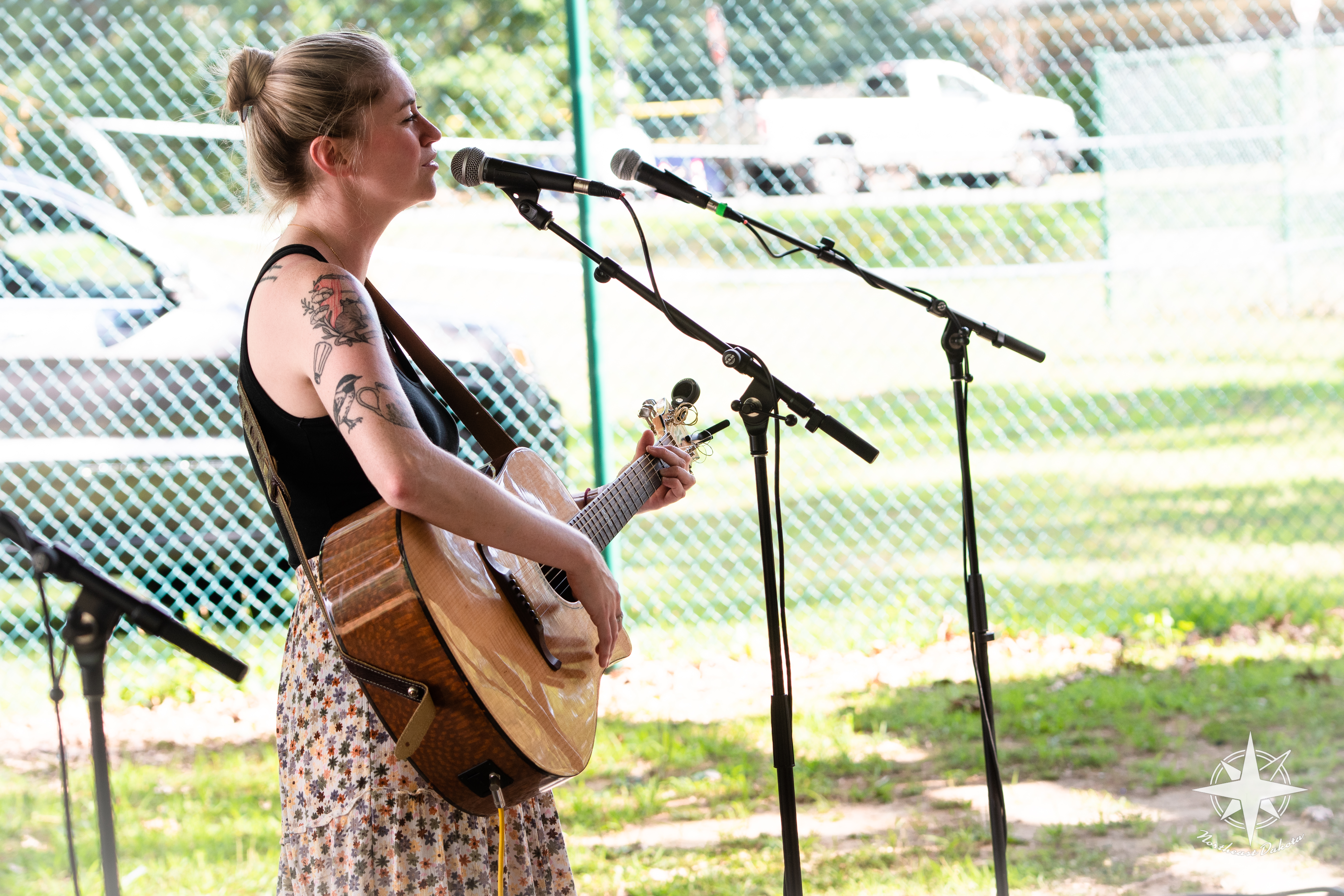
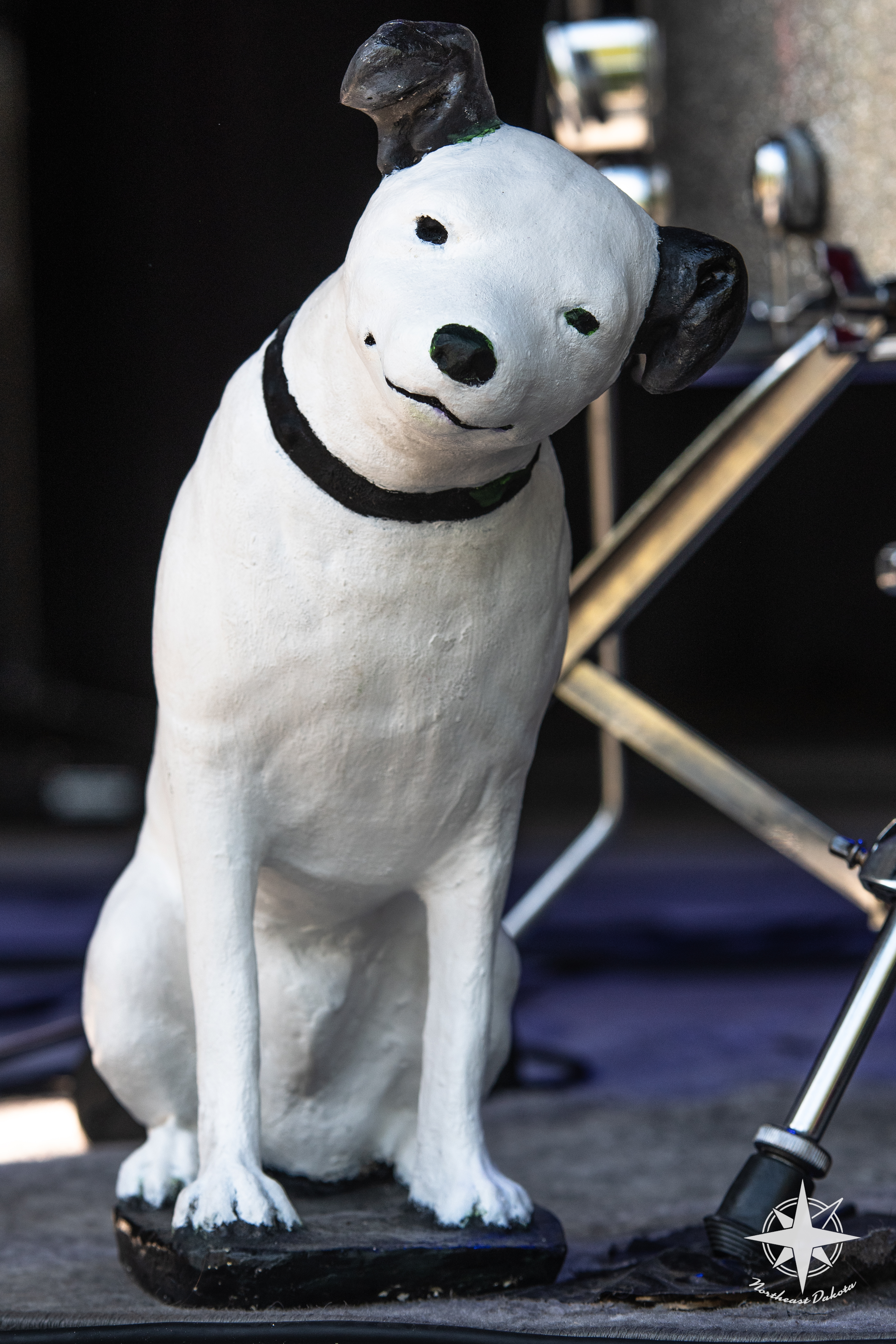
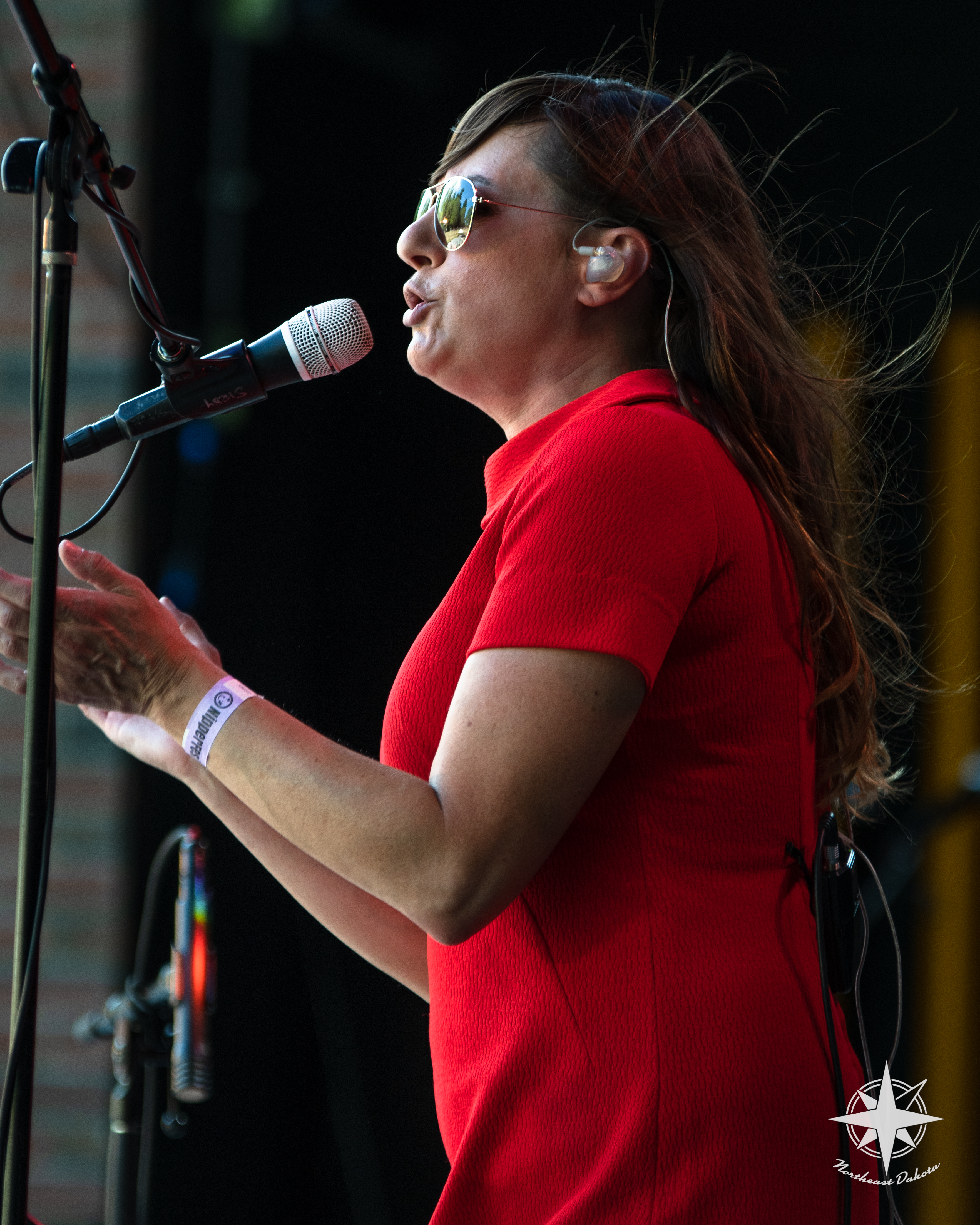
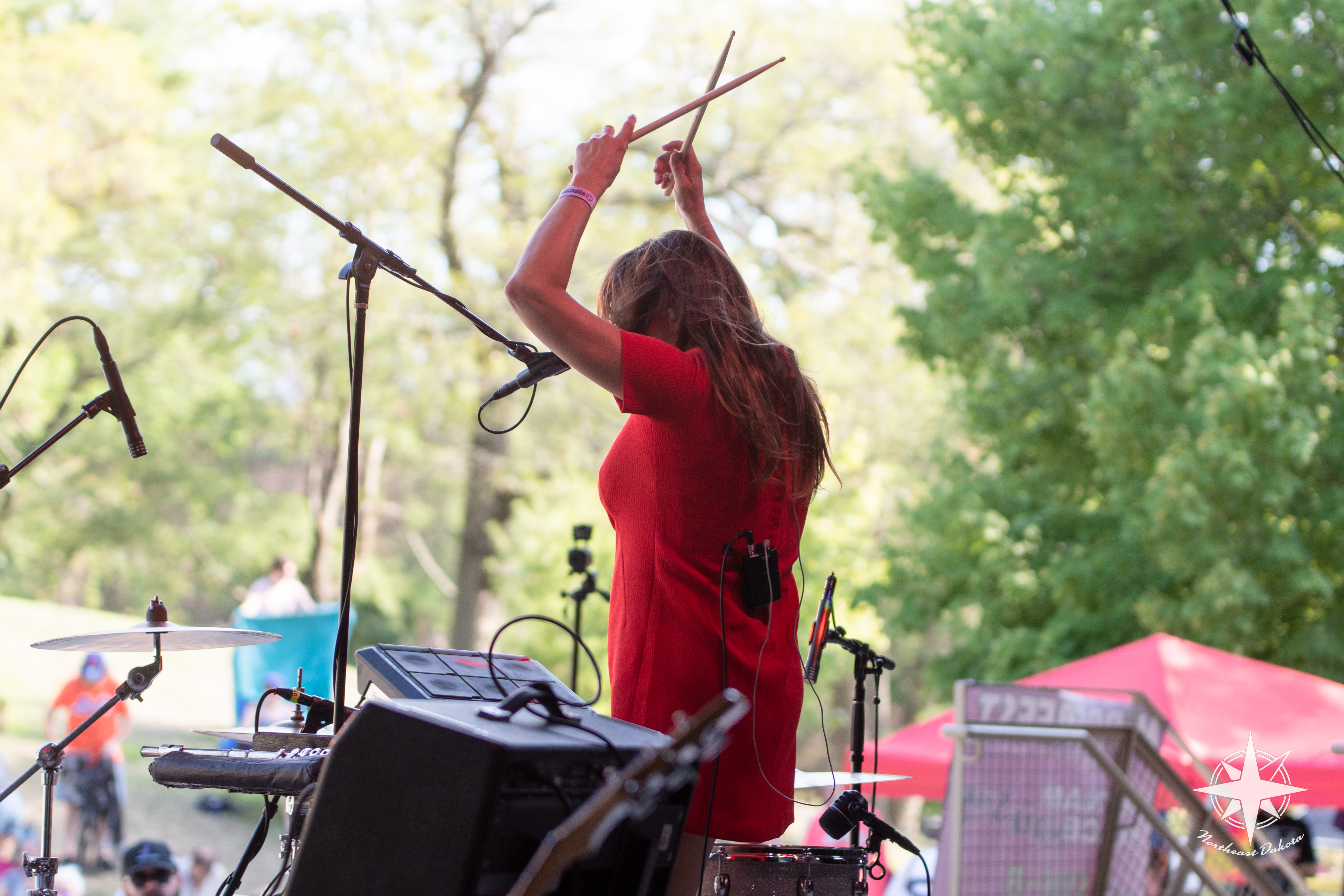
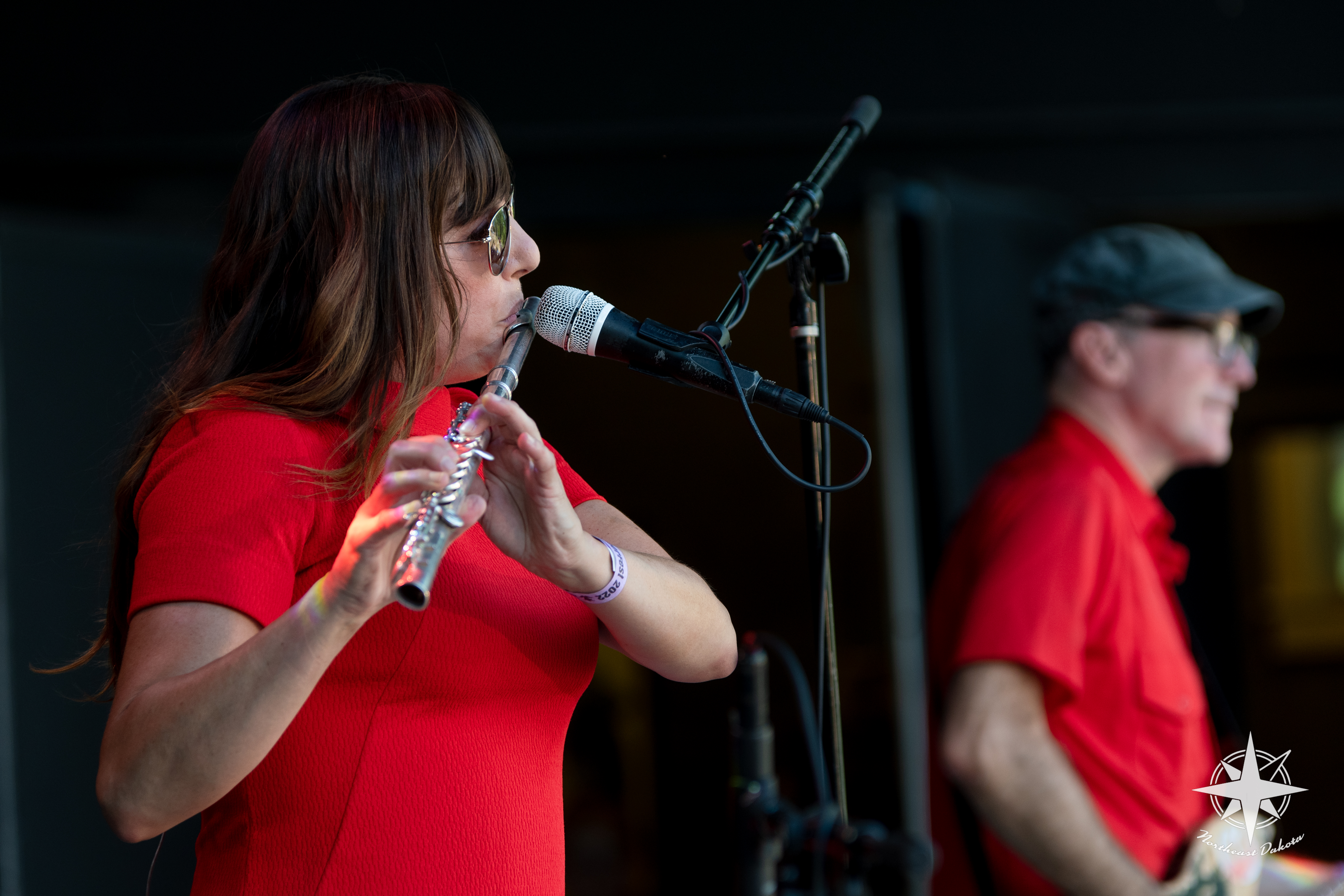
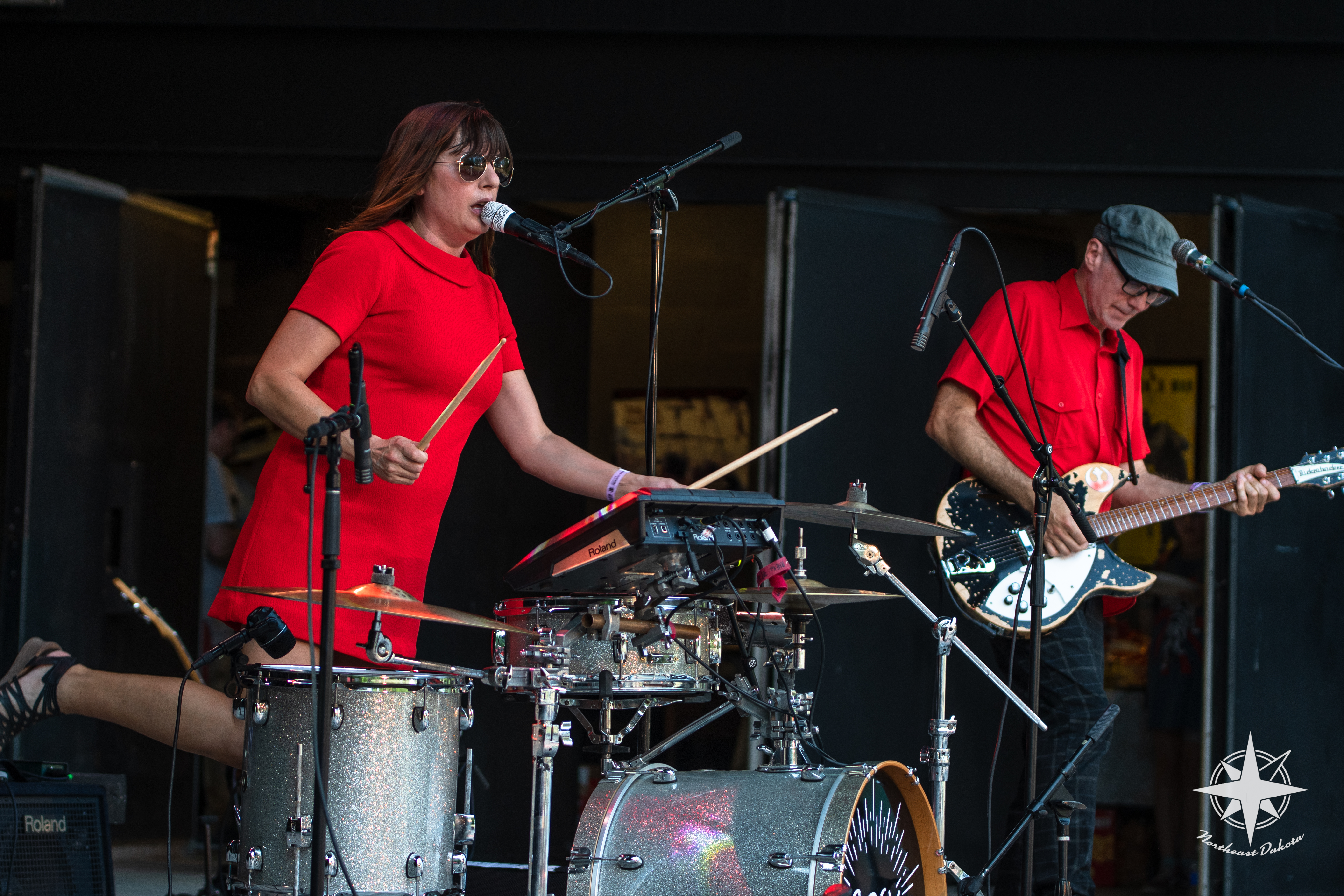
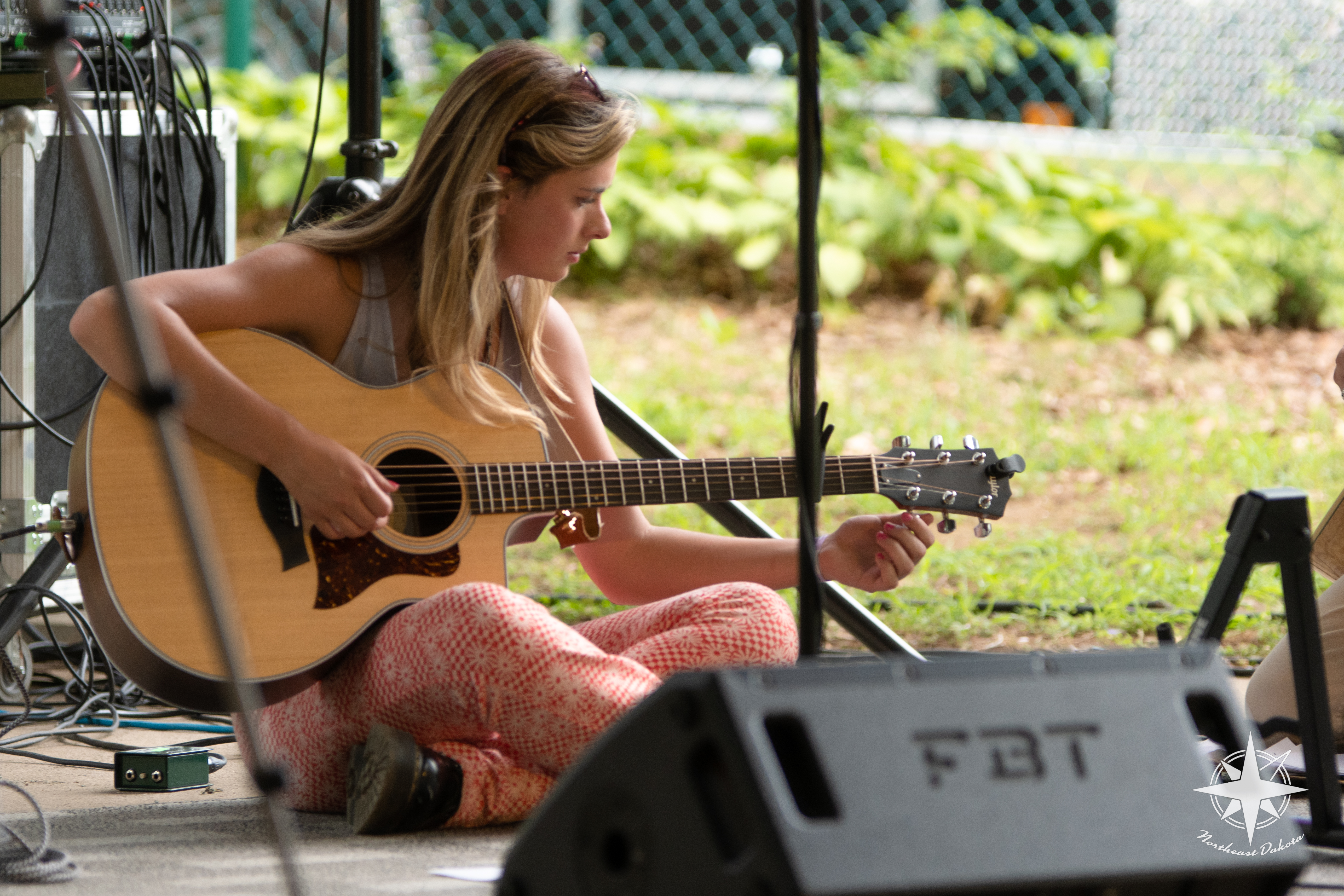
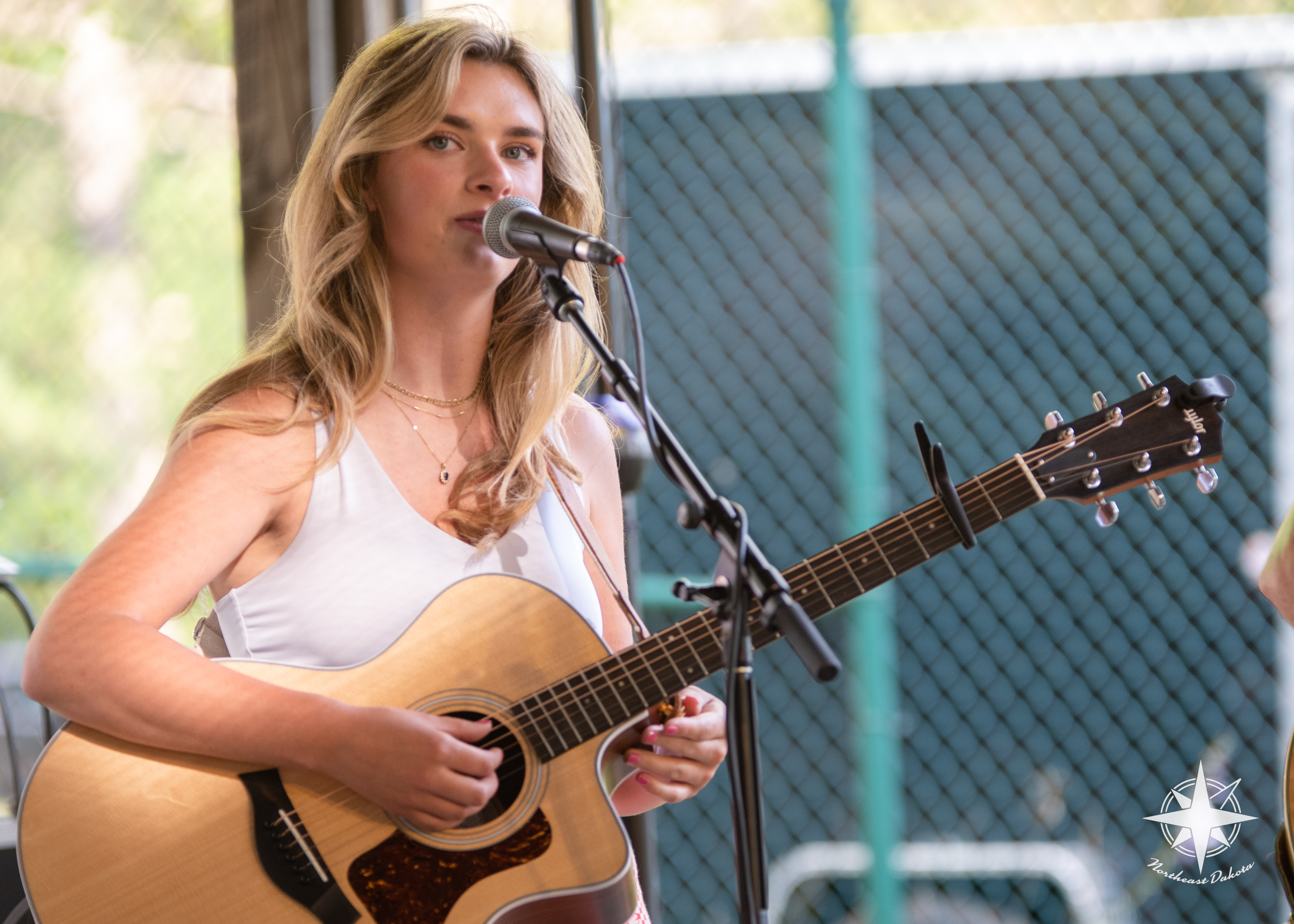
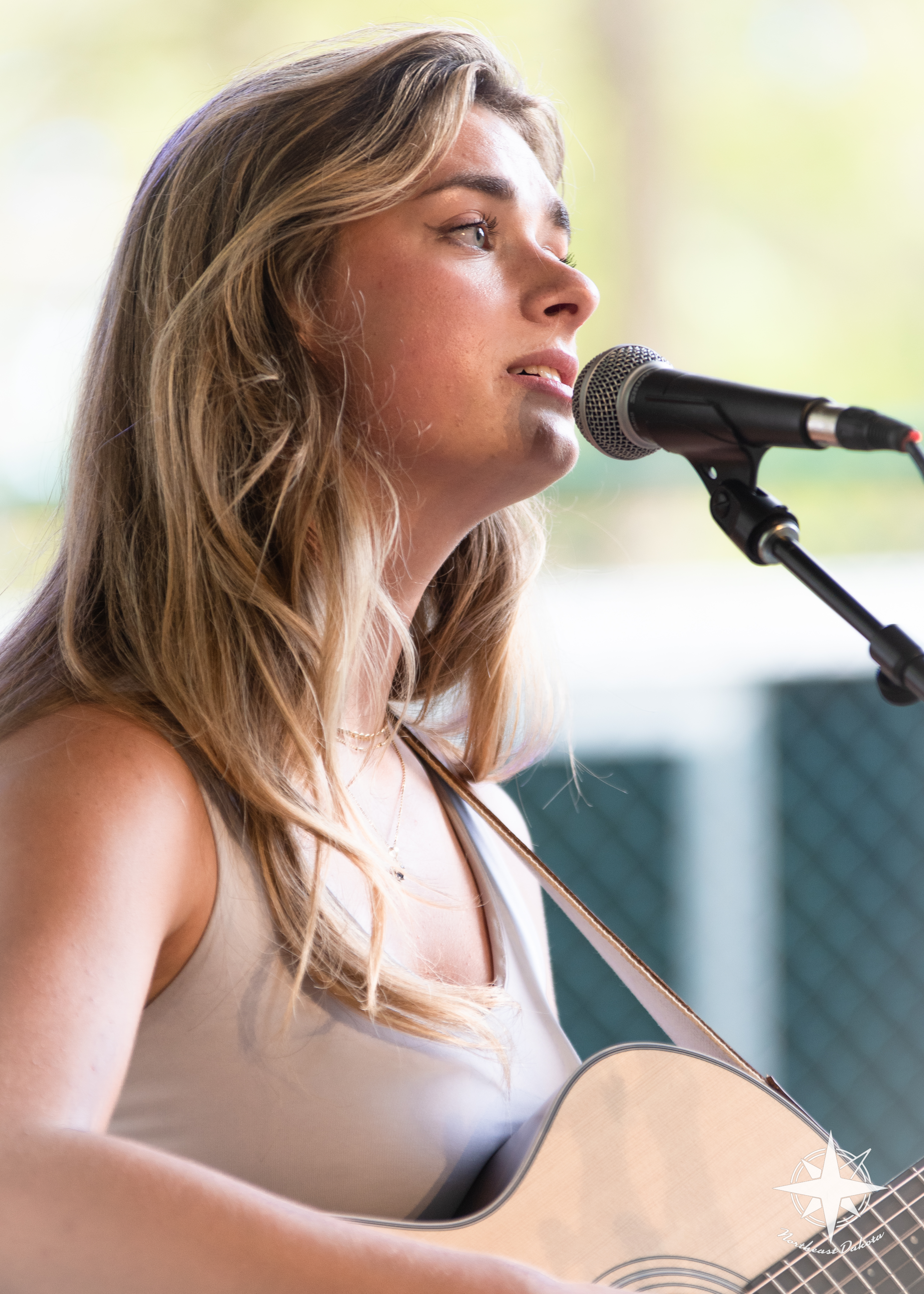
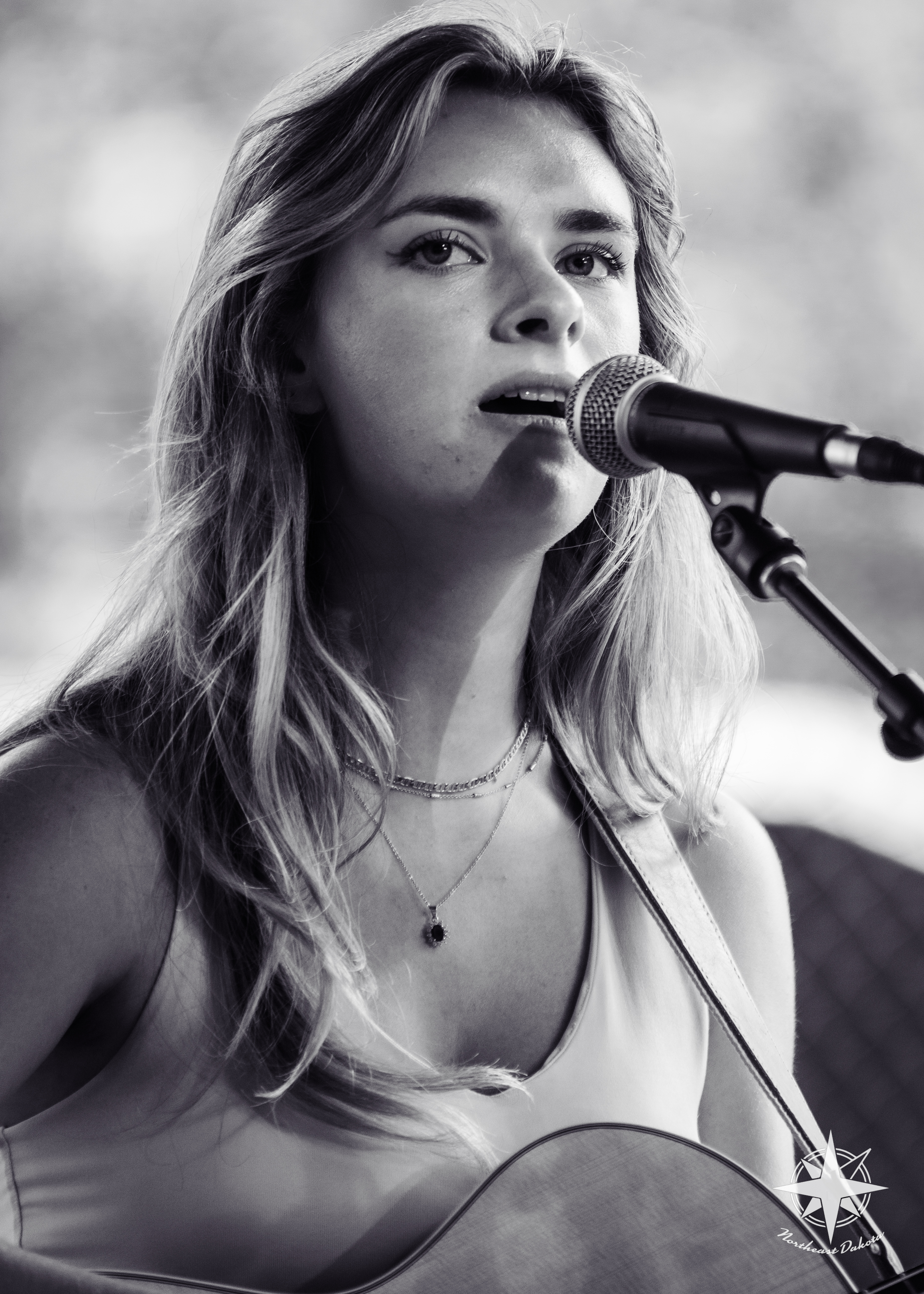
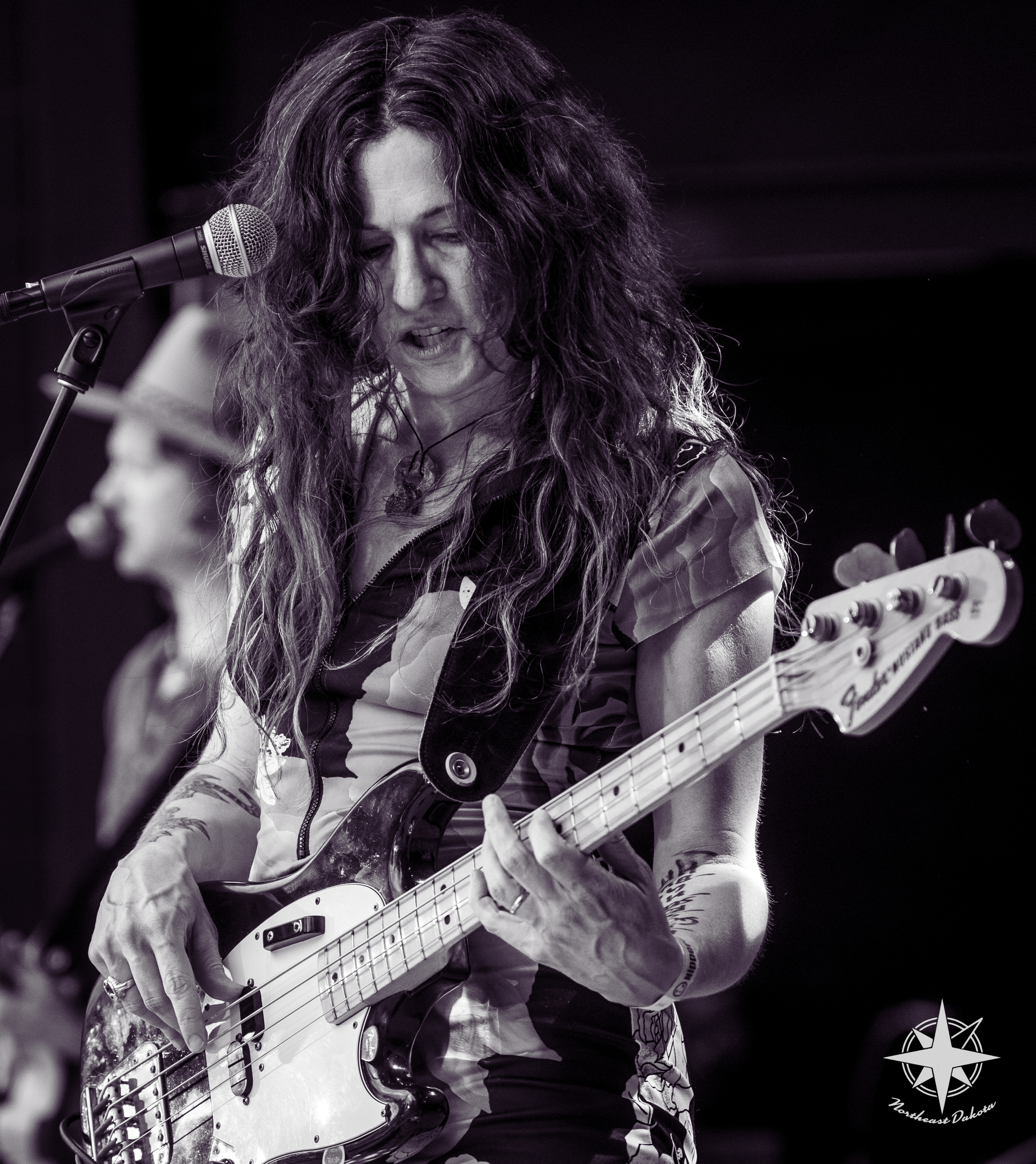
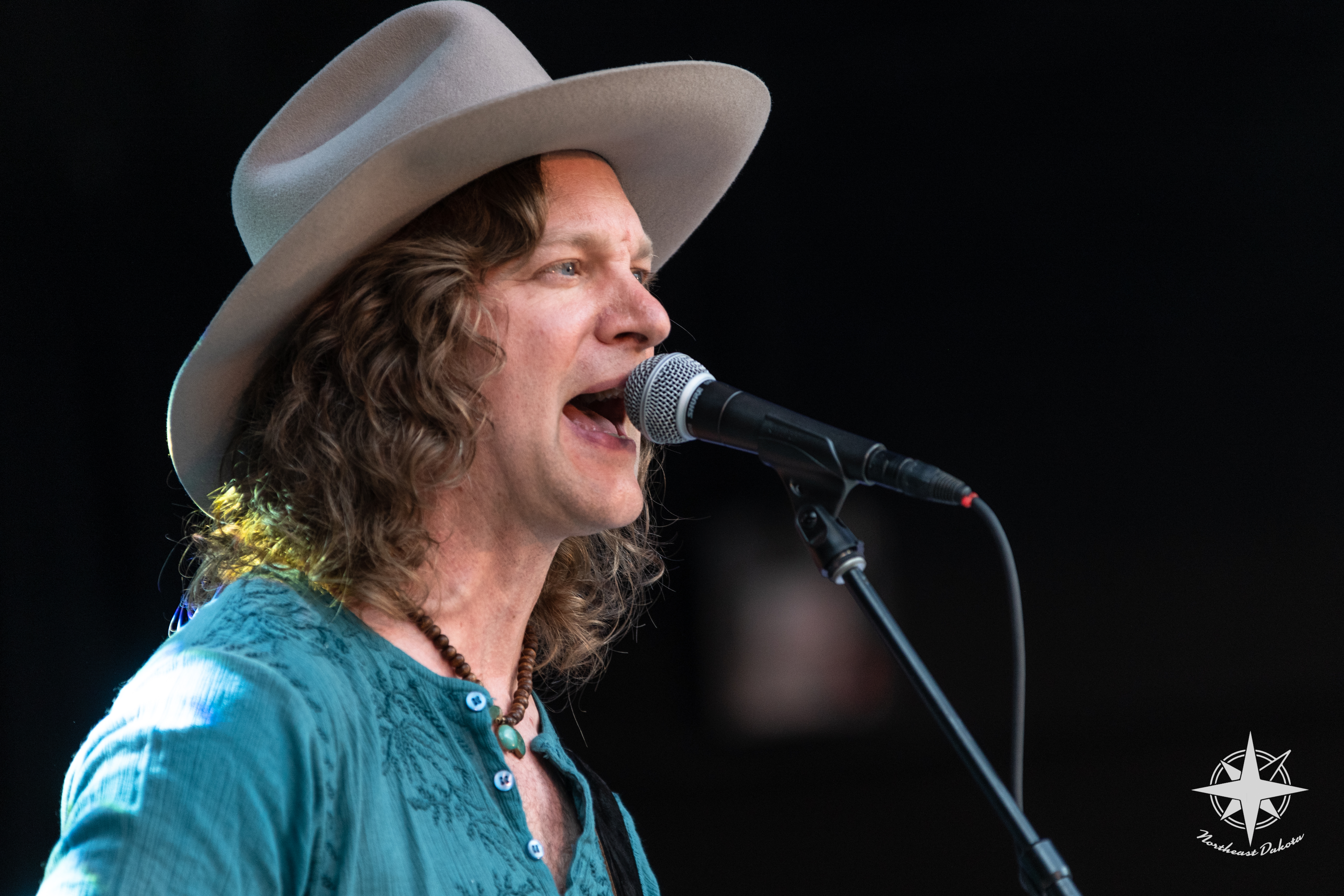
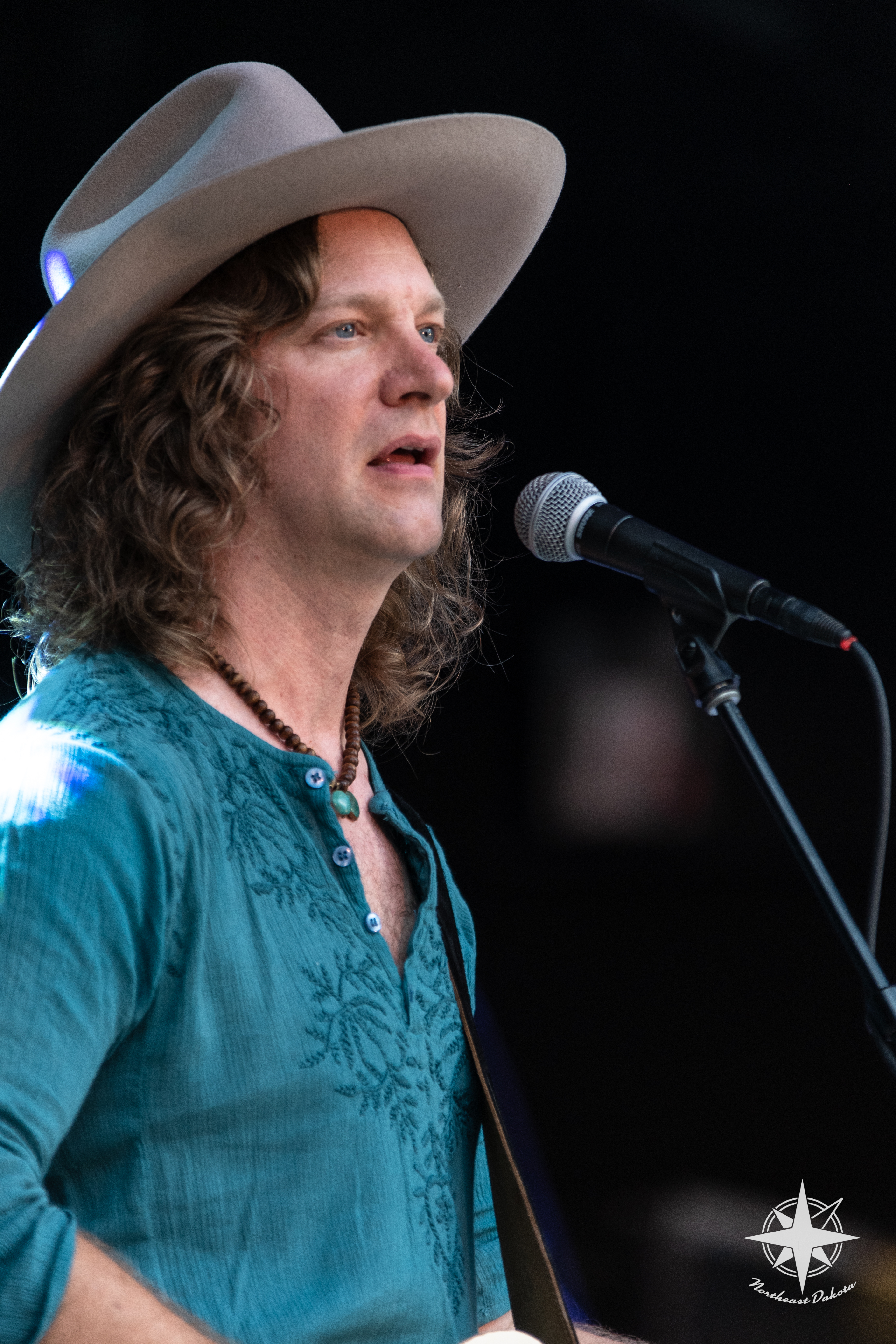
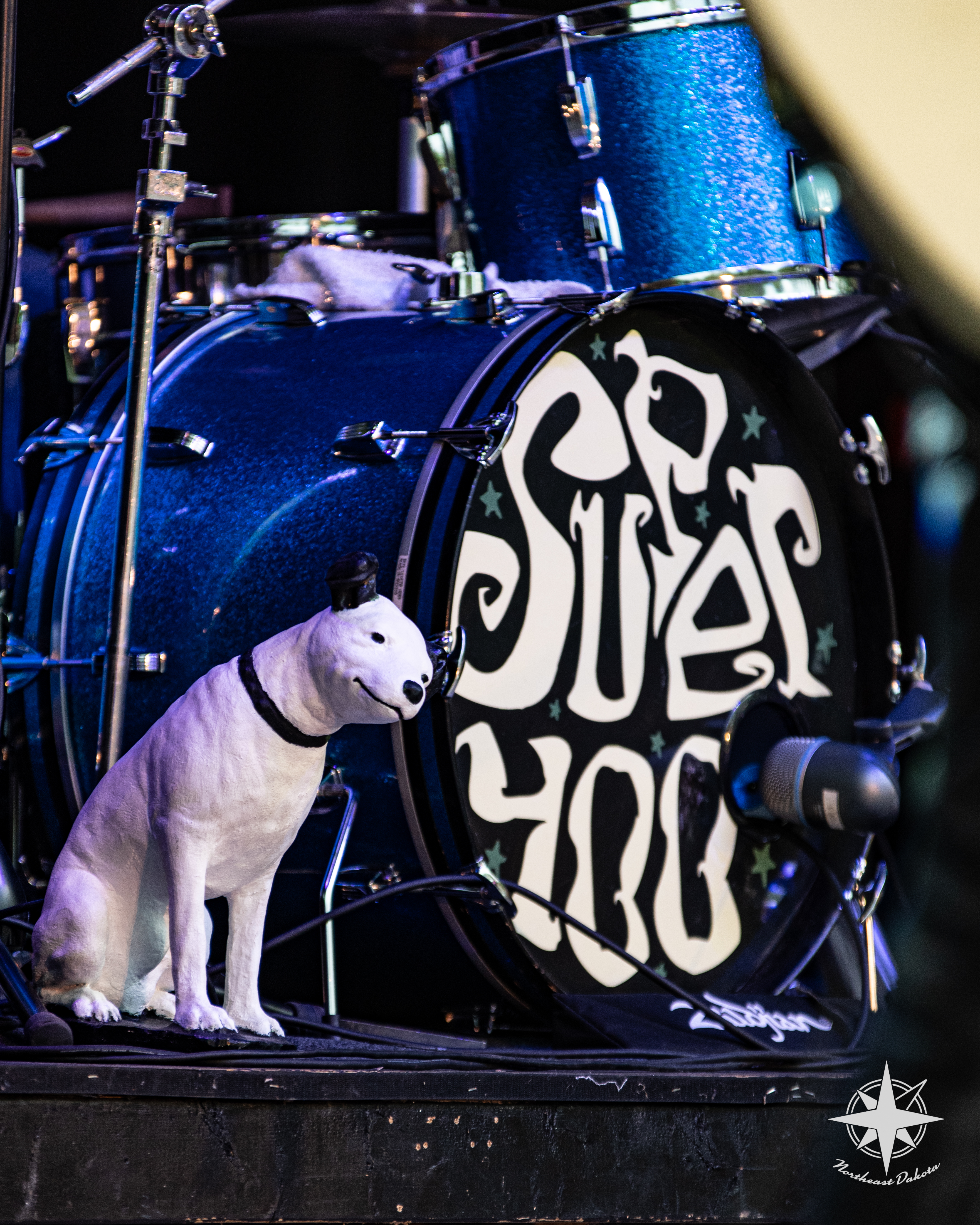
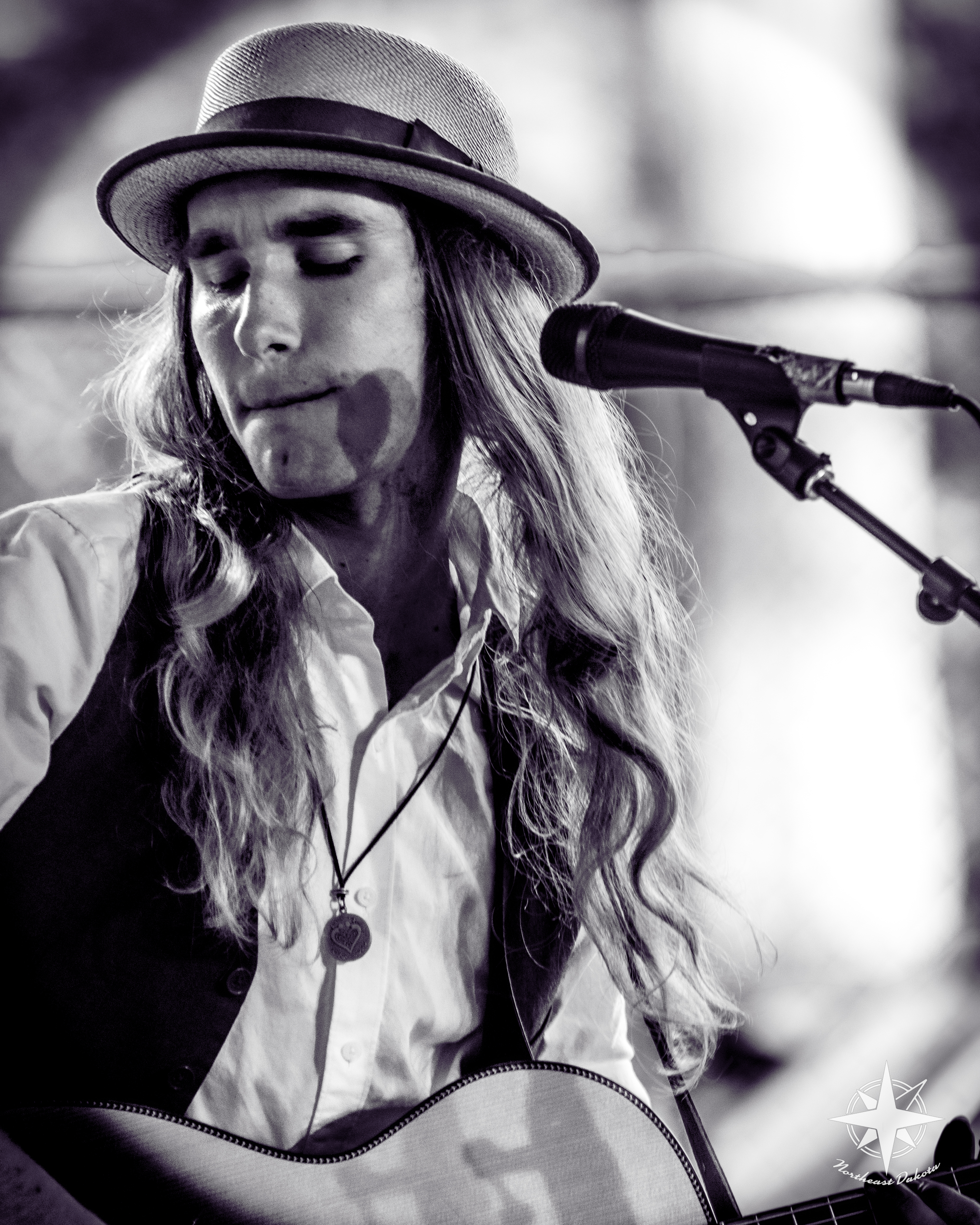
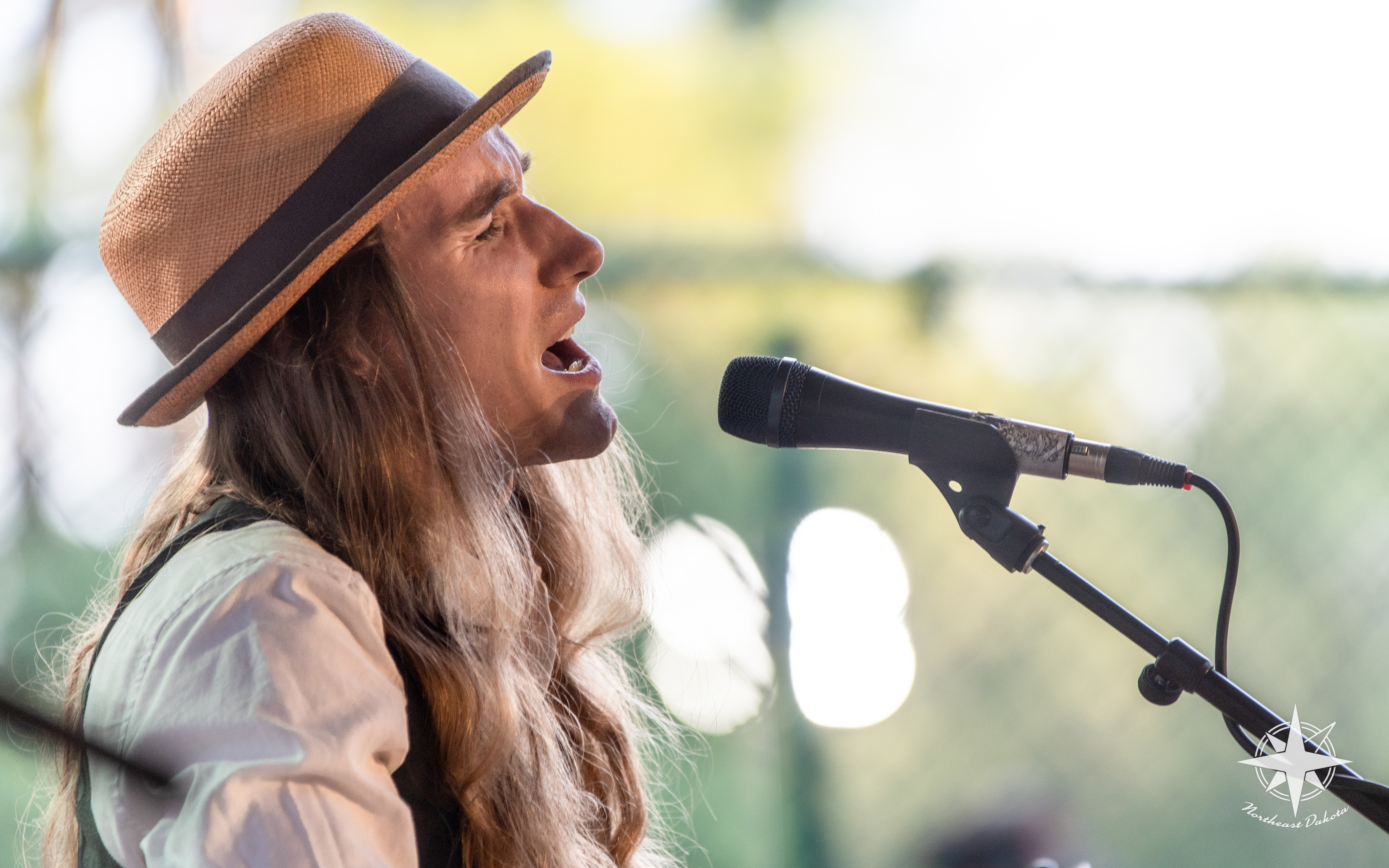
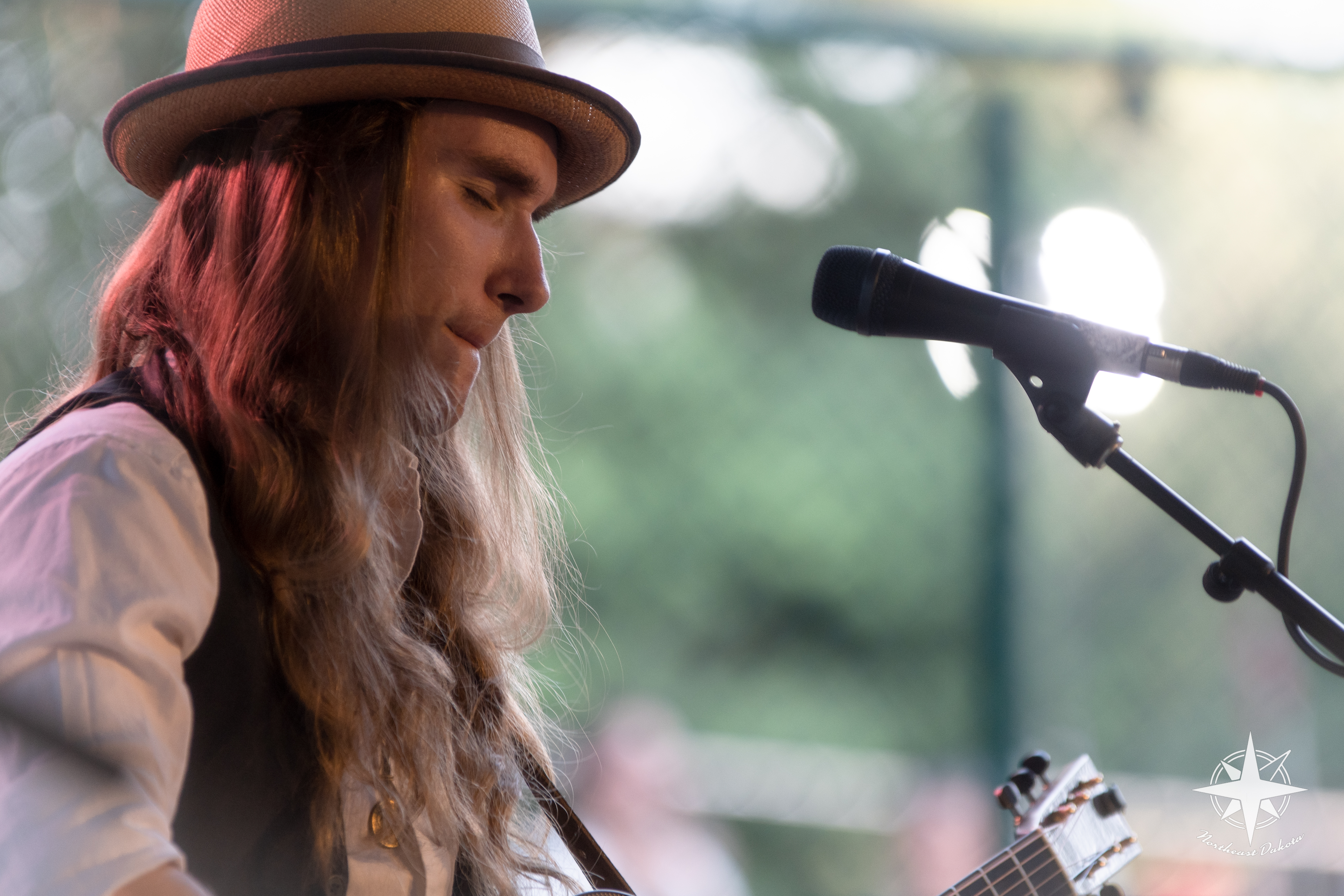
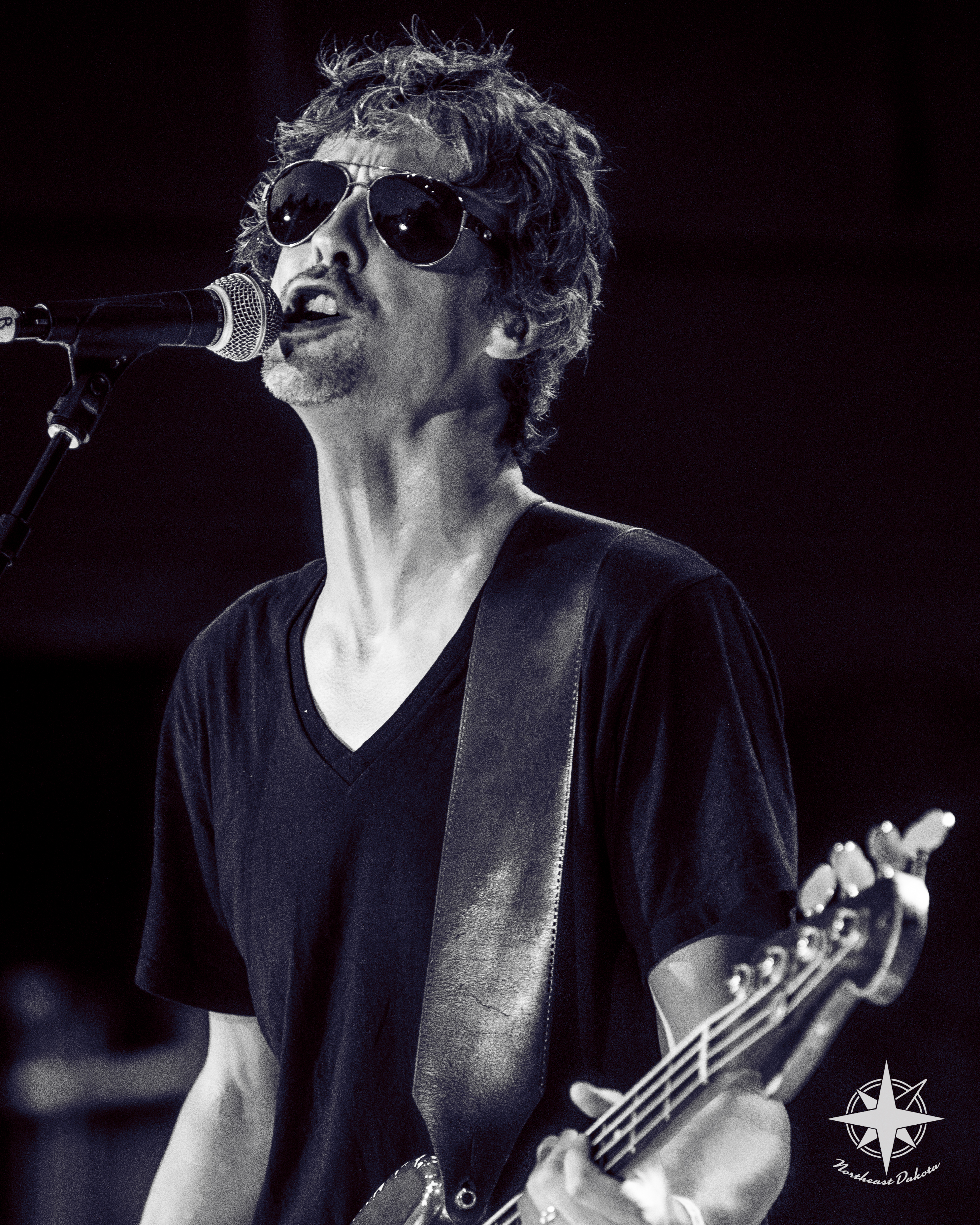
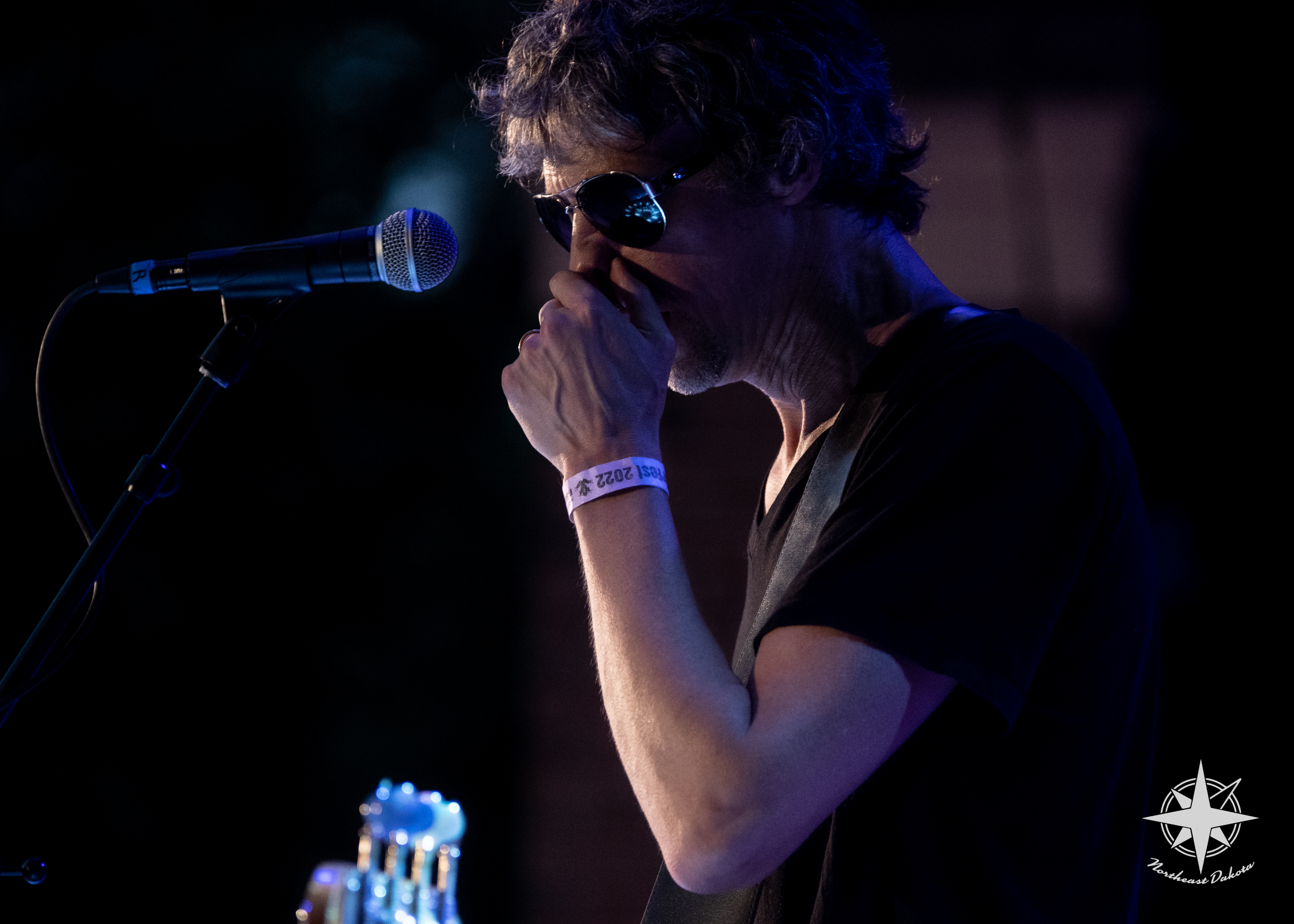
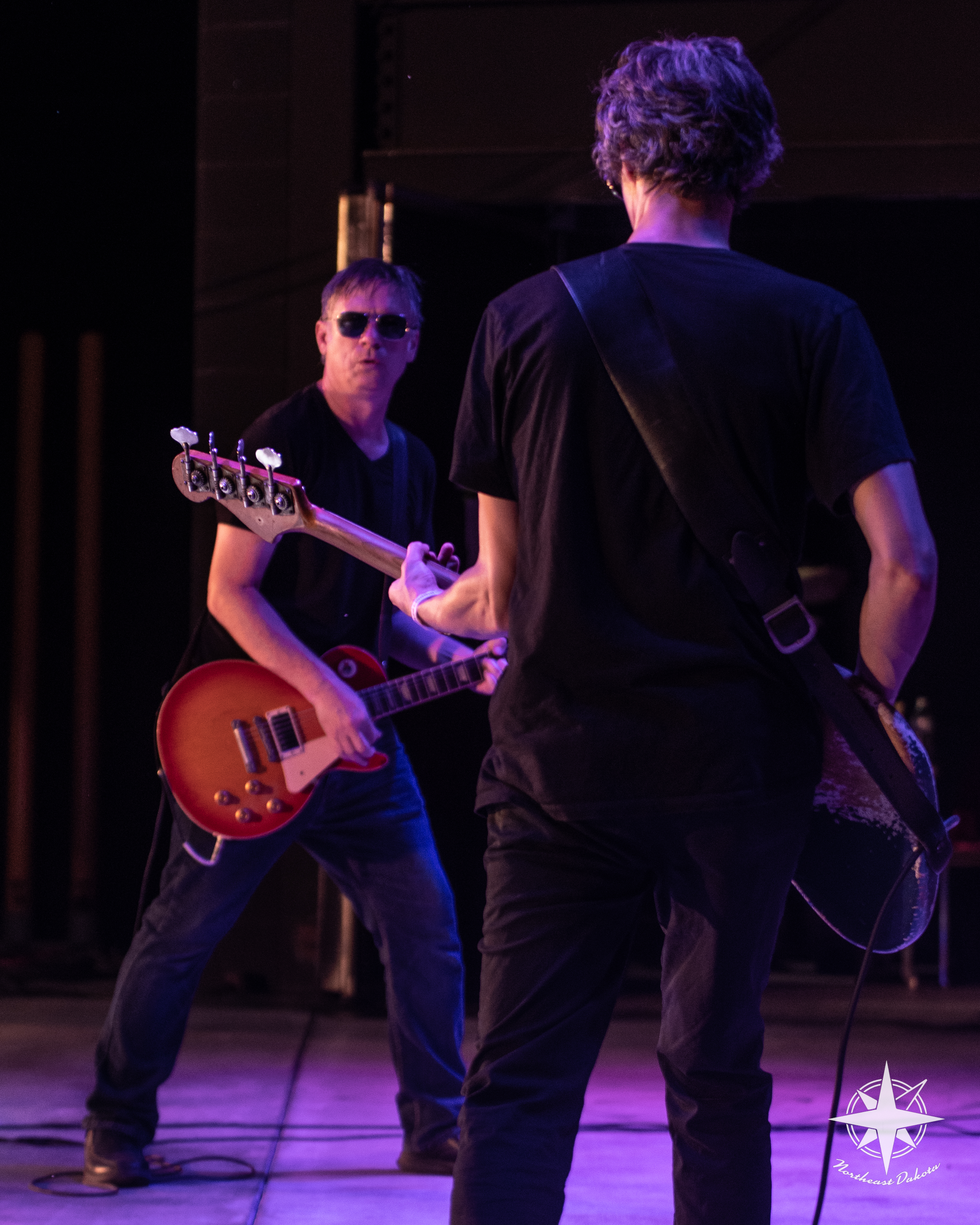
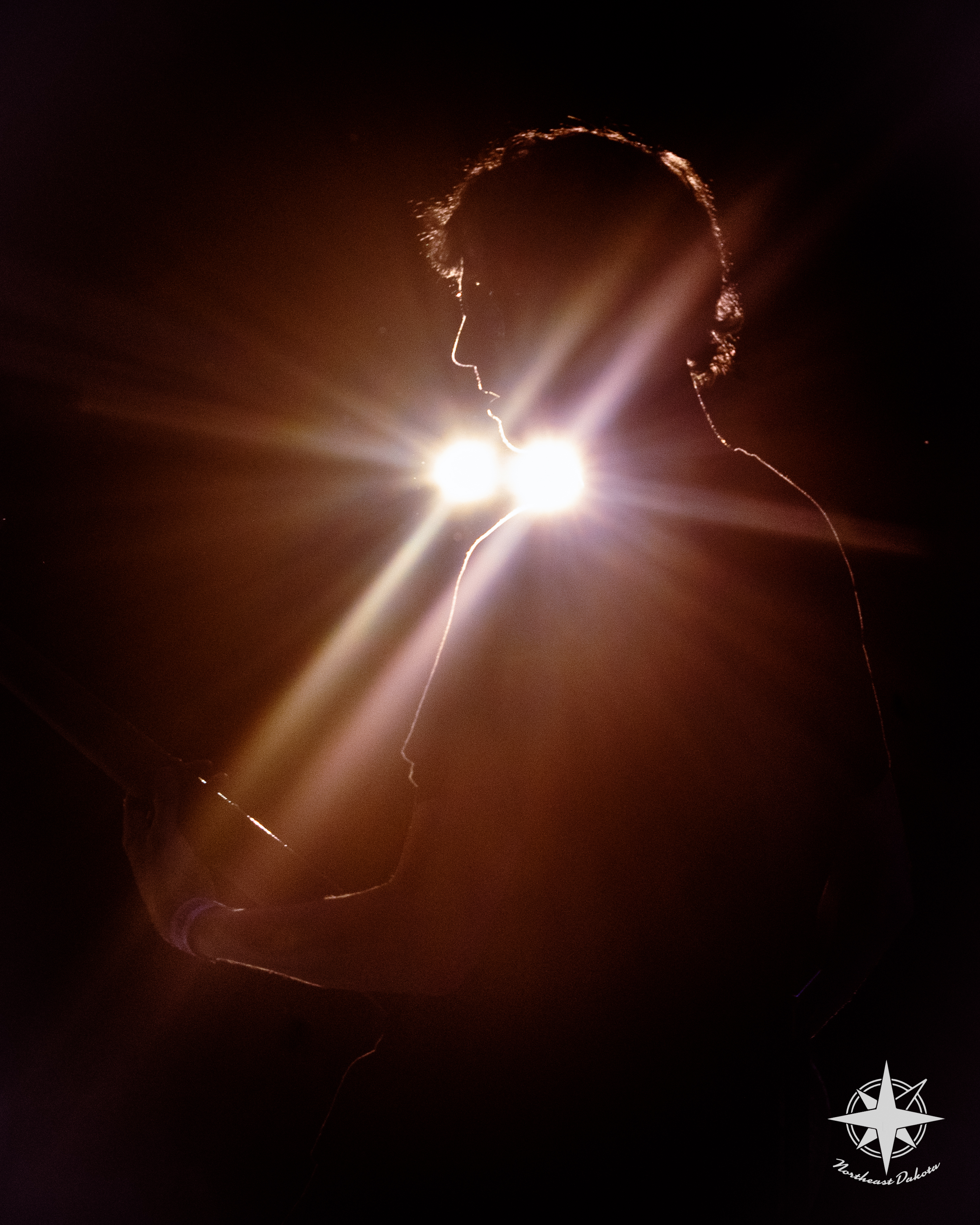
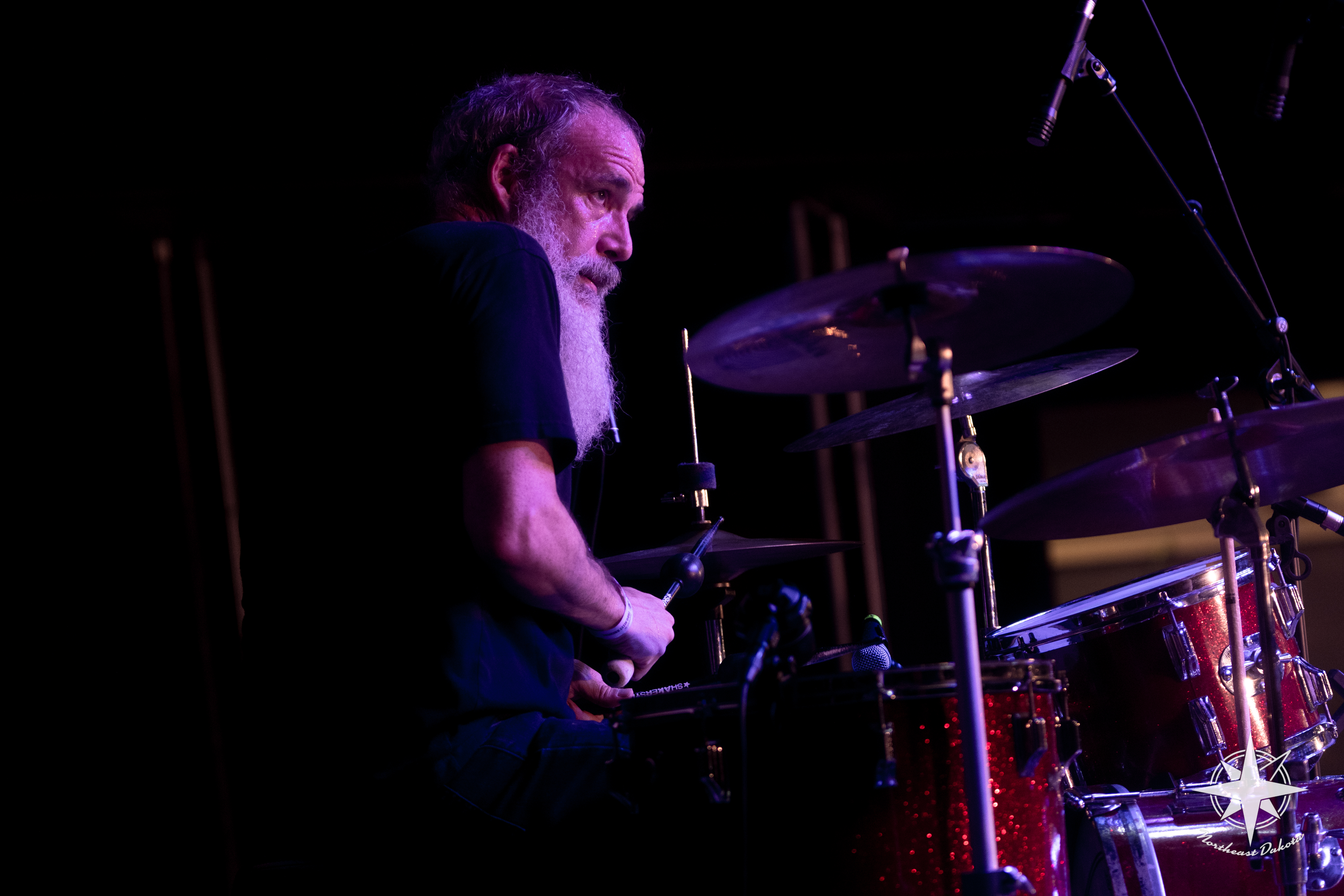
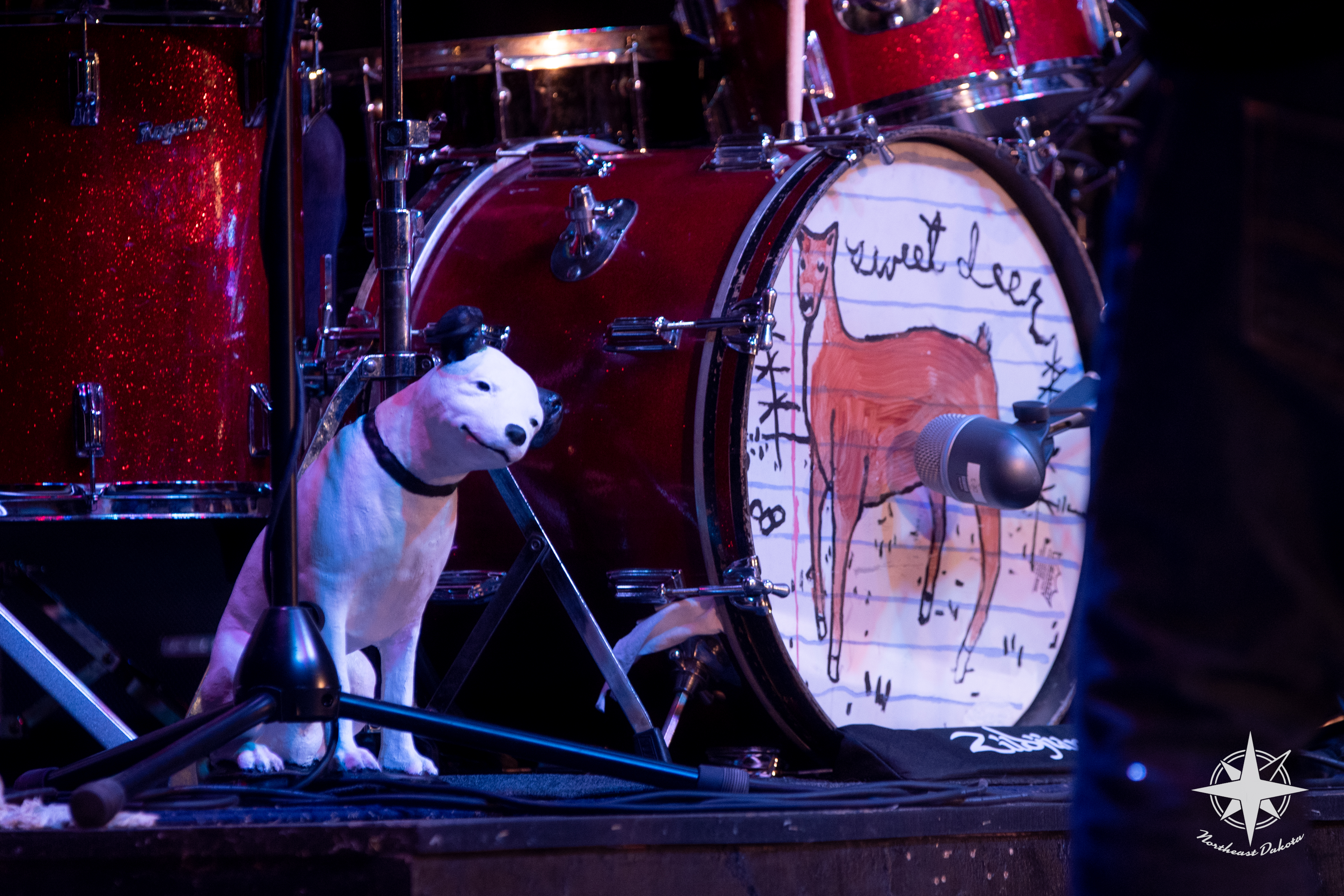
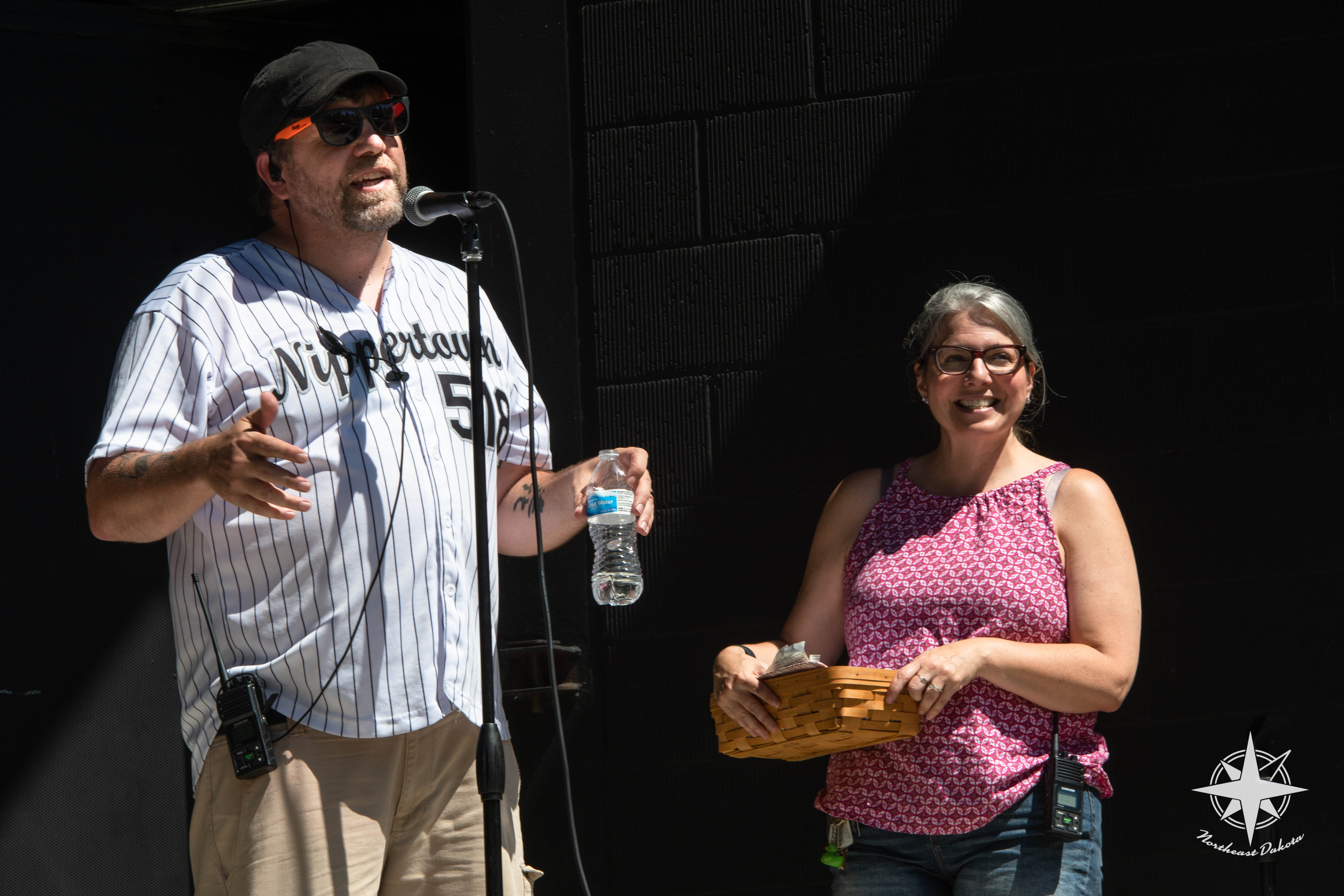
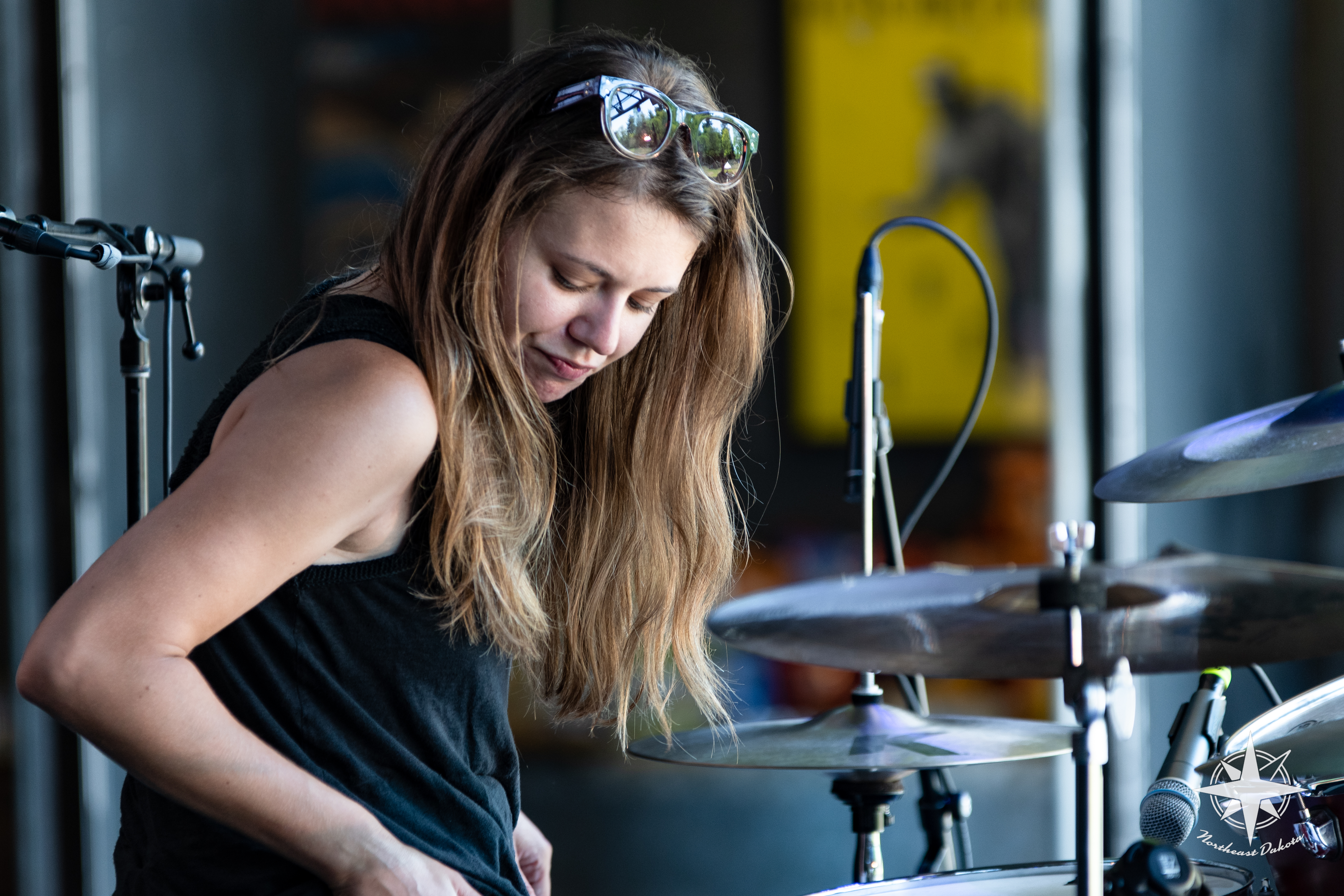
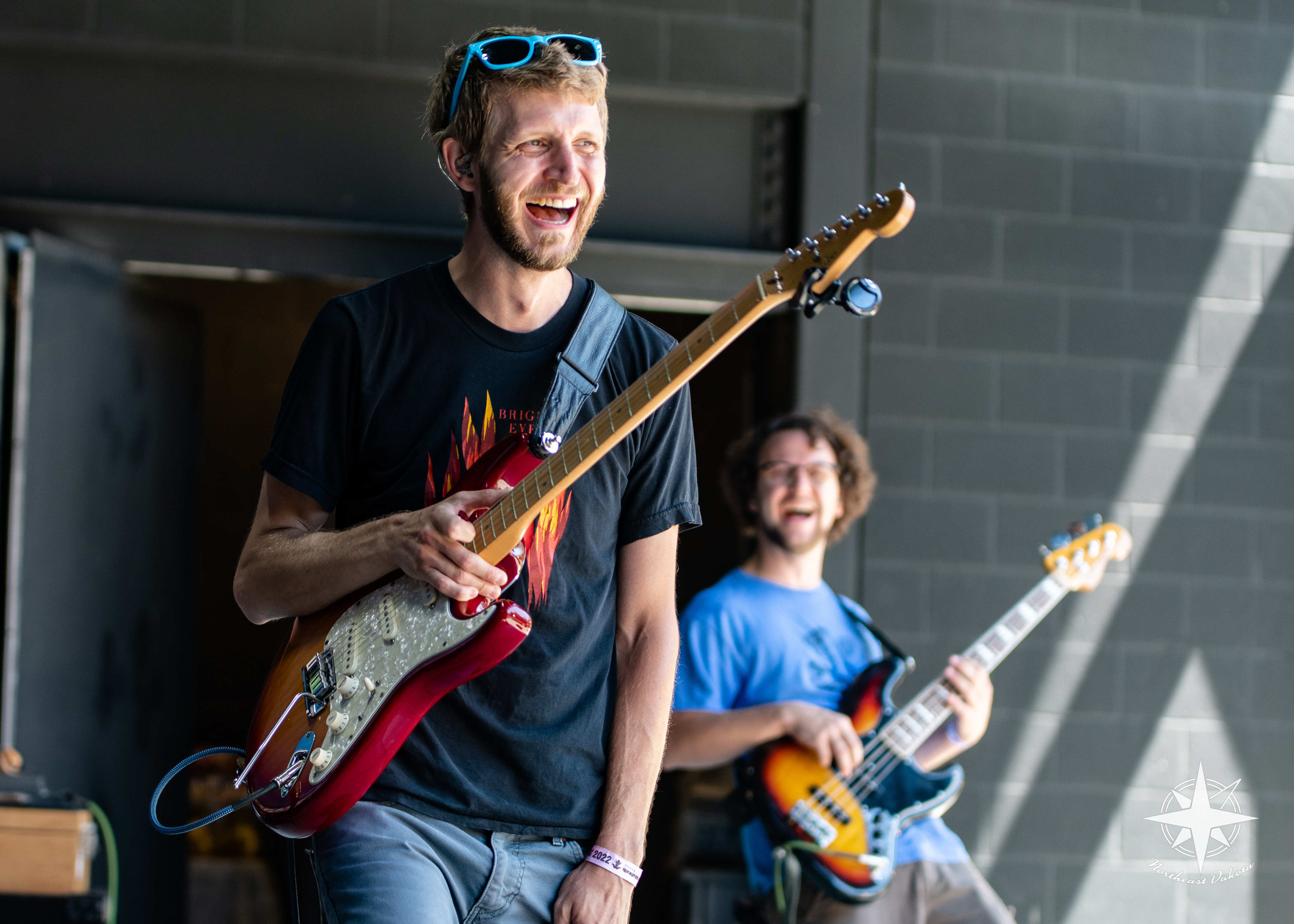
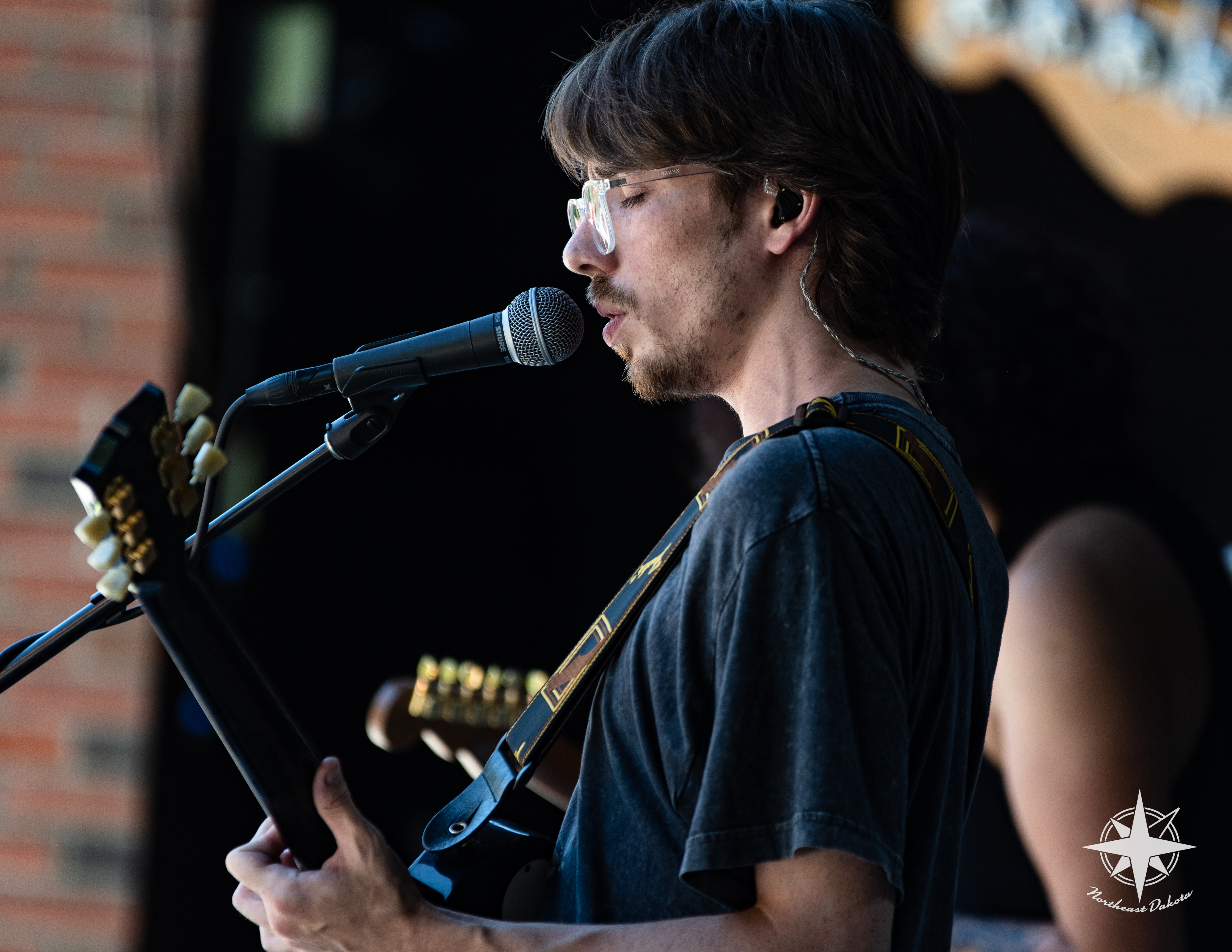
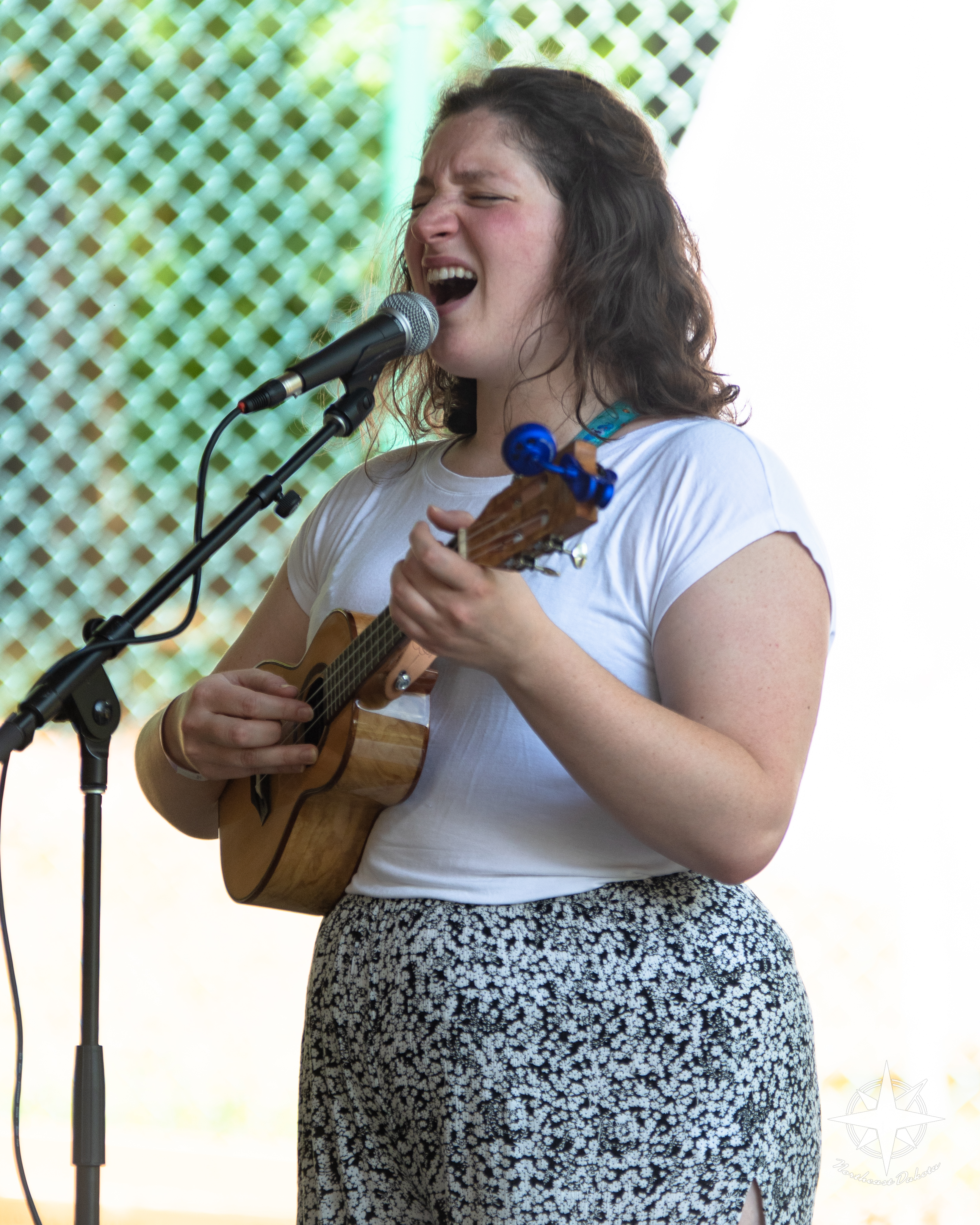
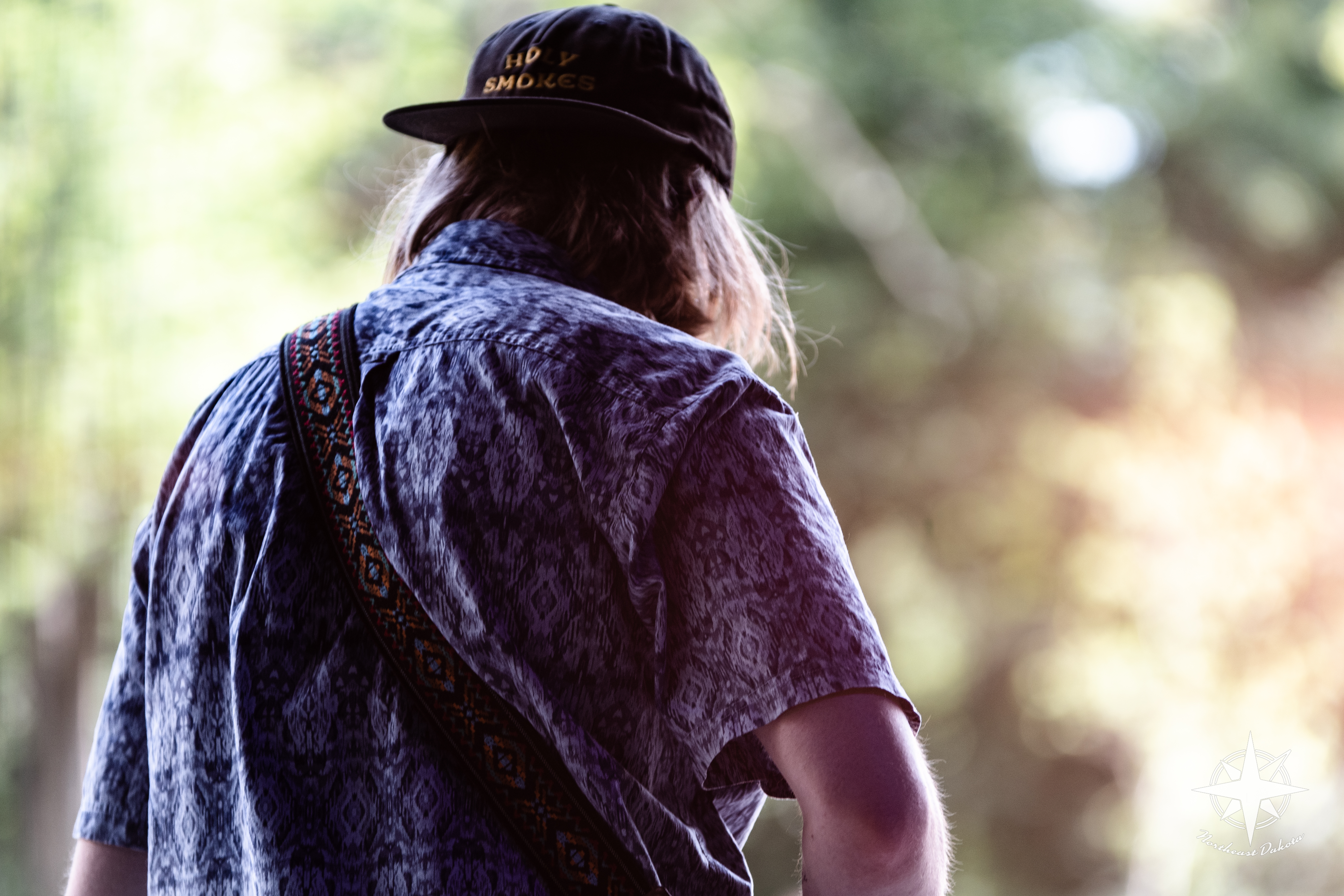
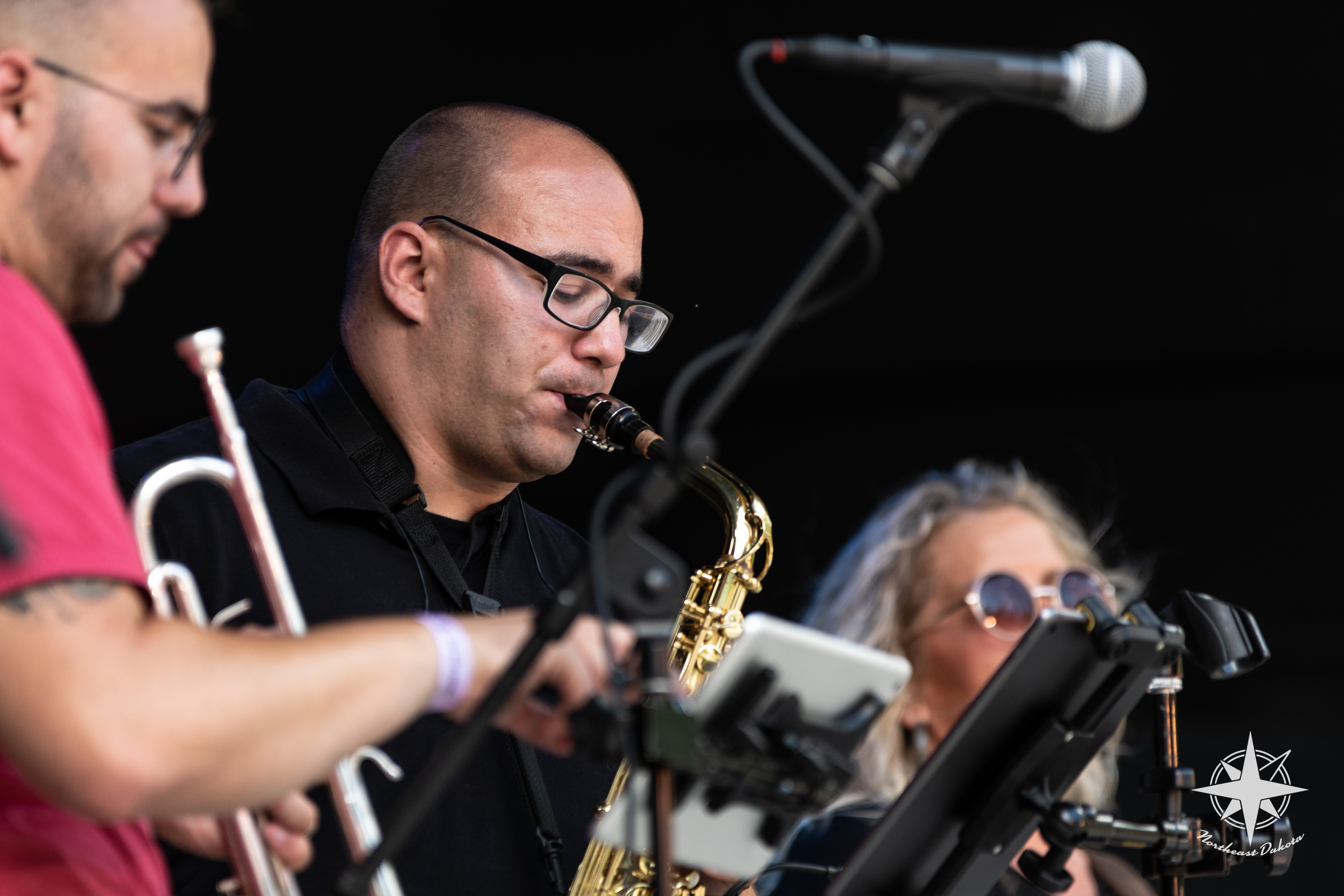
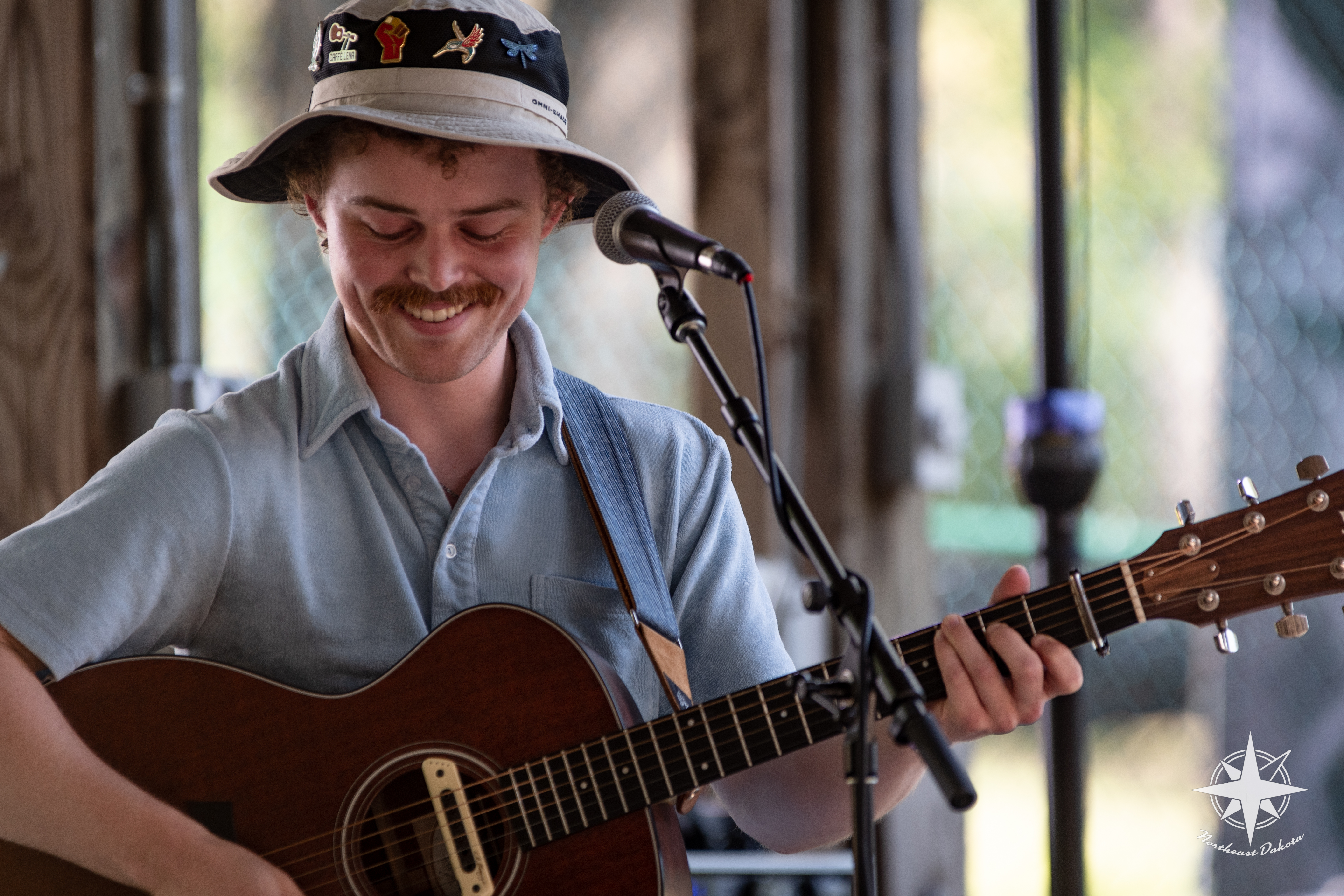
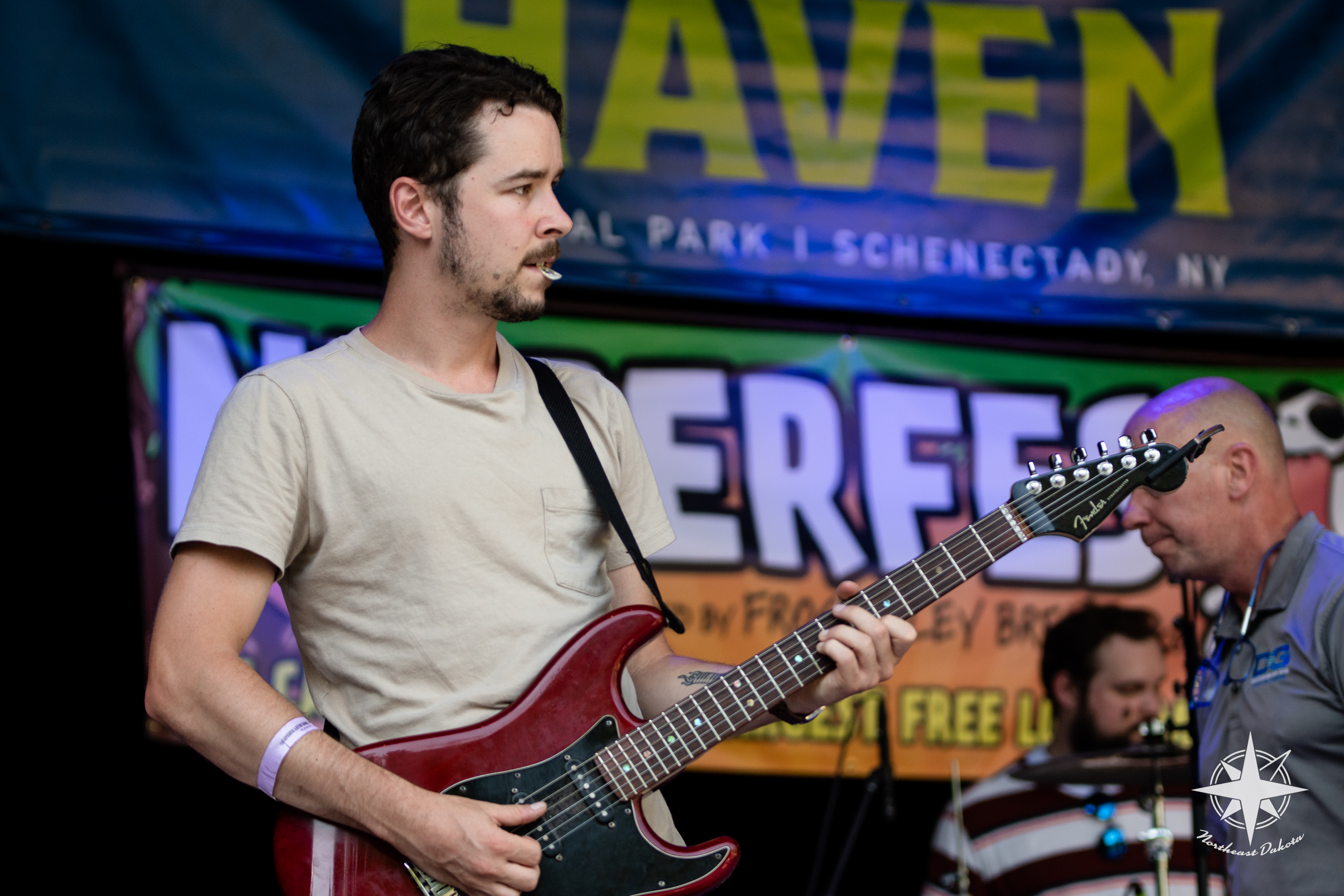
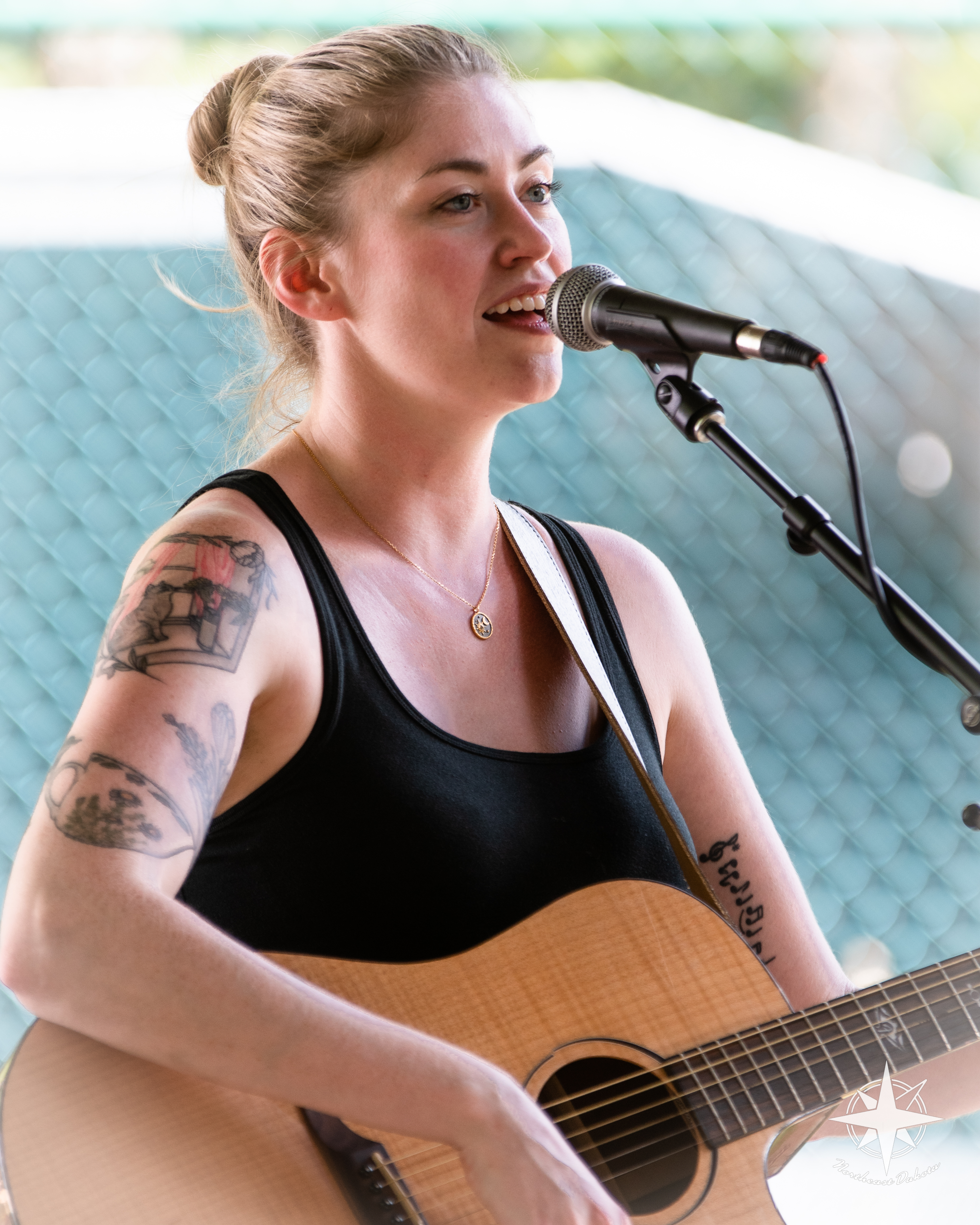
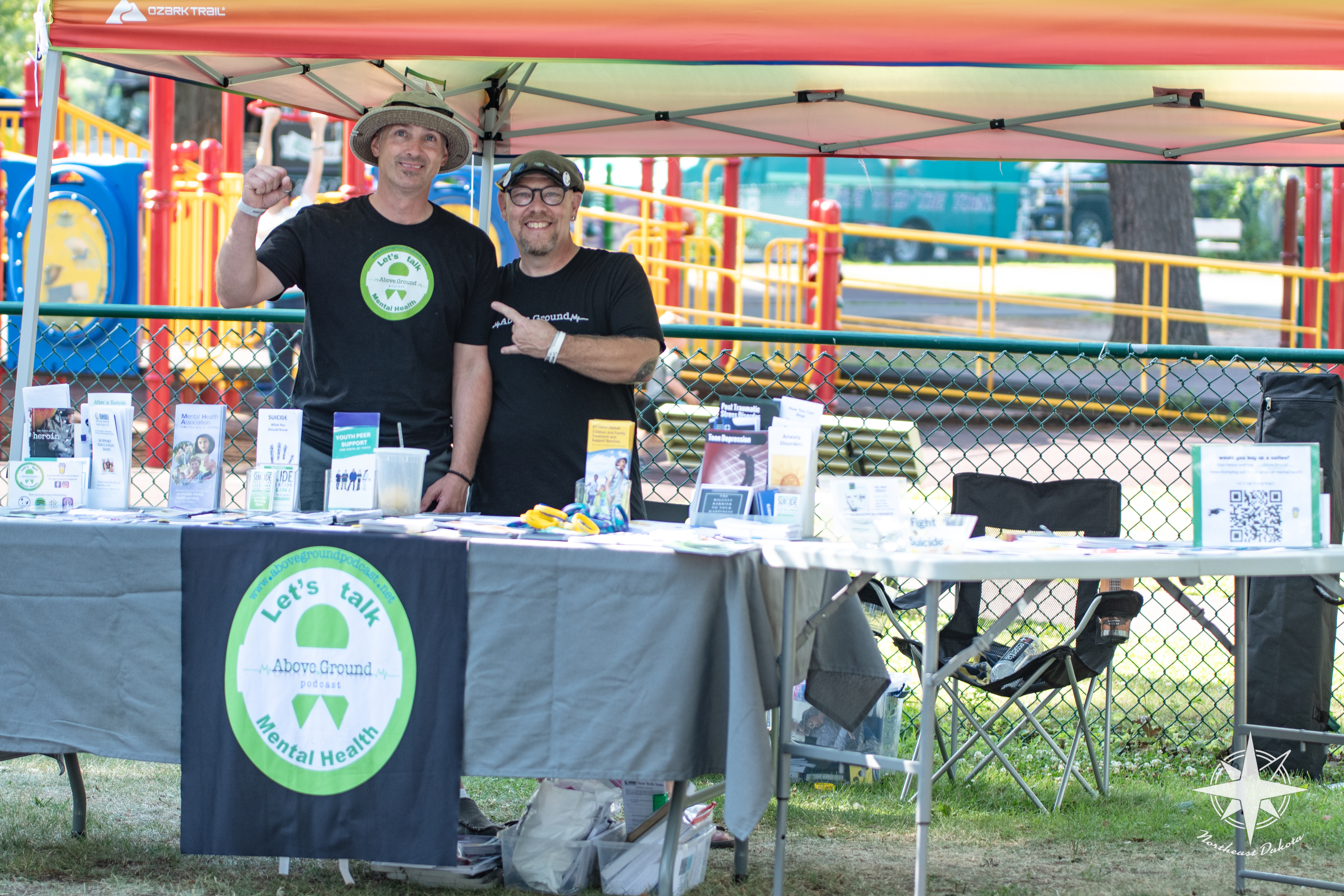
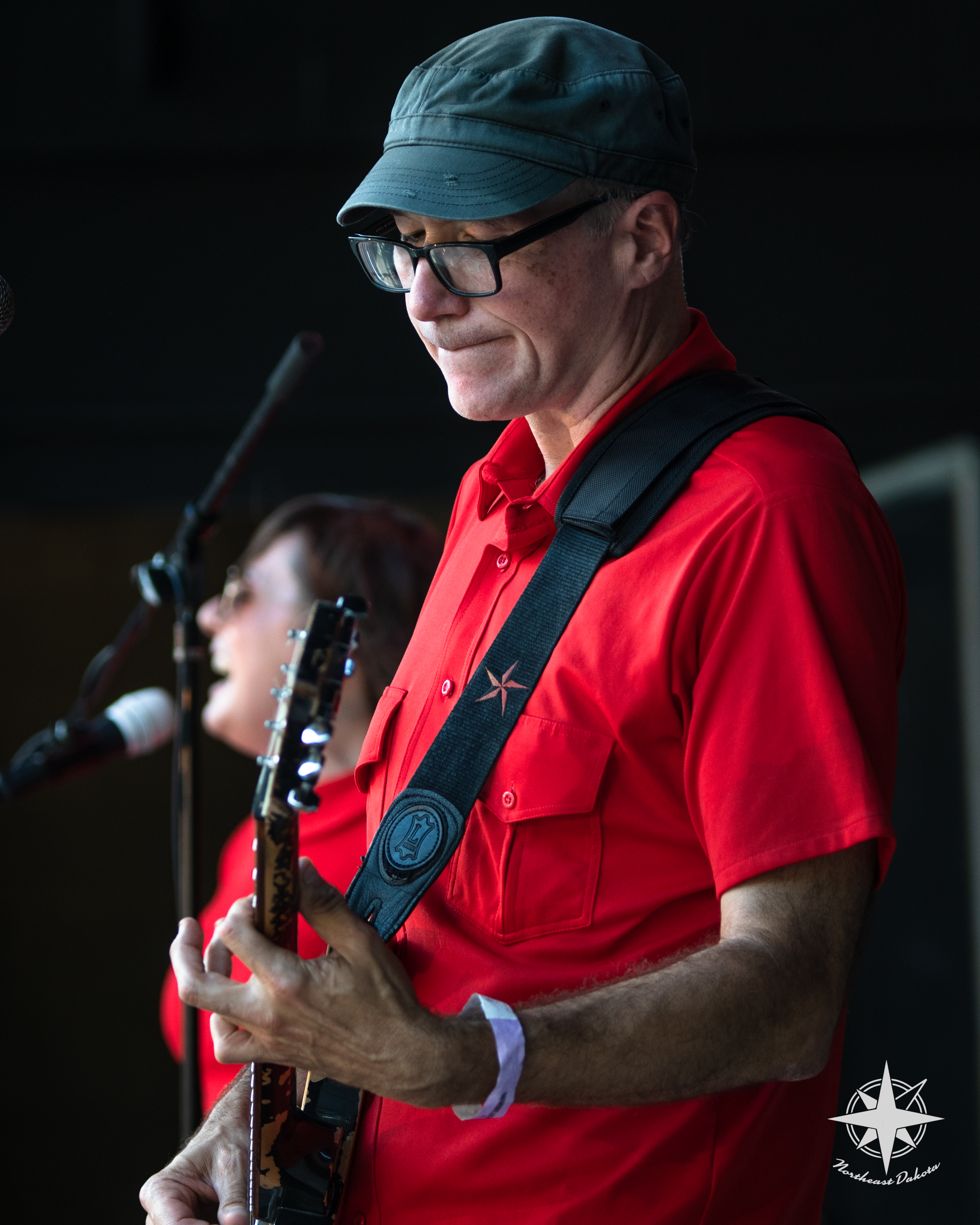
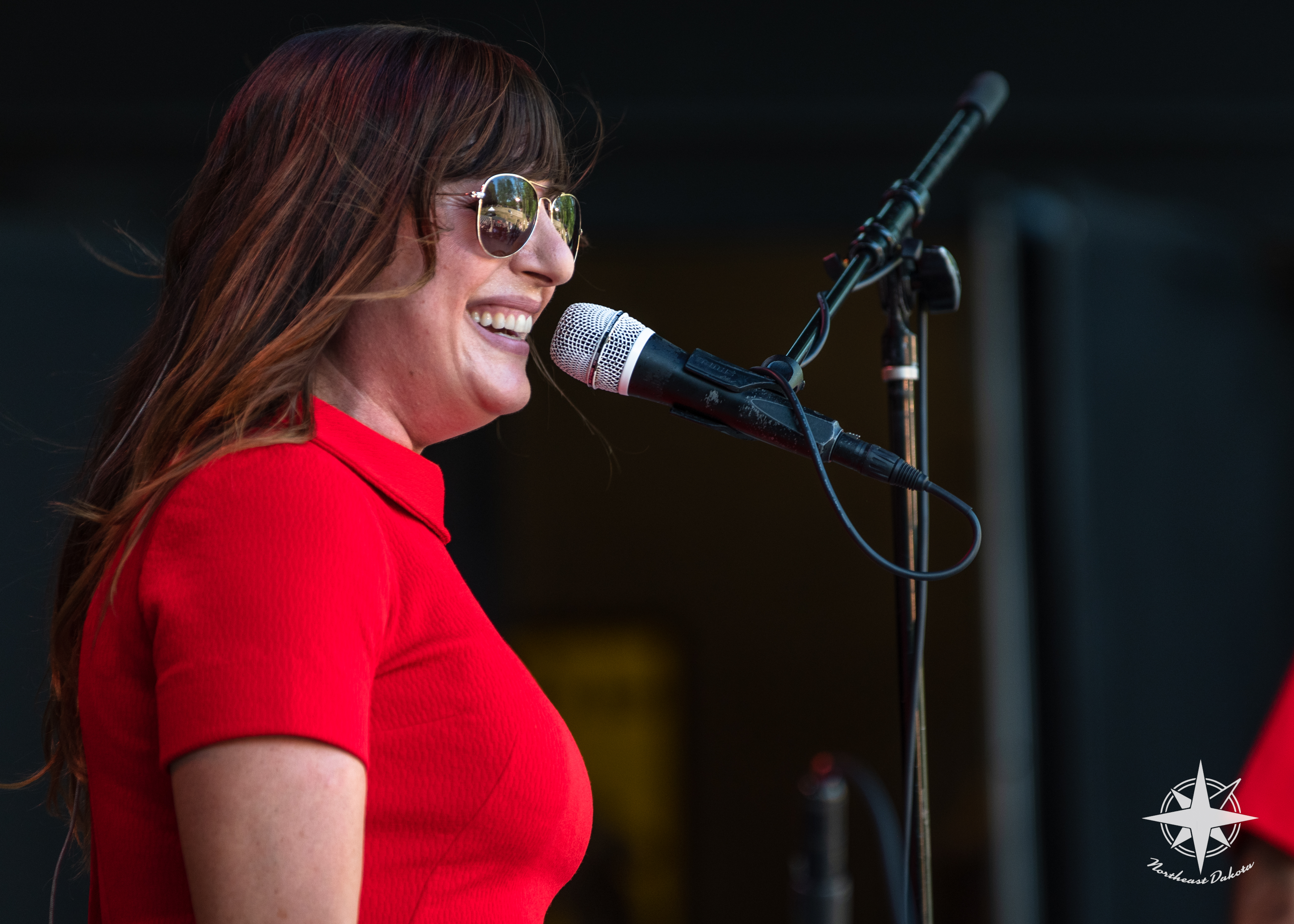
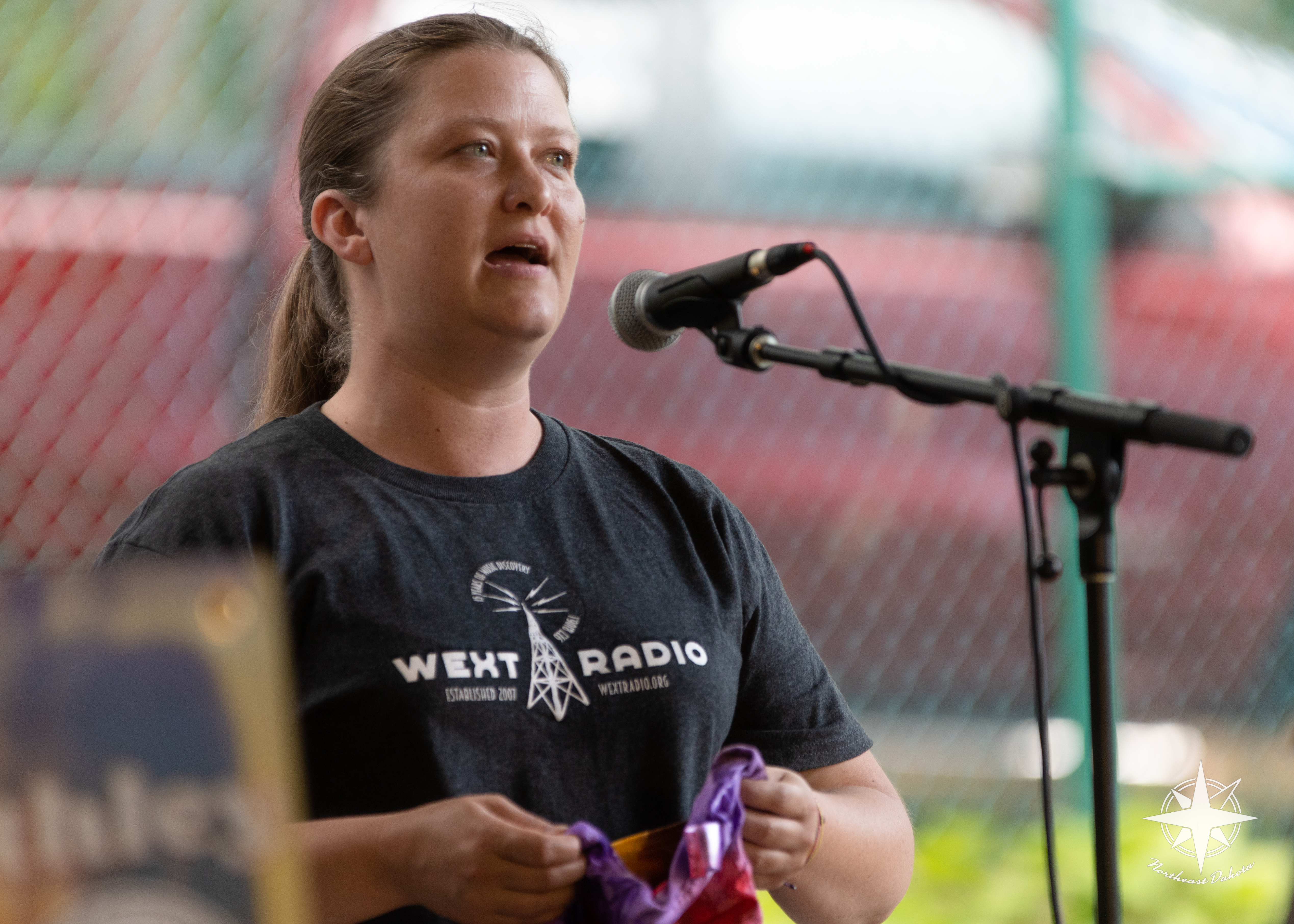
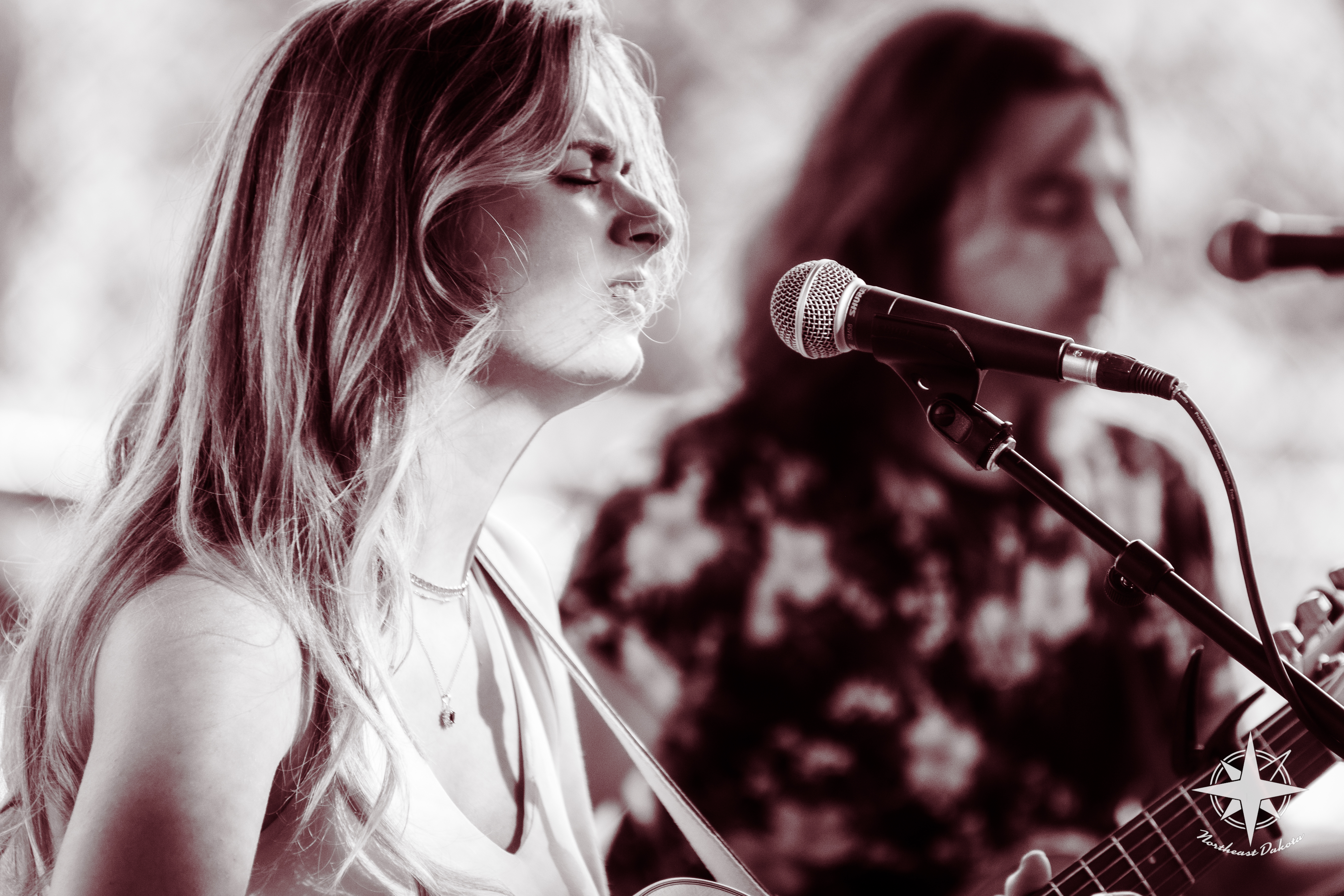
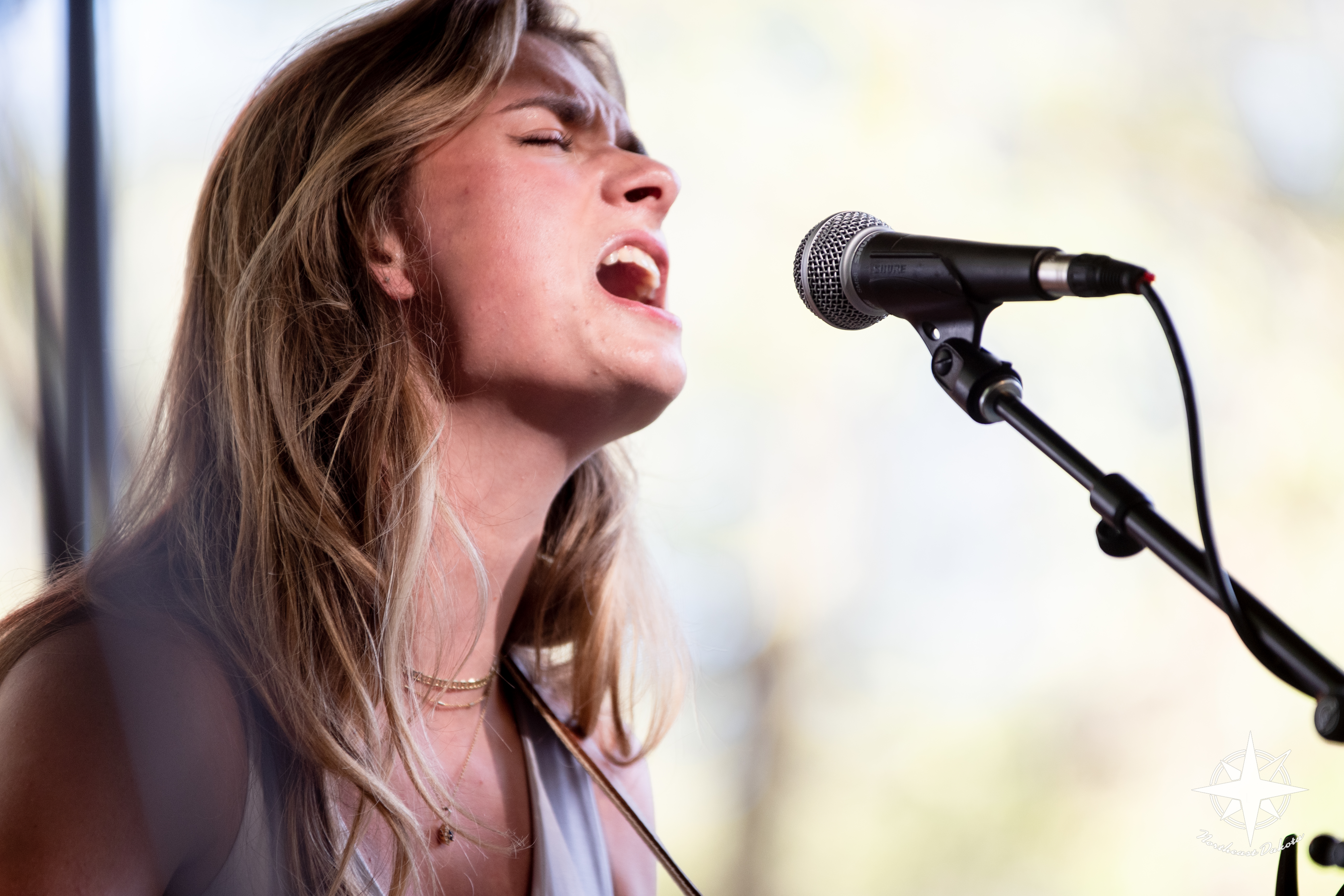
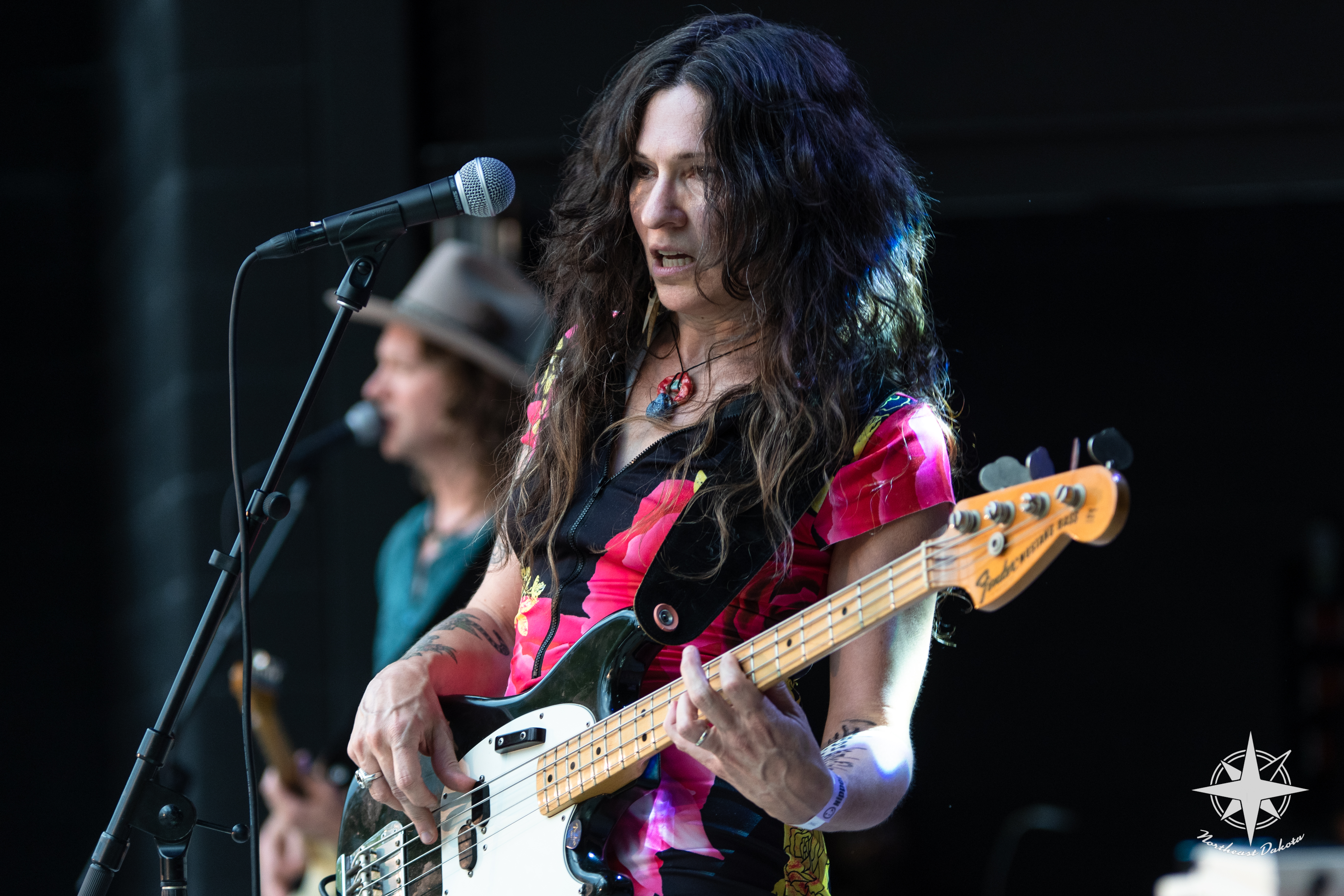
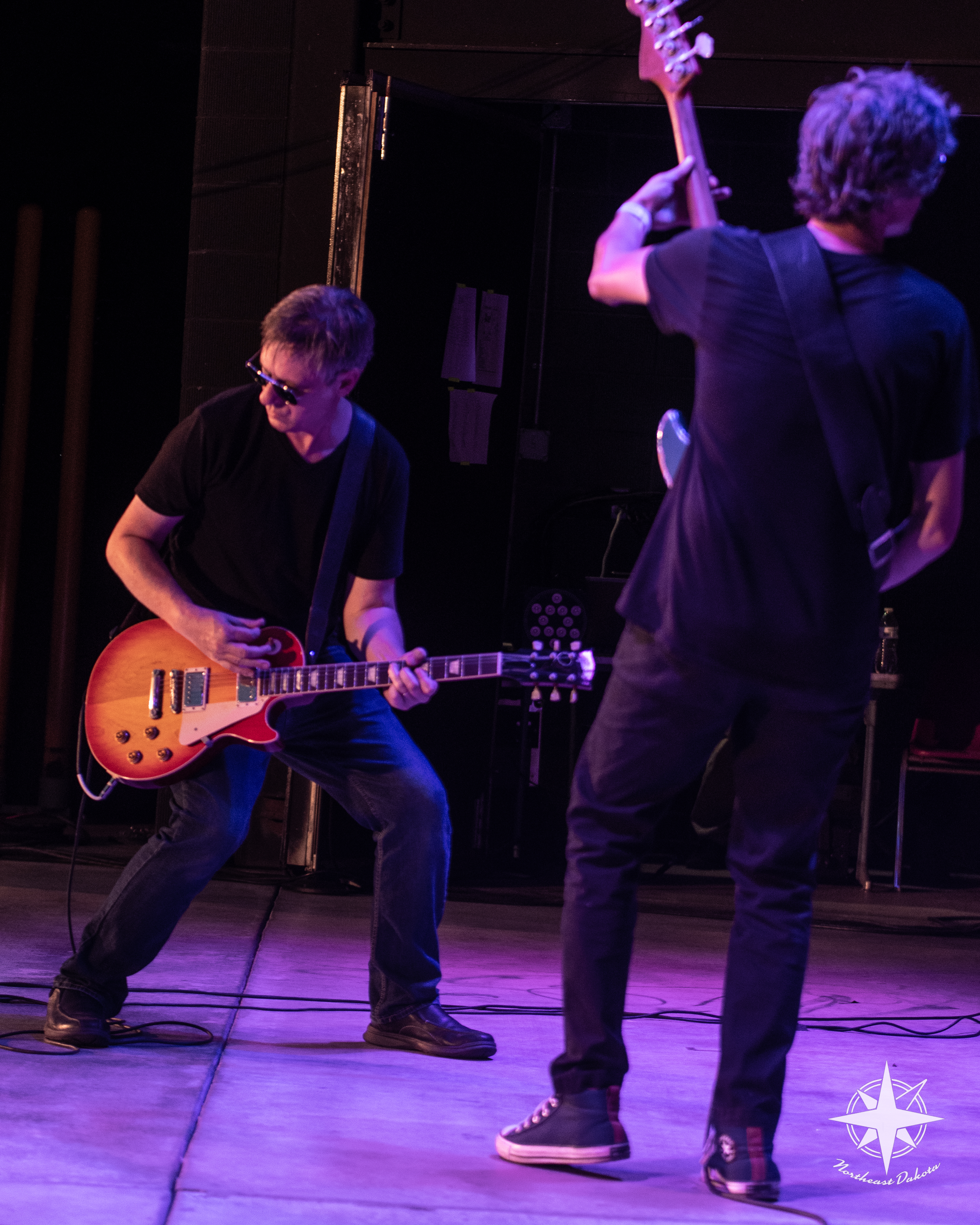
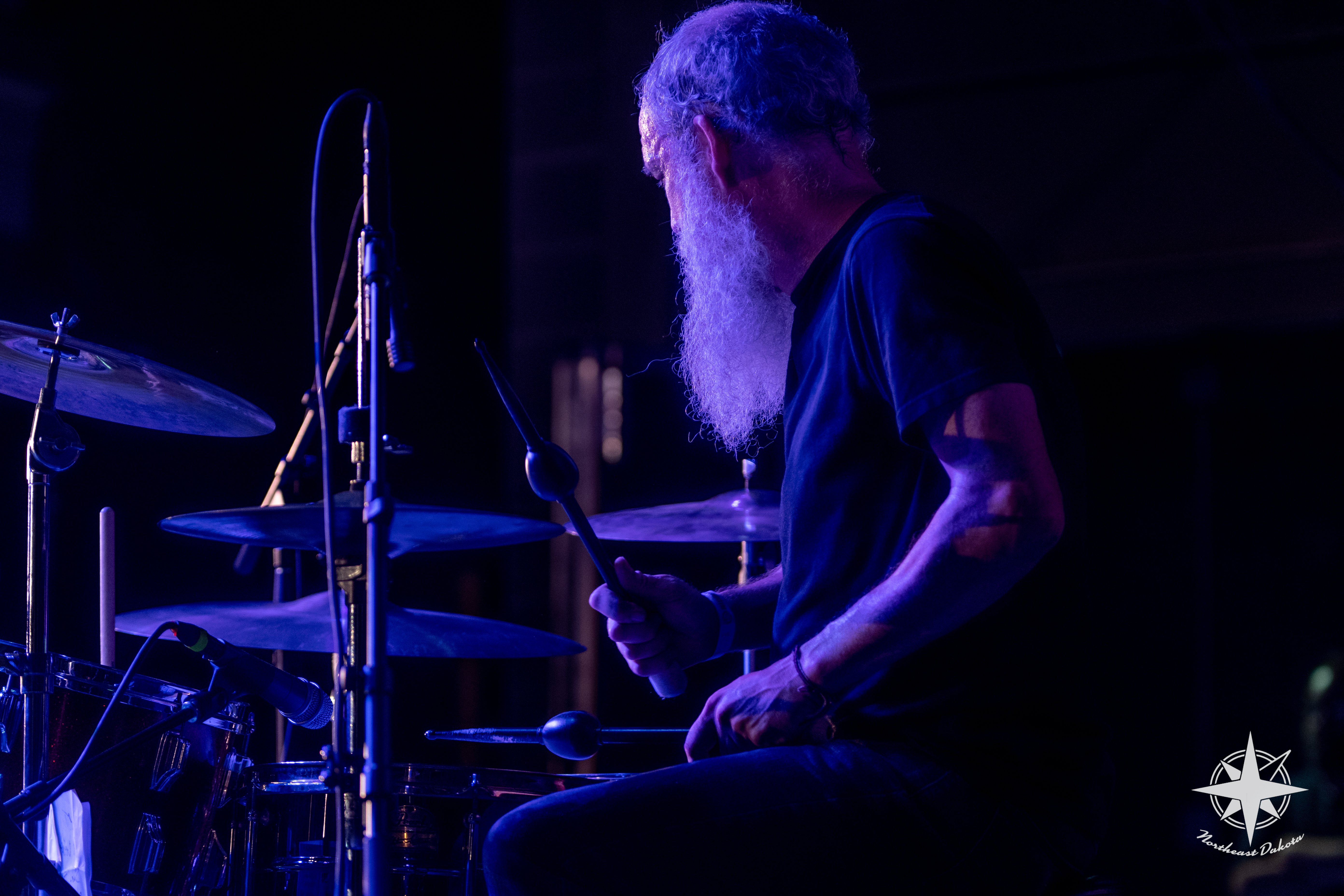
Michael-Great work on the review! Amazed that your pen didn’t melt after the second act!
Dakota-Wonderful photos! Great coverage of the event!